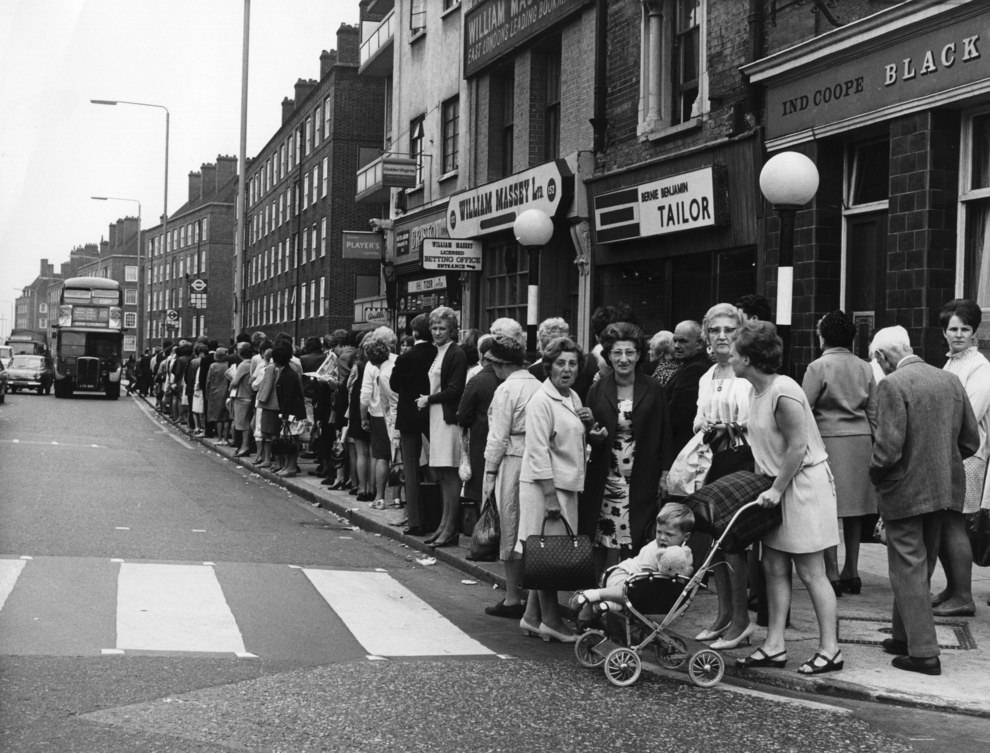The idea of an underground public rapid transit system for Londoners was proposed in the 1830s, and the permission to build this system was granted in 1854. A test tunnel was built in 1855 in Kibblesworth, and it was used for two years. The first underground railway was opened in January 1863 between Paddington and Farringdon using gas-lit wooden carriages hauled by steam locomotives. It was hailed as a success, carrying 38,000 passengers on an opening day. The deepest Underground station is Hampstead; the station was opened in 1907. It is located about 192 feet below the street level. These stunning photographs give a glimpse of the astonishing journey of an Underground London starting from the construction of underground railway lines in the 1860s.
#1 Construction site to the west of Waterloo Bridge, 1866-1870
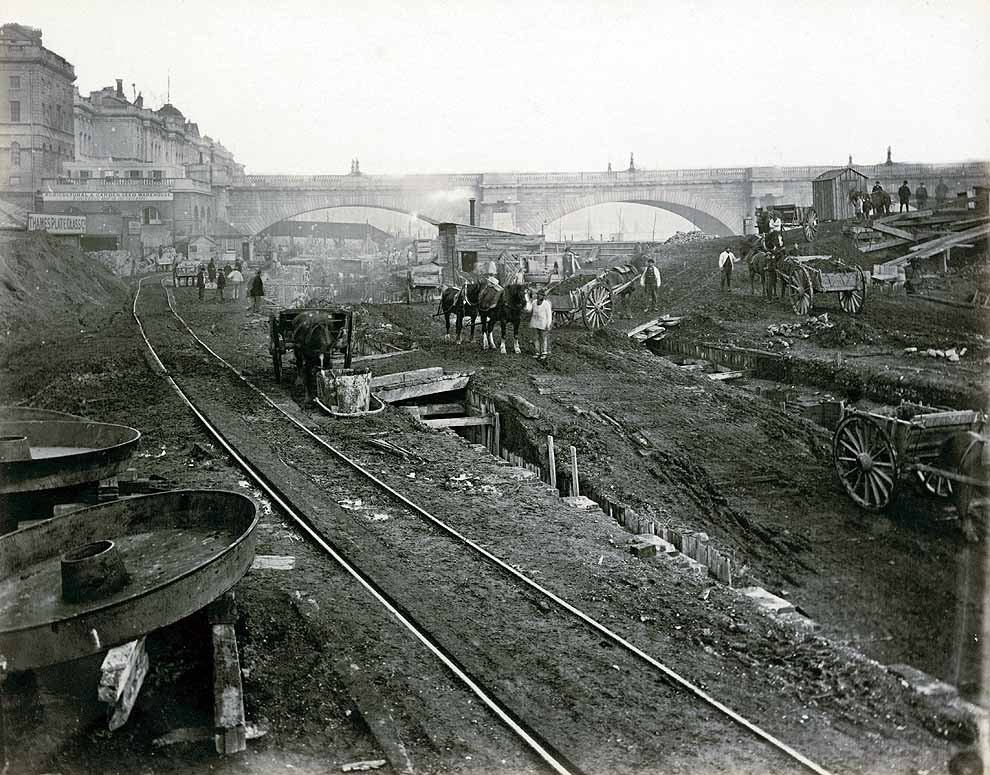
#2 Building the Metropolitan District Railway, 1867
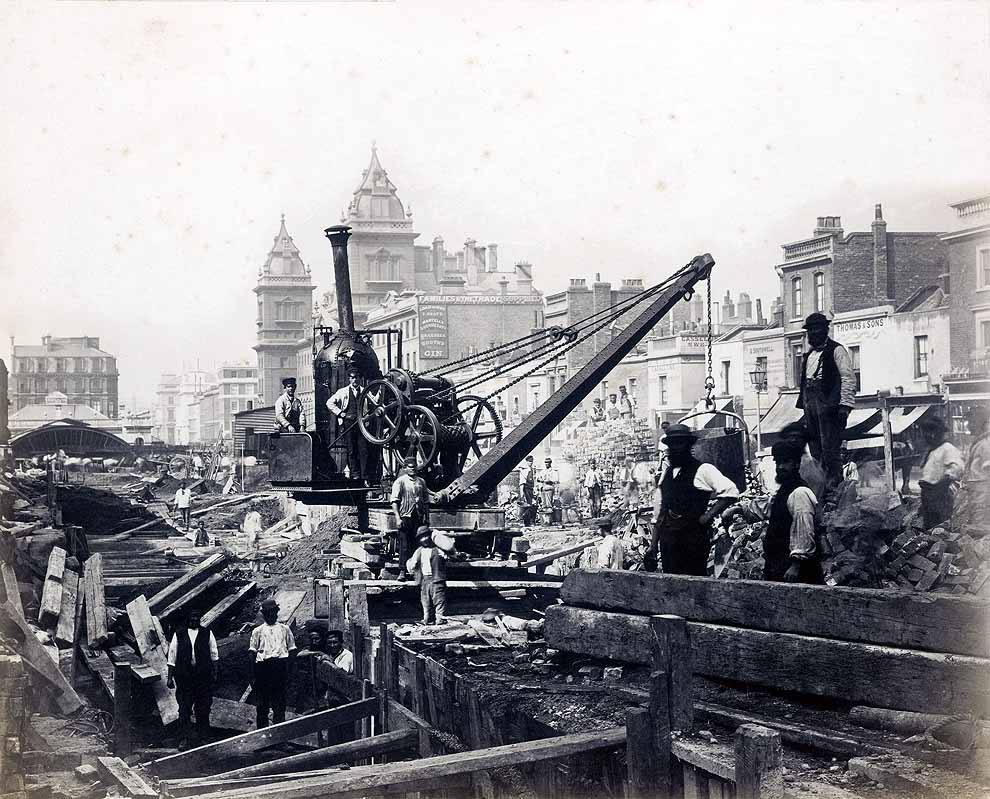
#3 Construction work on the site of Blackfriars Station
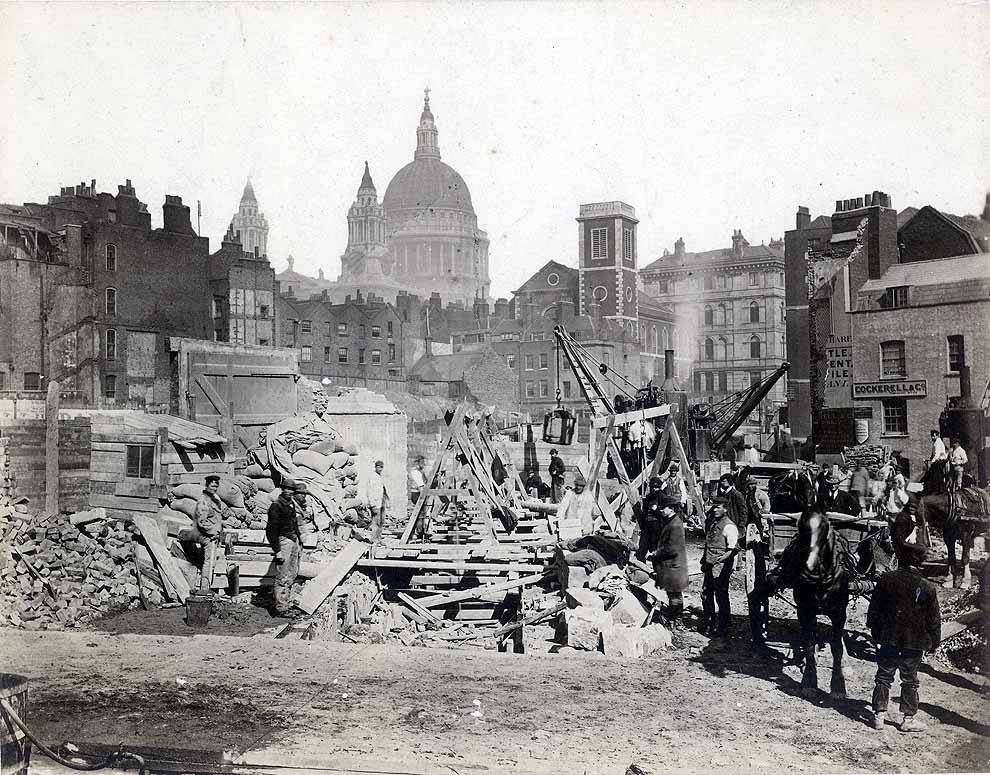
#4 Paddington Station in 1868, the year it opened
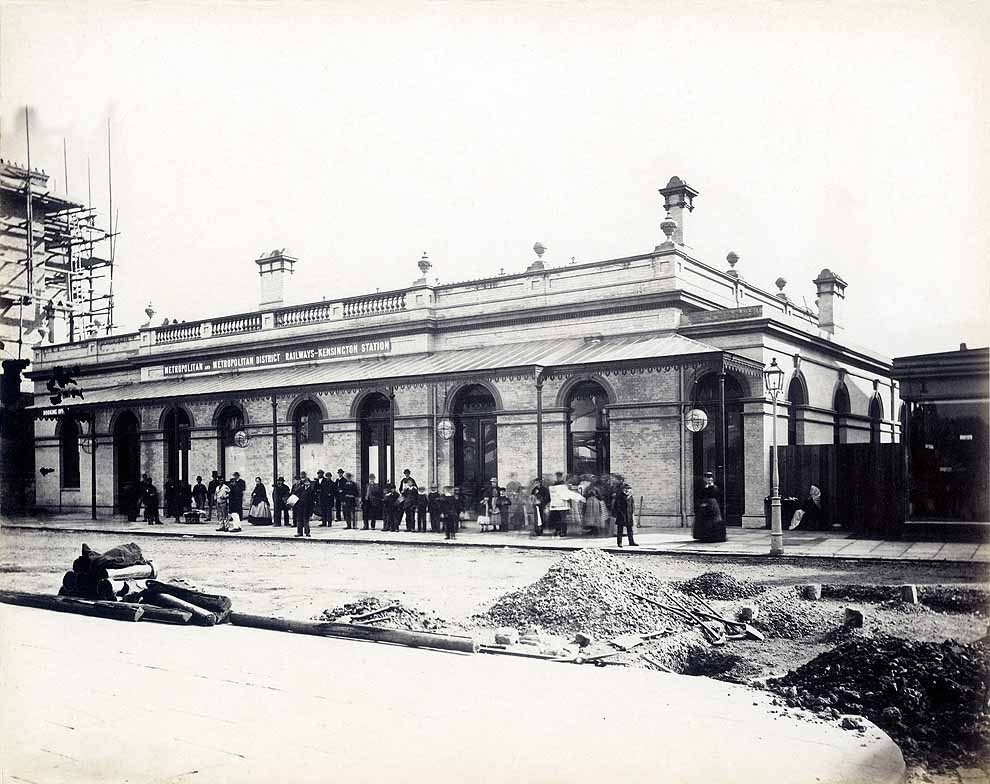
#5 Bayswater Station, just after completion
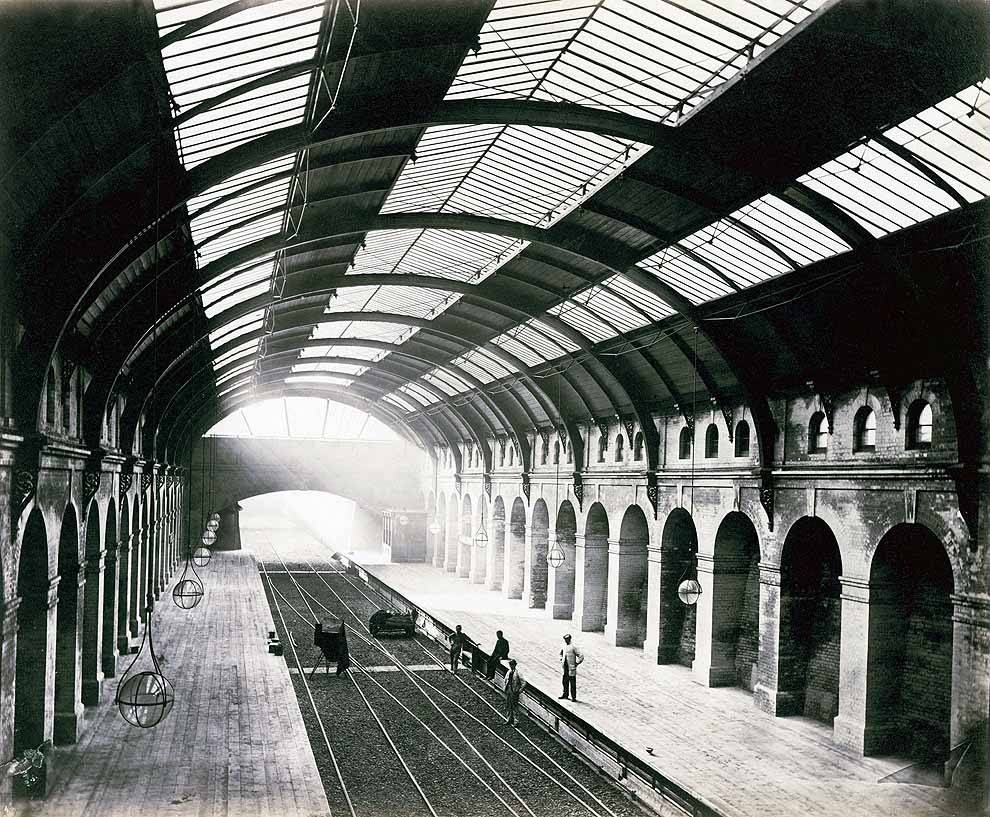
#6 Gloucester Road Station under construction, 1866
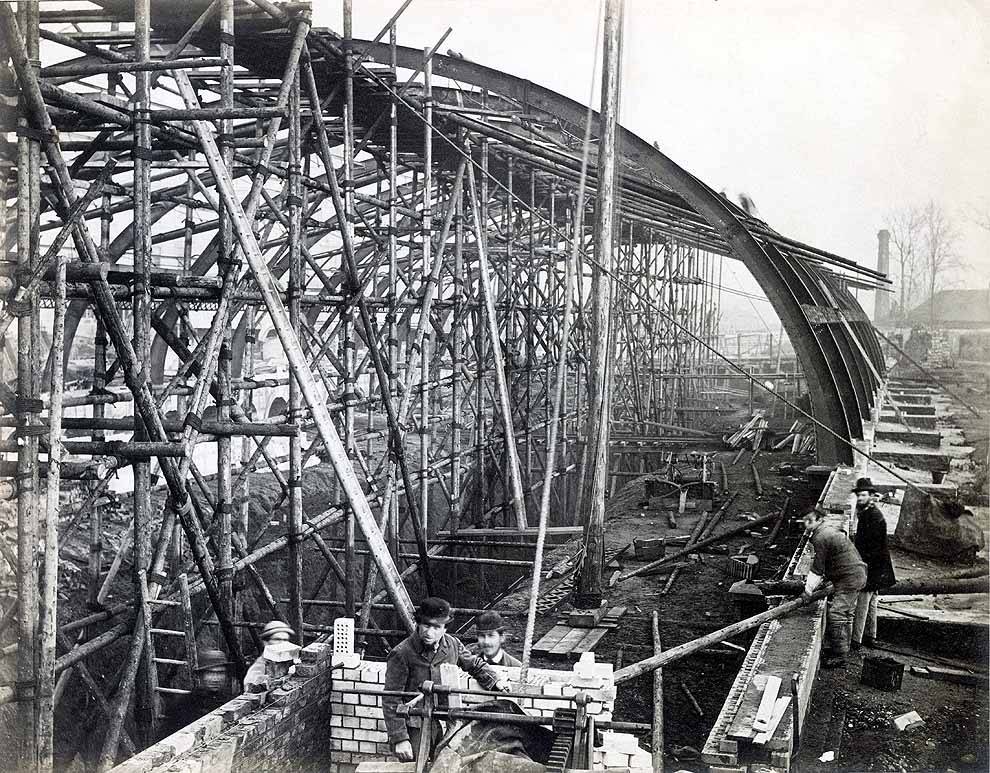
#7 Notting Hill Gate Station
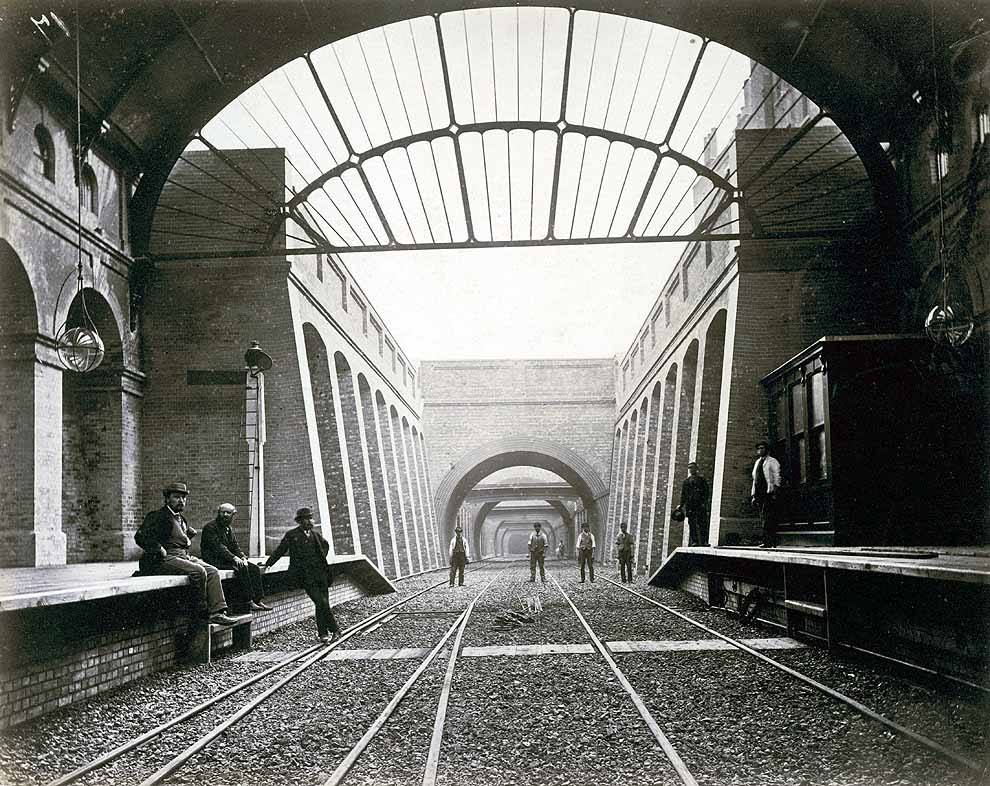
#8 District Line construction outside Somerset House, 1869
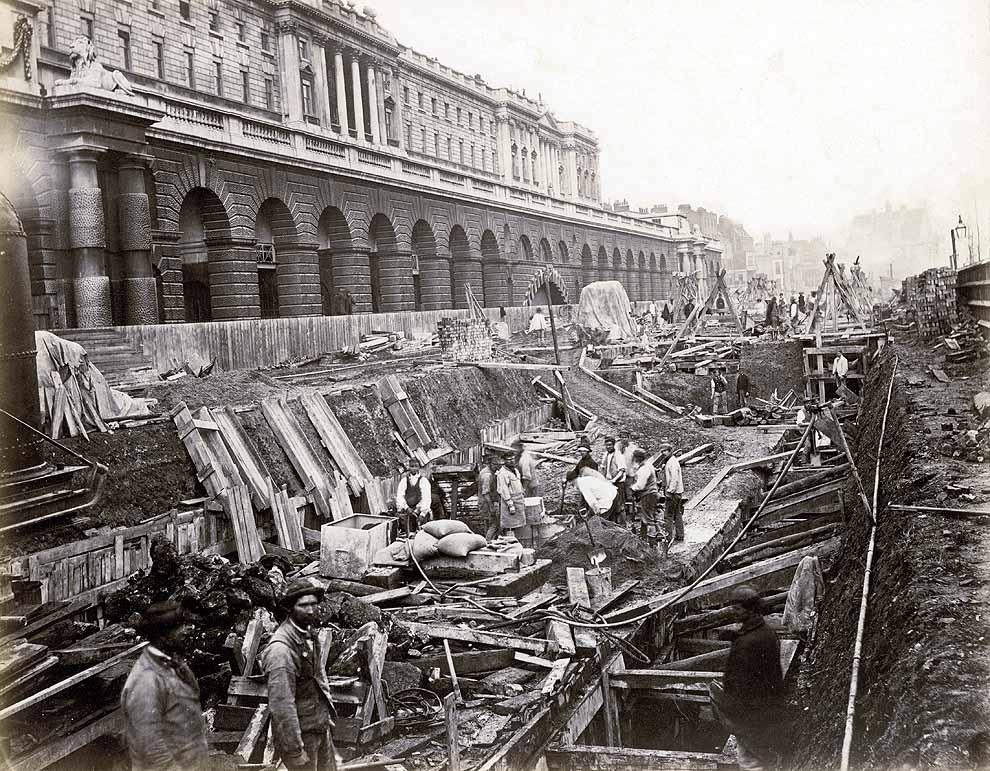
#9 Metropolitan District Railway construction, 1866
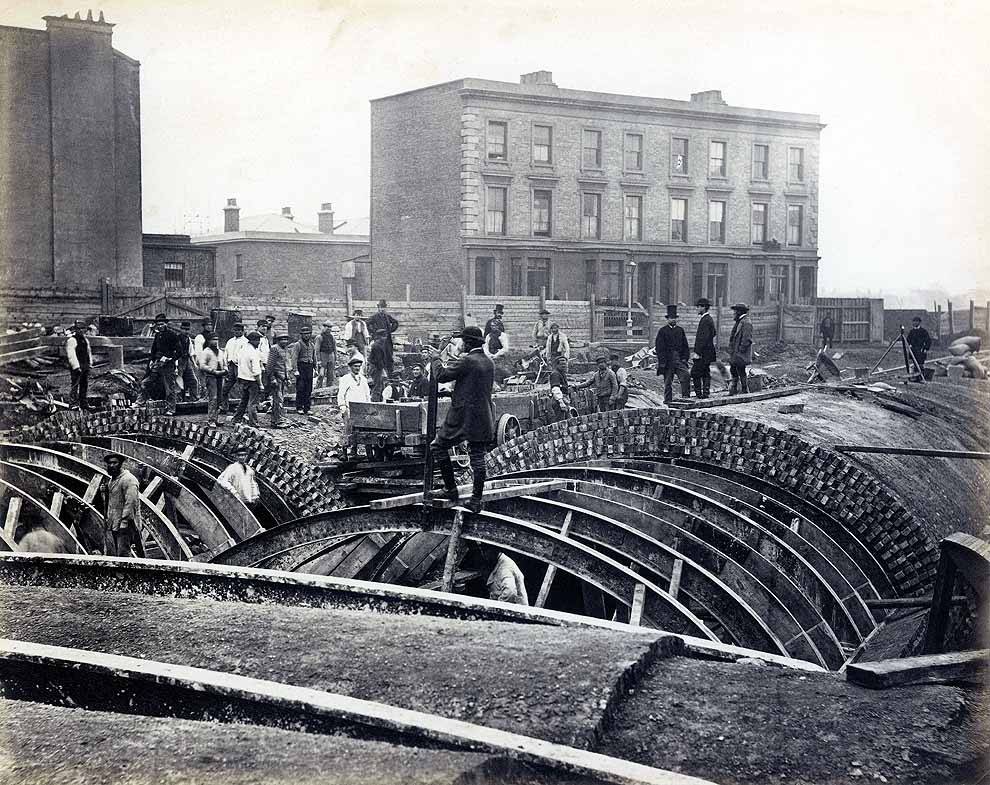
#10 High Street Kensington, 1868
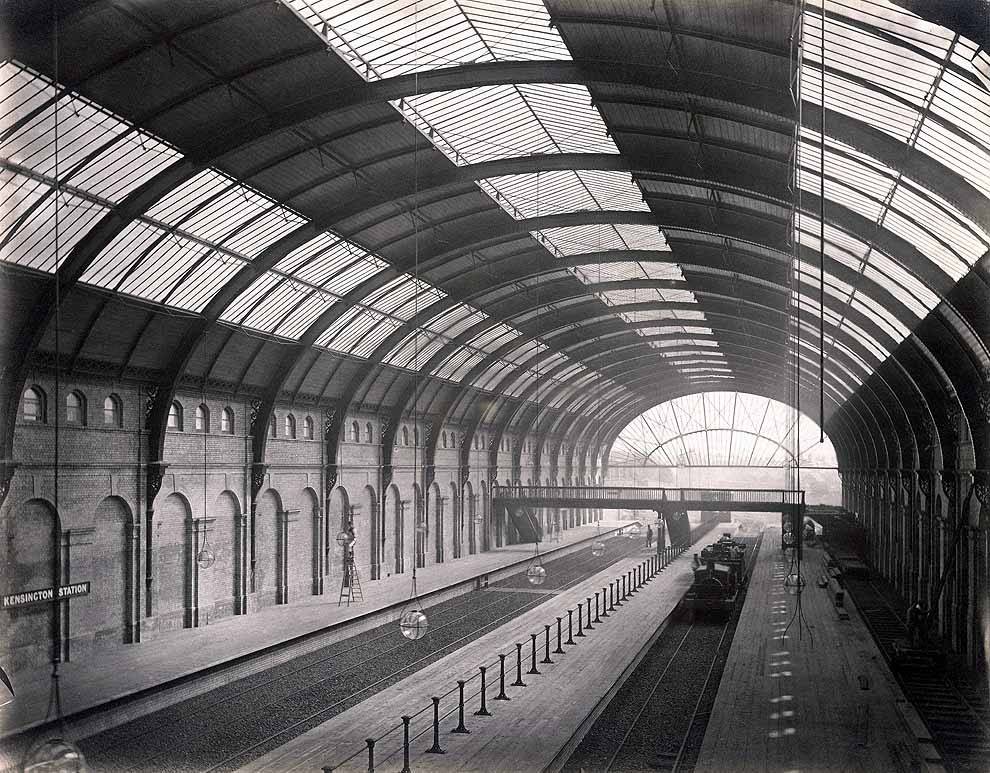
#11 Notting Hill Gate, 1866
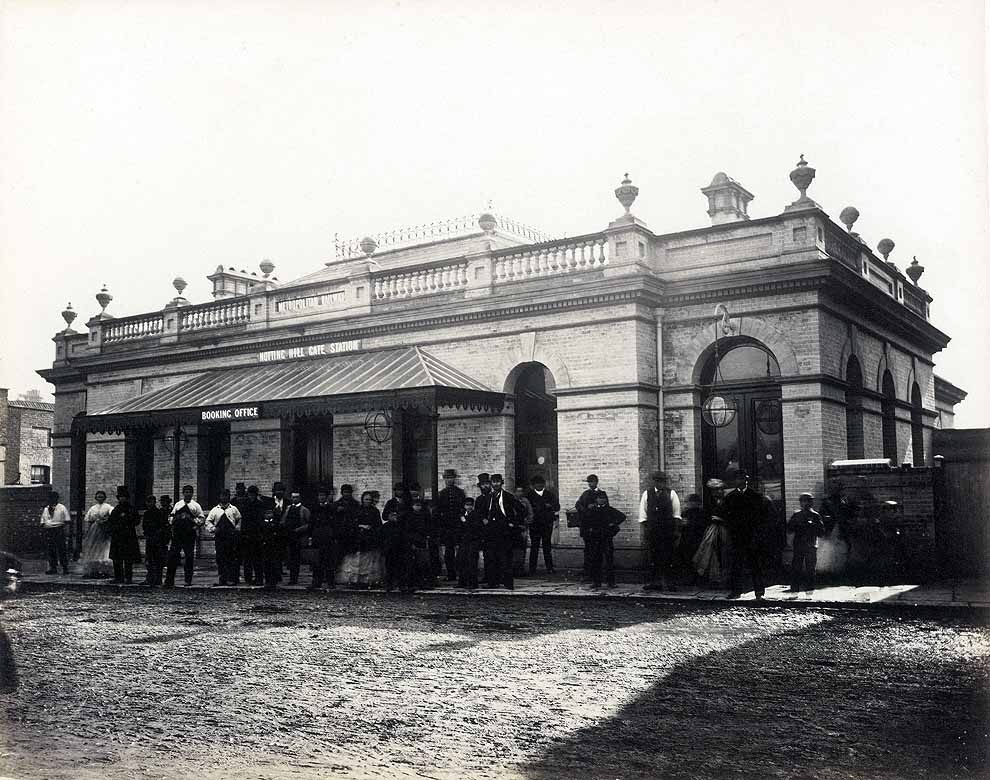
#12 Construction work near South Kensington Station
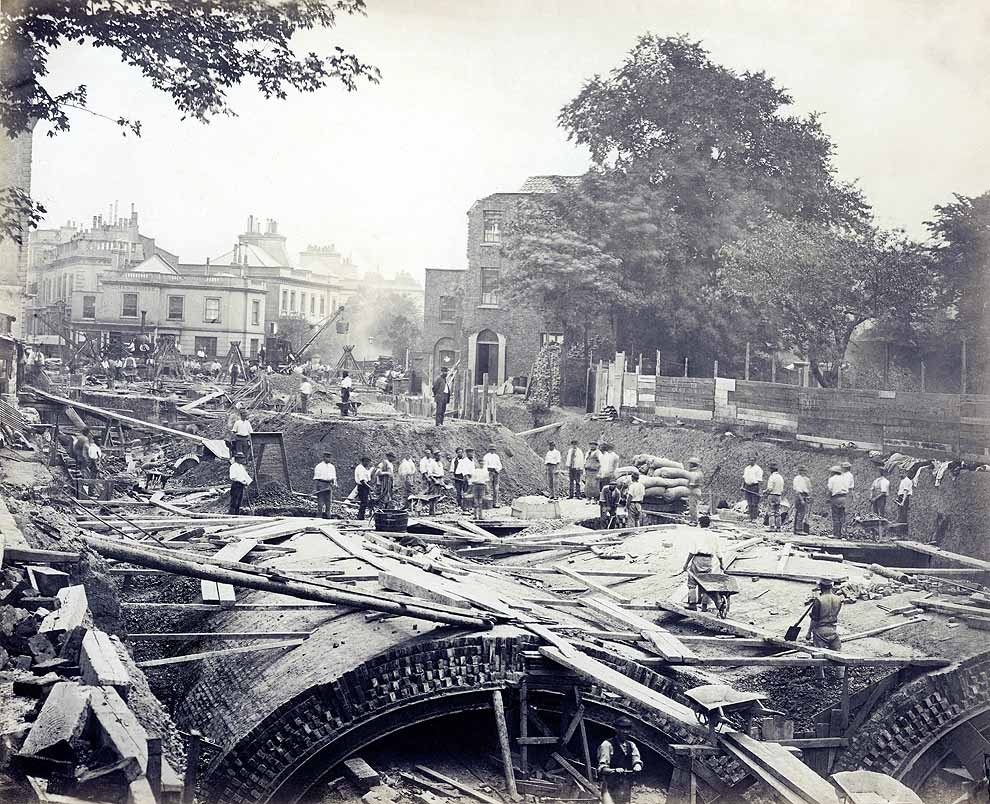
#13 Bayswater Station upon completion, 1866
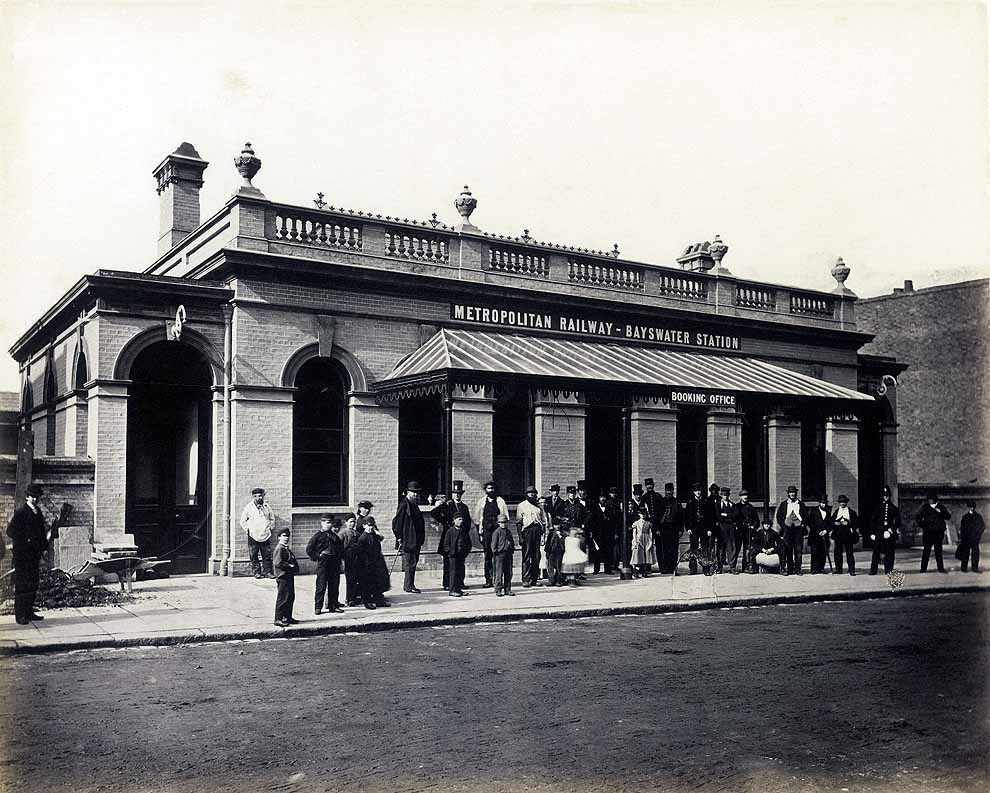
#14 Gloucester Road Station, 1868
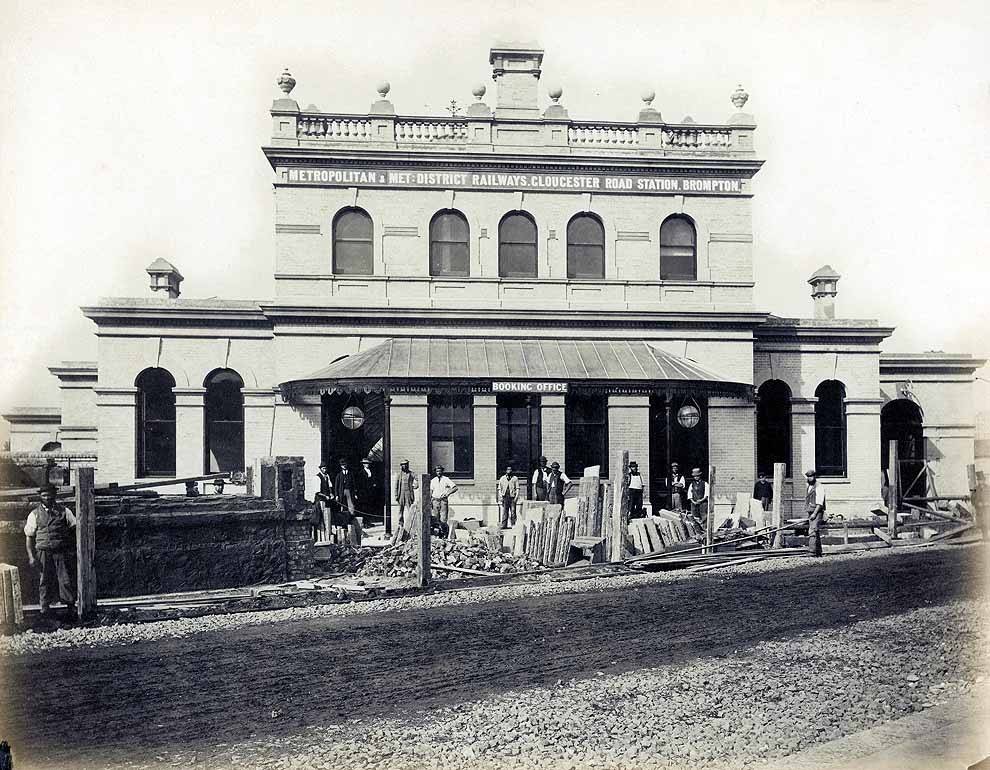
#15 High Street Kensington’s roof taking shape
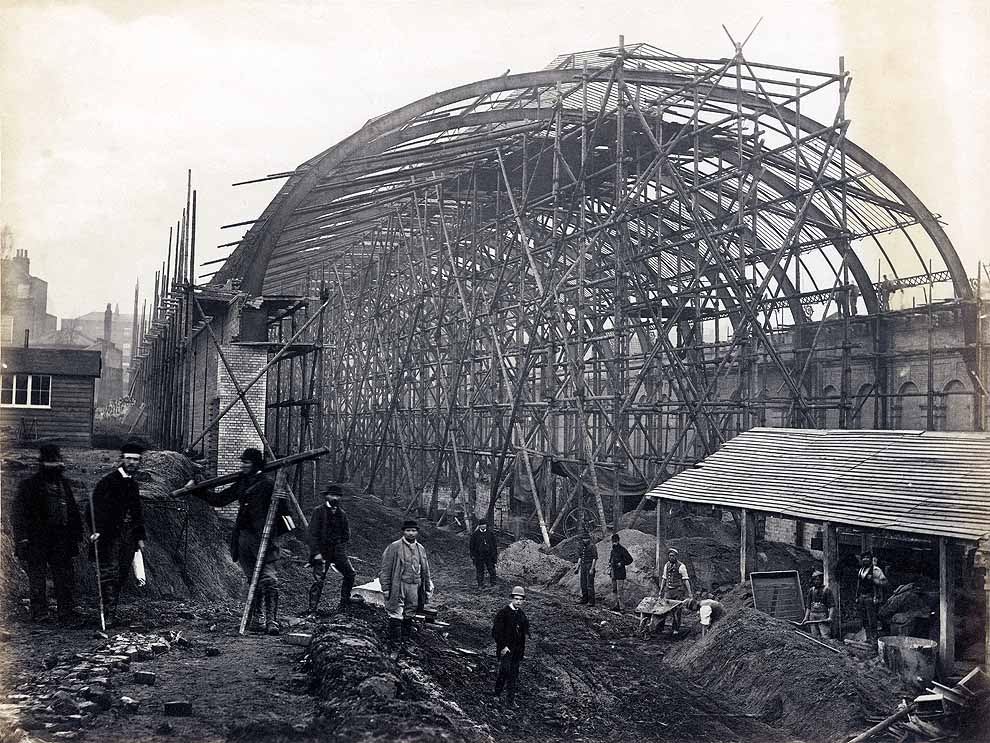
#16 The first Metropolitan train on the underground line passing through Praed Street, London, Ca. 1863.
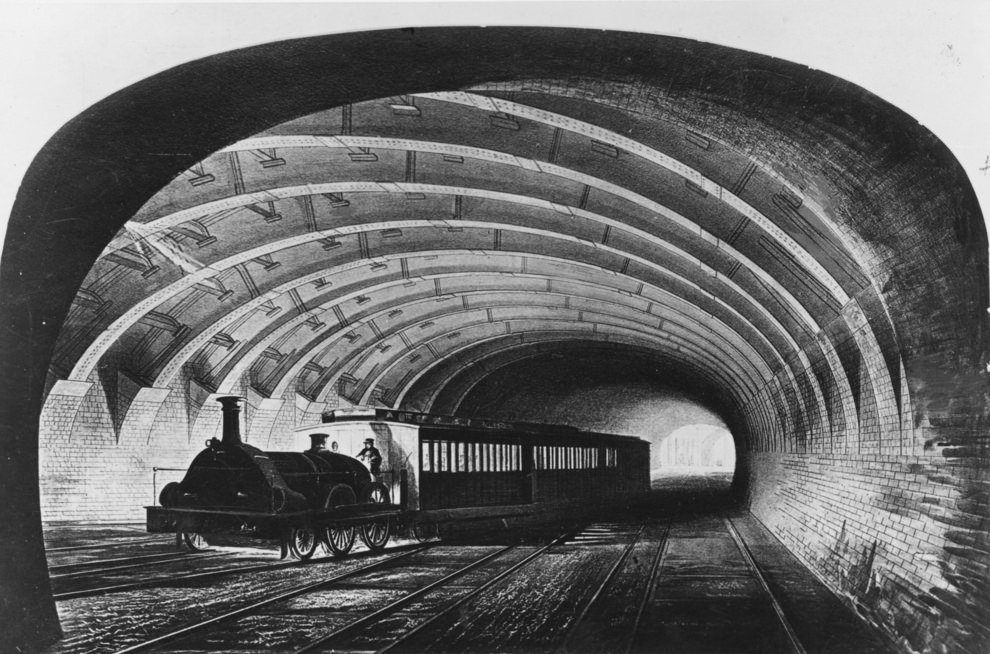
#17 Chancellor William Ewart Gladstone on an inspection tour of the world’s first underground line, 24th May 1862.
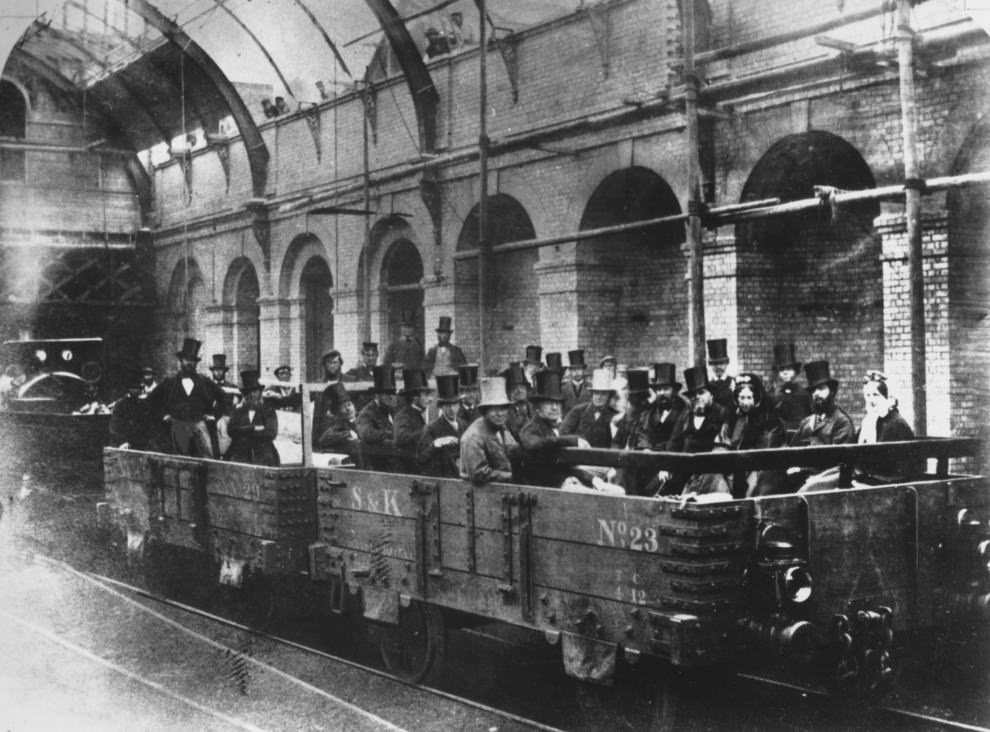
#18 Liverpool Street station, ca. 1890.
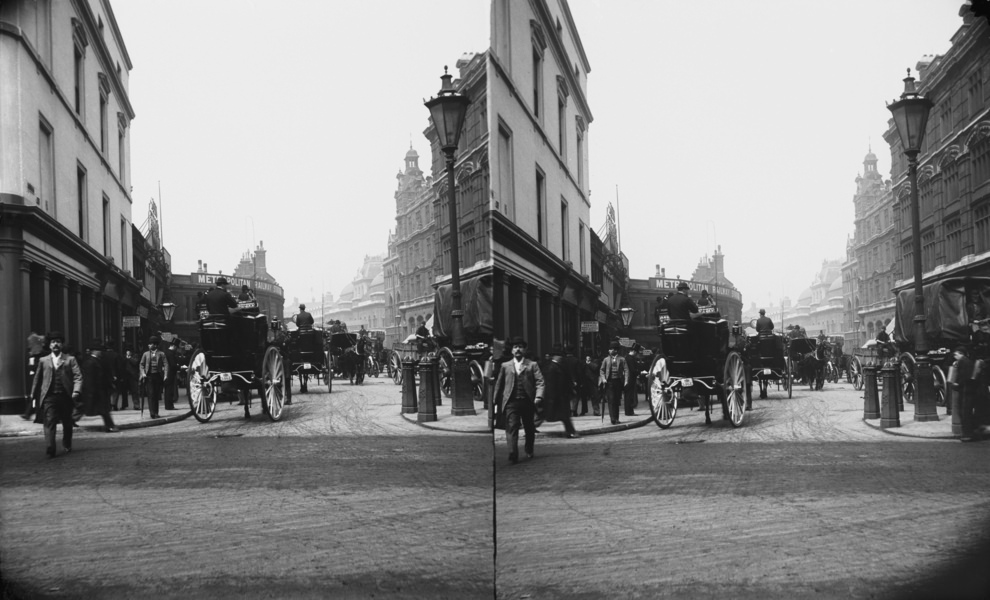
#19 Map and illustrations showing the new Great Northern, Piccadilly and Brompton underground tube route, linking London stations from Hammersmith to Finsbury Park, 1906.
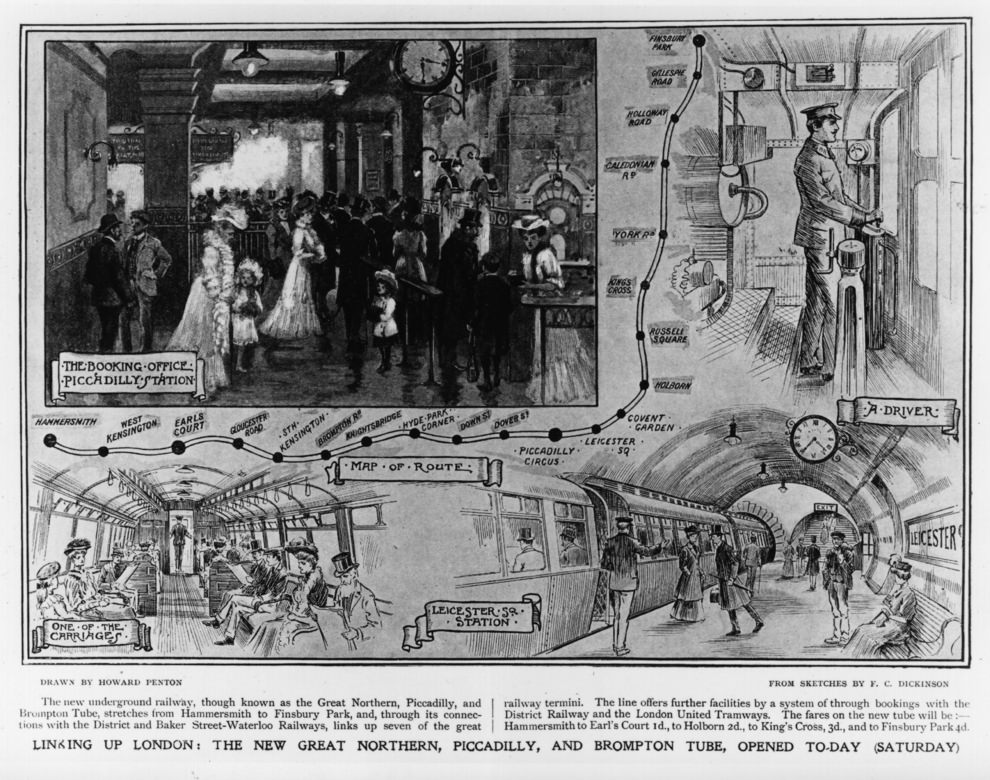
#20 Hammersmith Broadway, 1910.
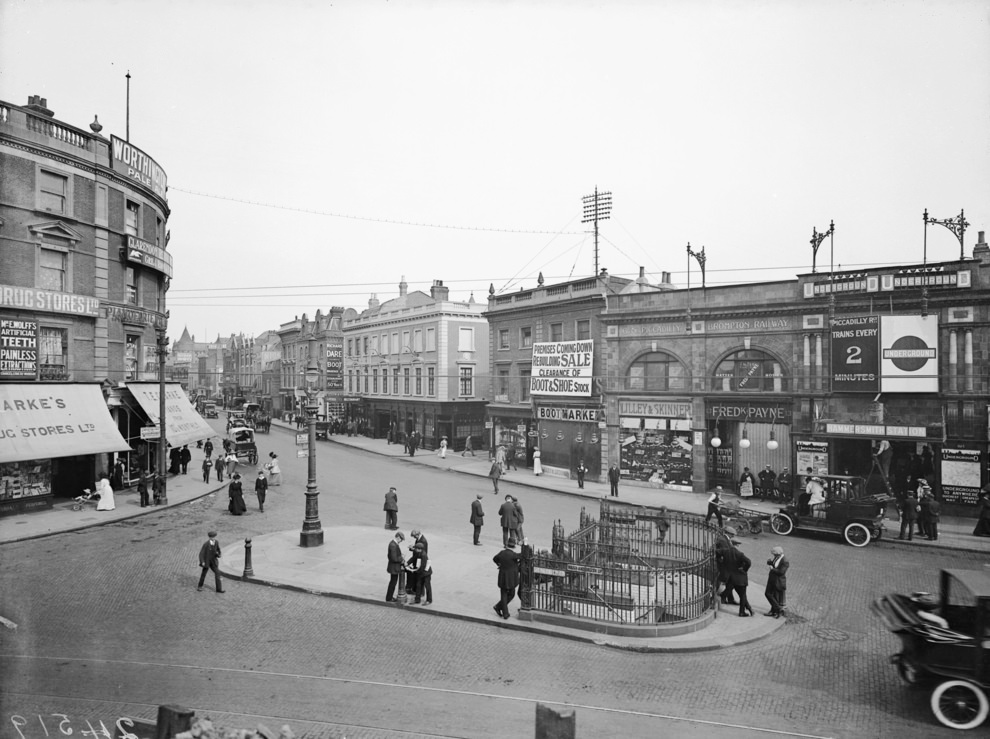
#21 The interior of a District Line Underground carriage, 1911.
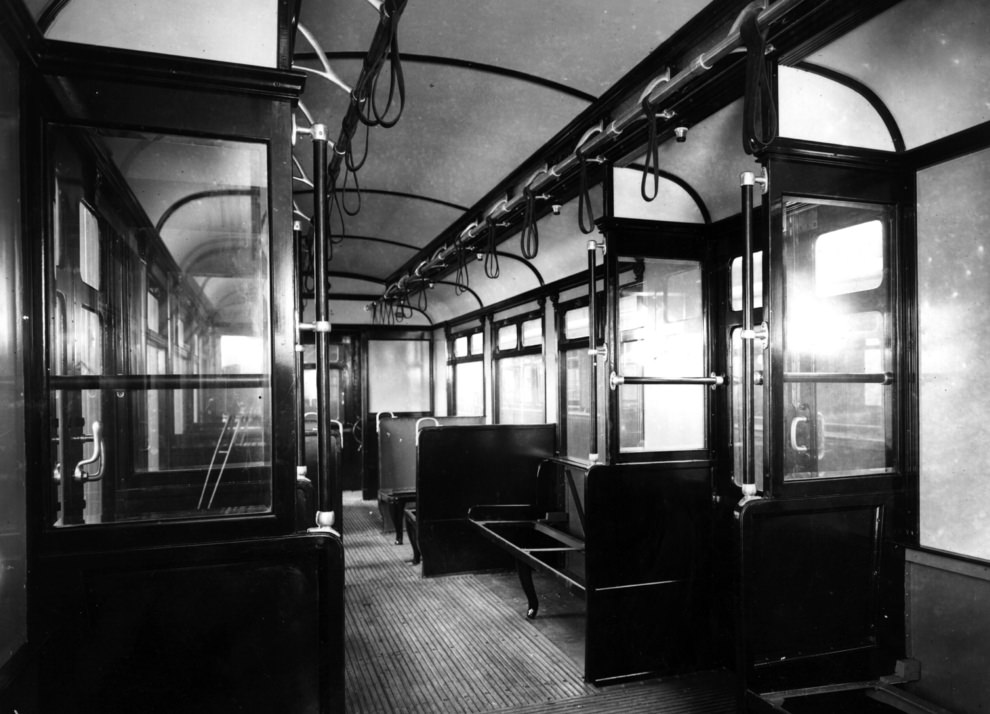
#22 The ticket hall of Liverpool Street Station, 1912.
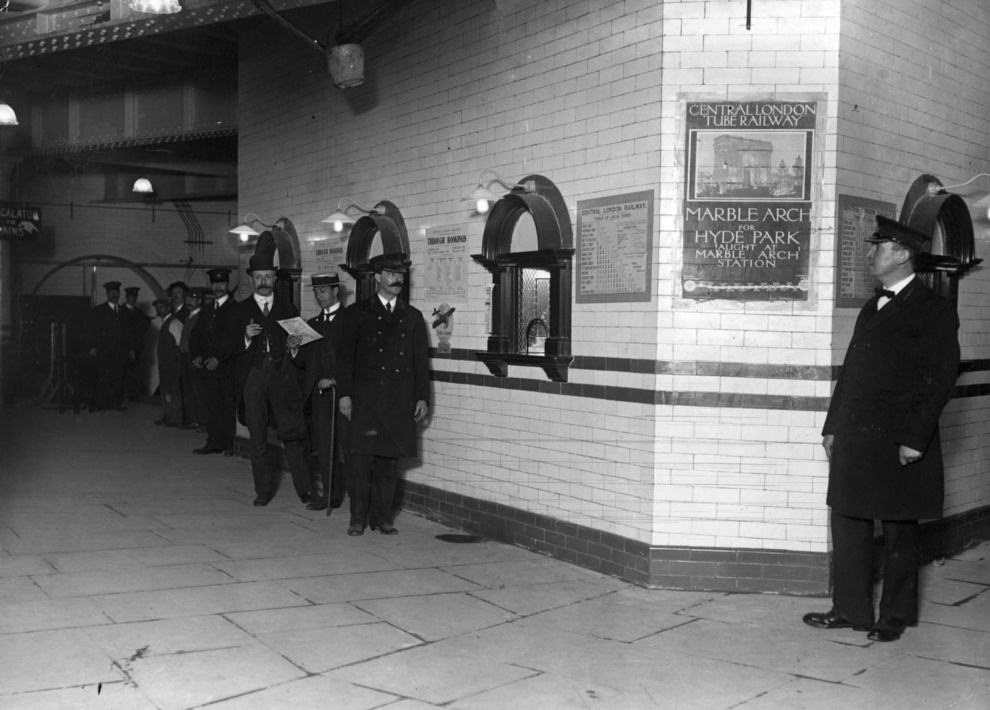
#23 The platform of the Central London Railway extension at Liverpool Street Station, 1912.
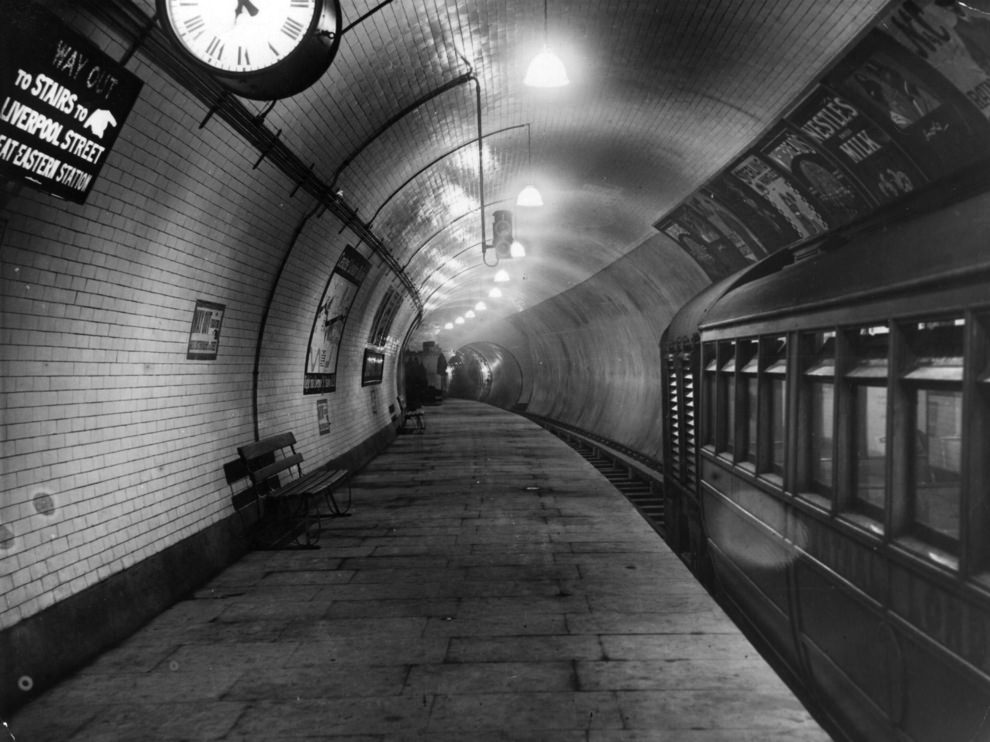
#24 Interior of an all-steel London underground train, ca. 1920.
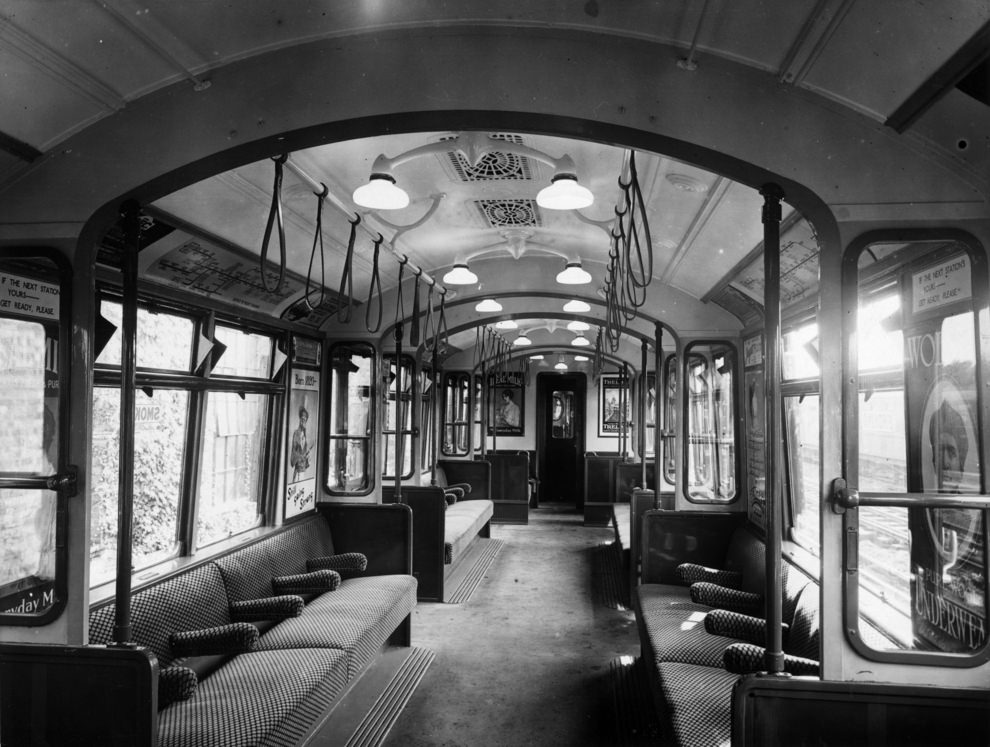
#25 A man writing on a complaints poster, 1922.
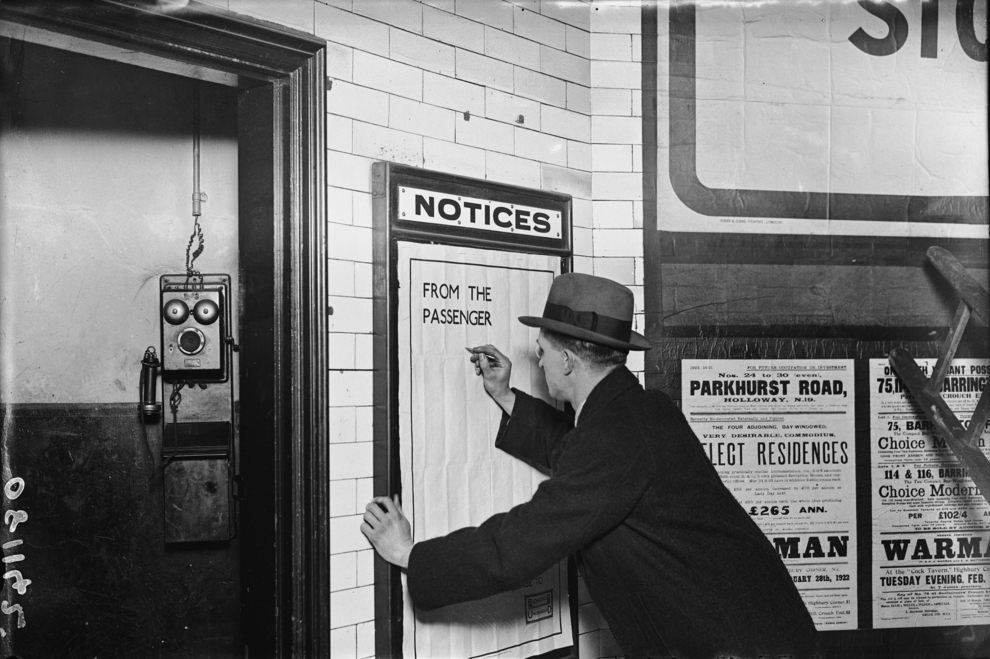
#26 Farringdon Street (Farringdon) Station in March 1924.
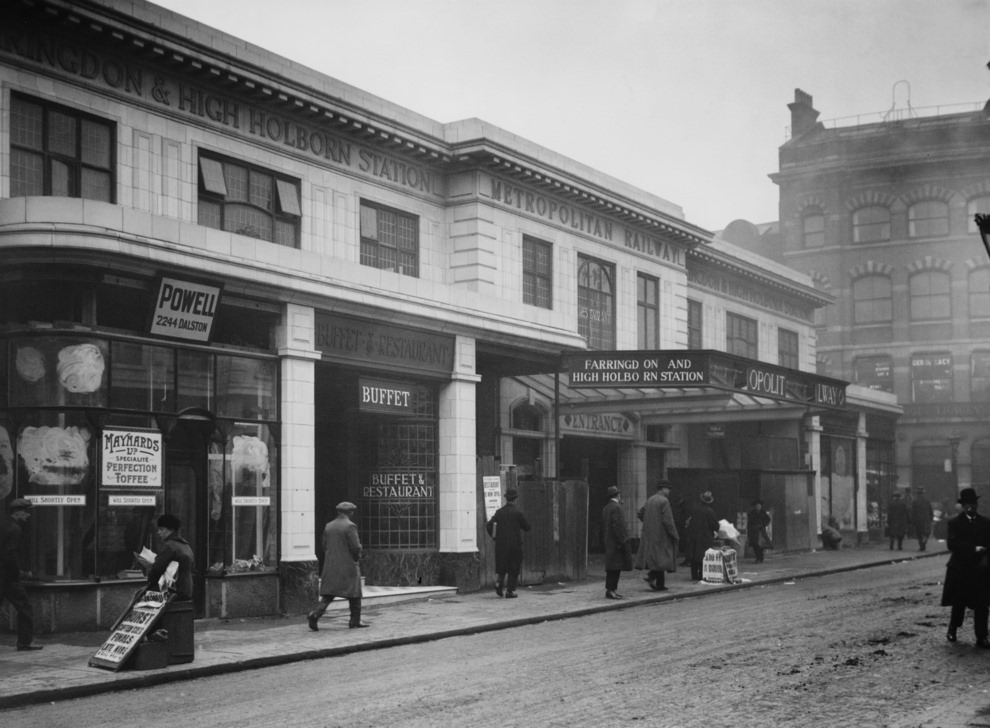
#27 The entrance to Blackfriars Underground station, 1924.
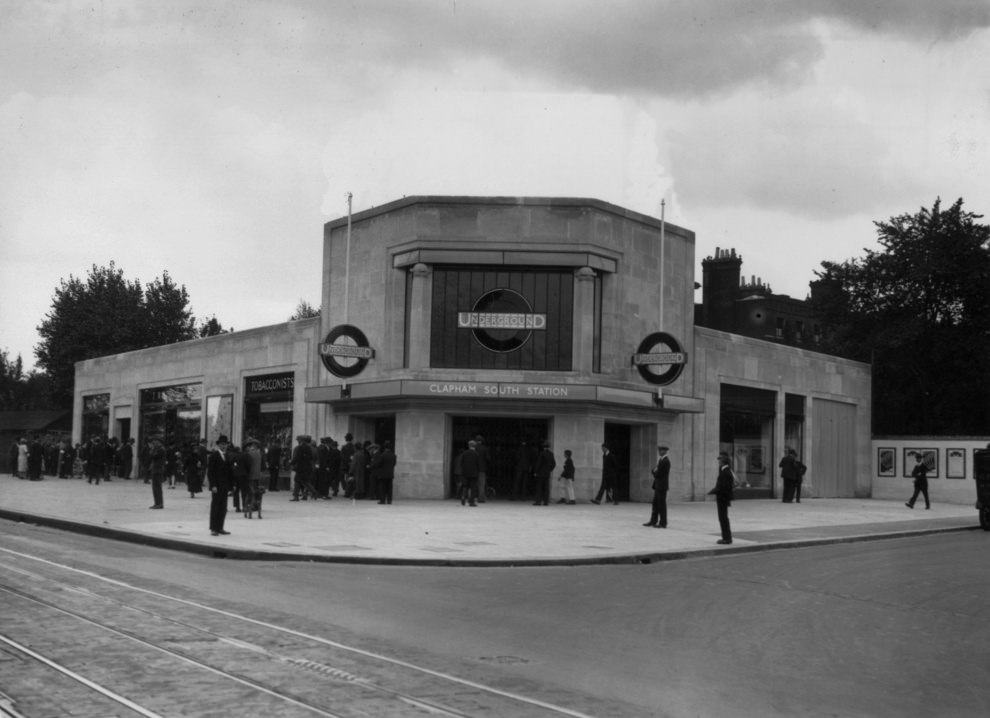
#28 Clapham South, 1926.
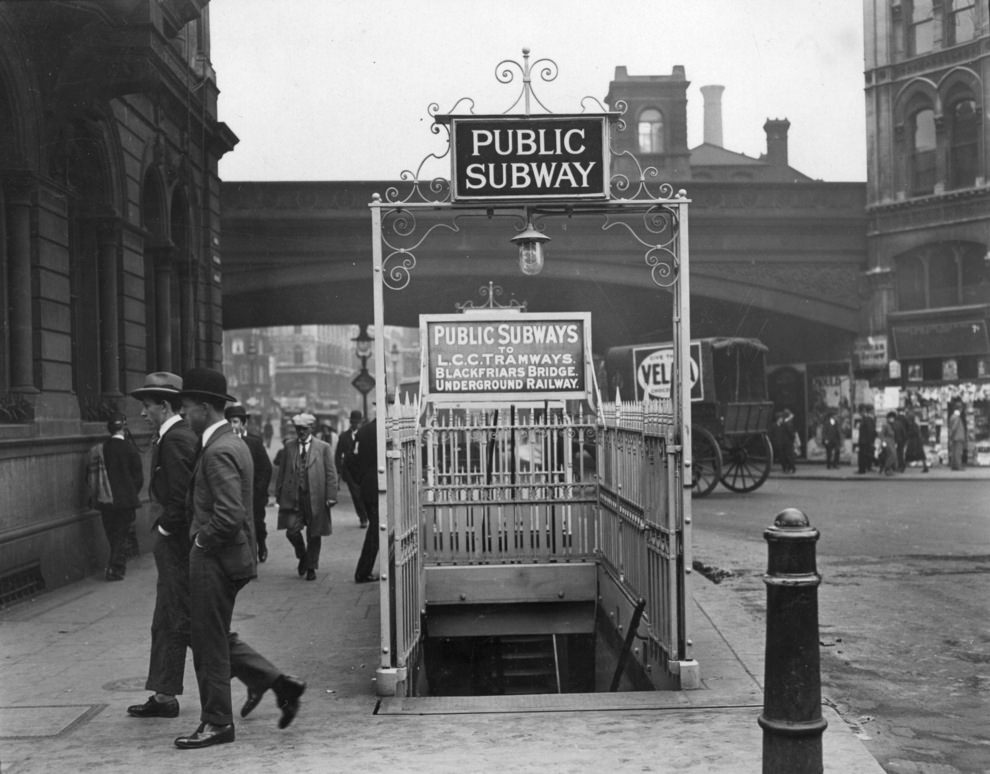
#29 London tram workers queue up for their pay at the tram subway in Kingsway, High Holborn, 1926.
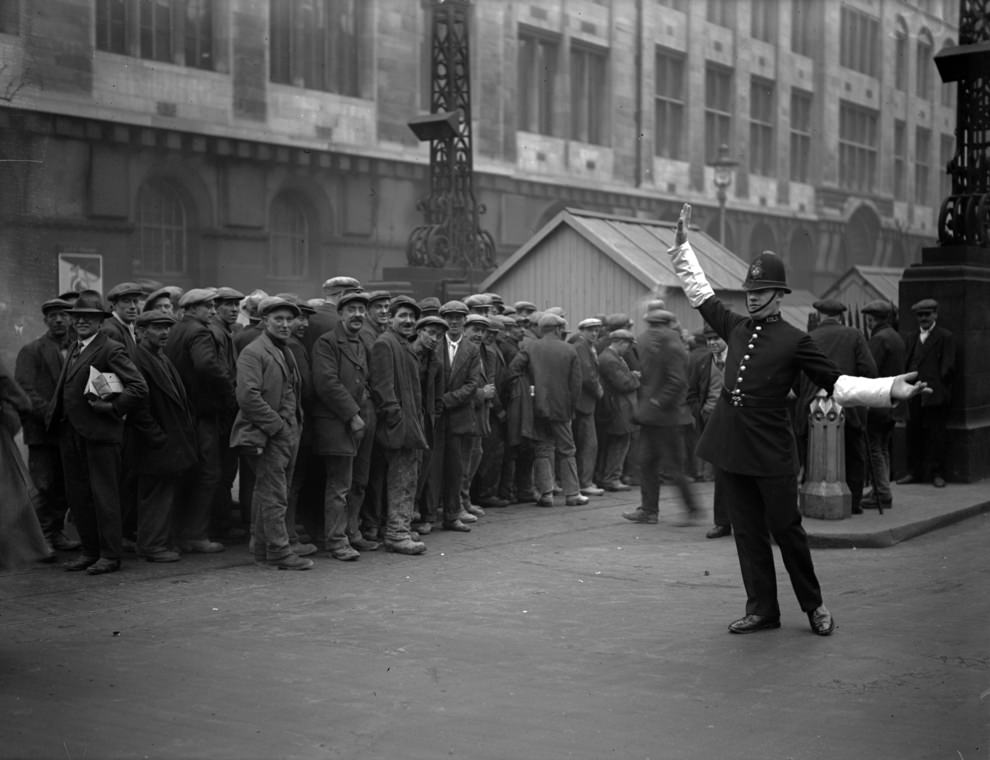
#30 An underground train being transported on wheels through the streets of London, 1926.
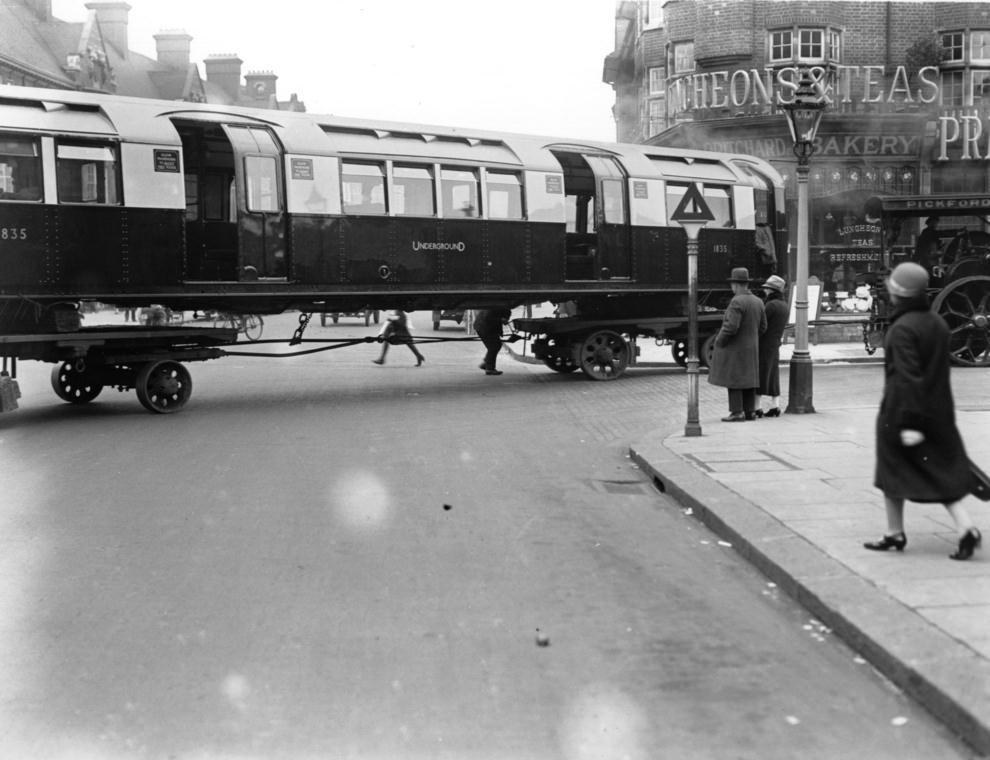
#31 The Mayor of Westminster turns on the escalators at Piccadilly Circus in 1928.
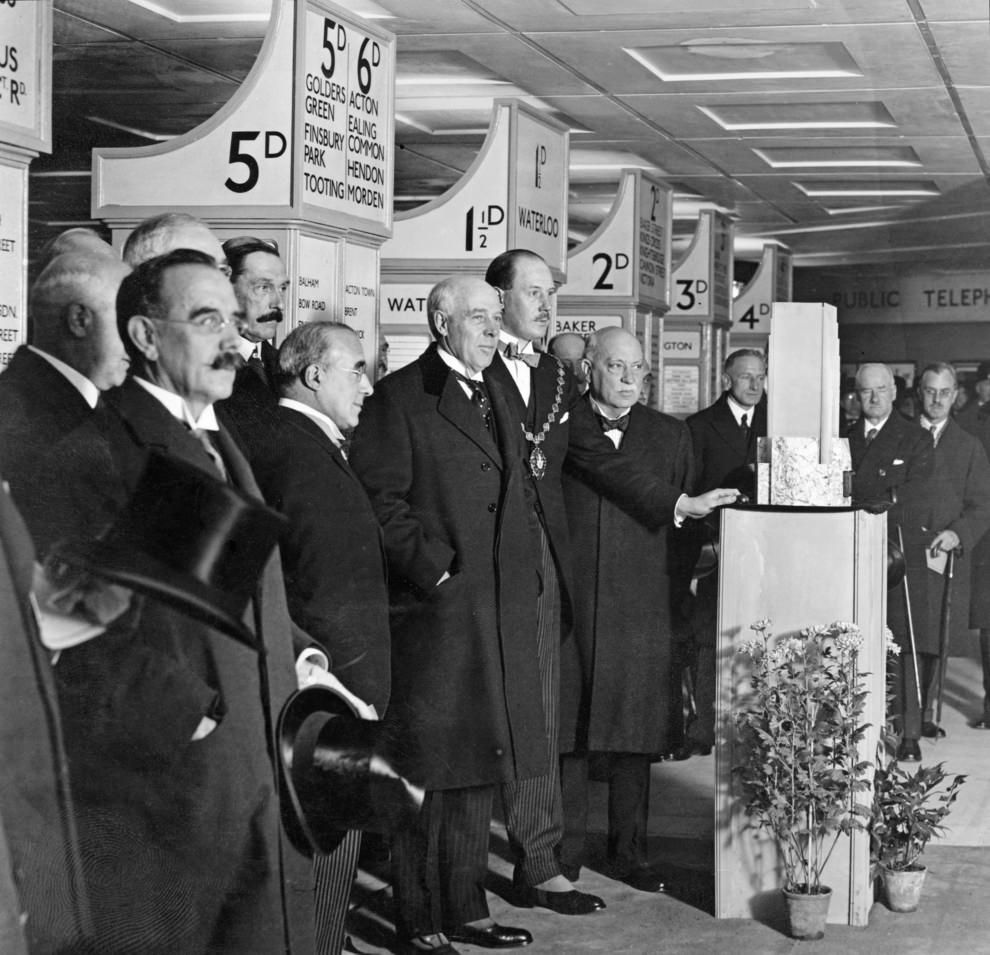
#32 British director Anthony Asquith (1902-1968), right, directing his new film ‘Underground’ from an escalator on the London underground, May 1928.
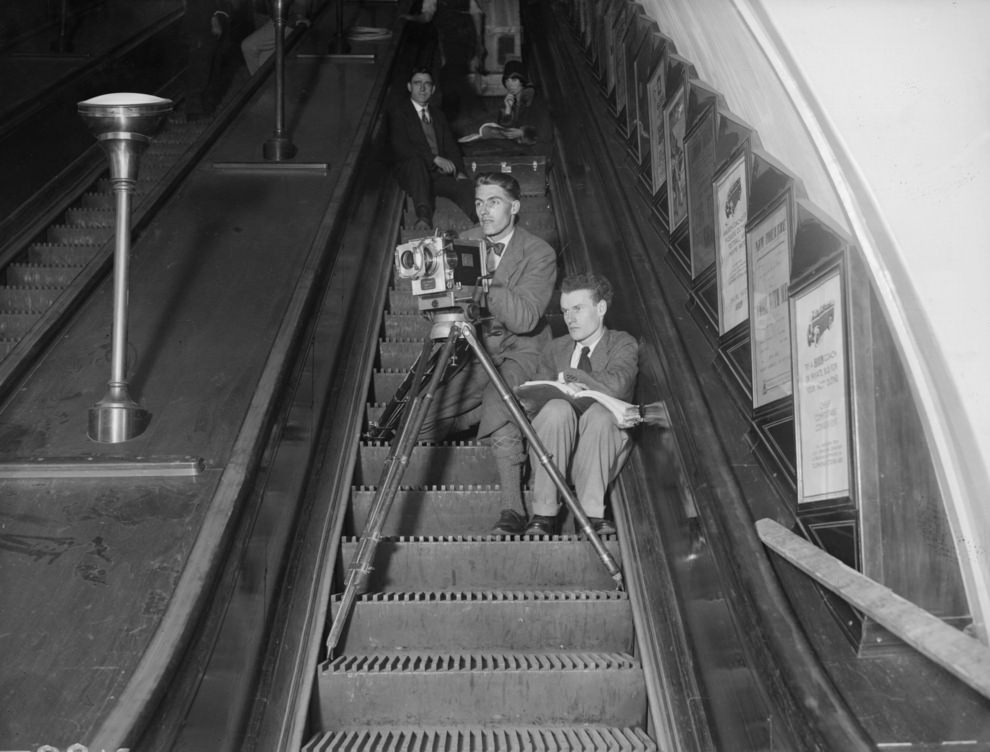
#33 Construction work at the ticketing area of the new Piccadilly tube station, 1928.
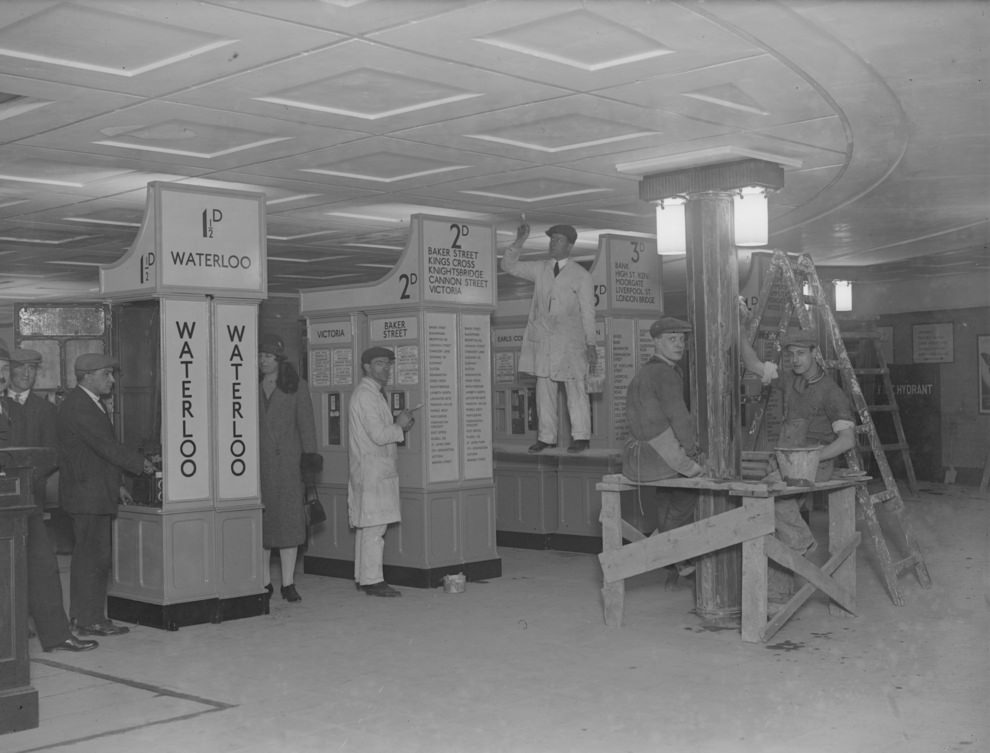
#34 The Hon Anthony Asquith filming commuters for his film of the underground, 1928.
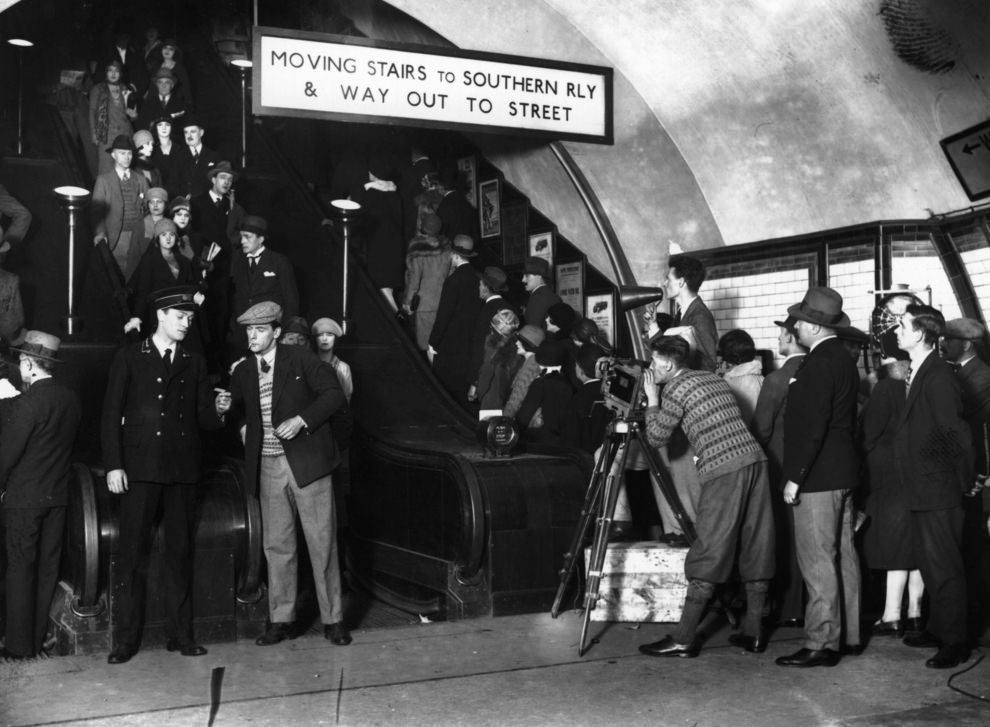
#35 Platforms are lengthened at Euston Square underground station, 1930.
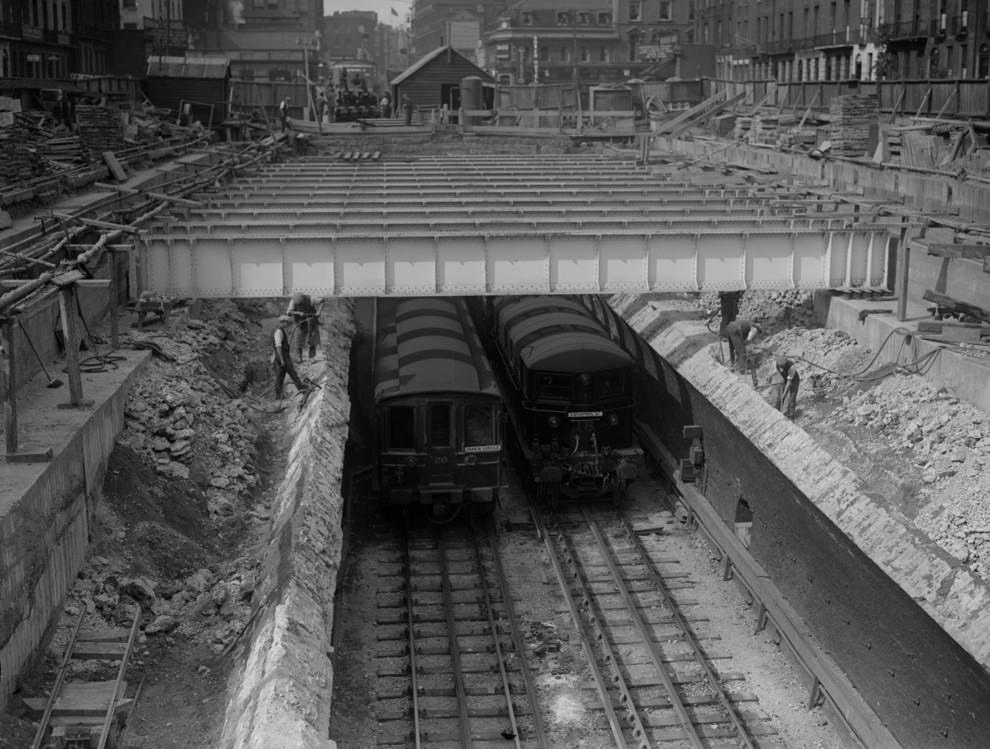
#36 A passenger takes a ticket from the machine at Piccadilly Circus, 1930.
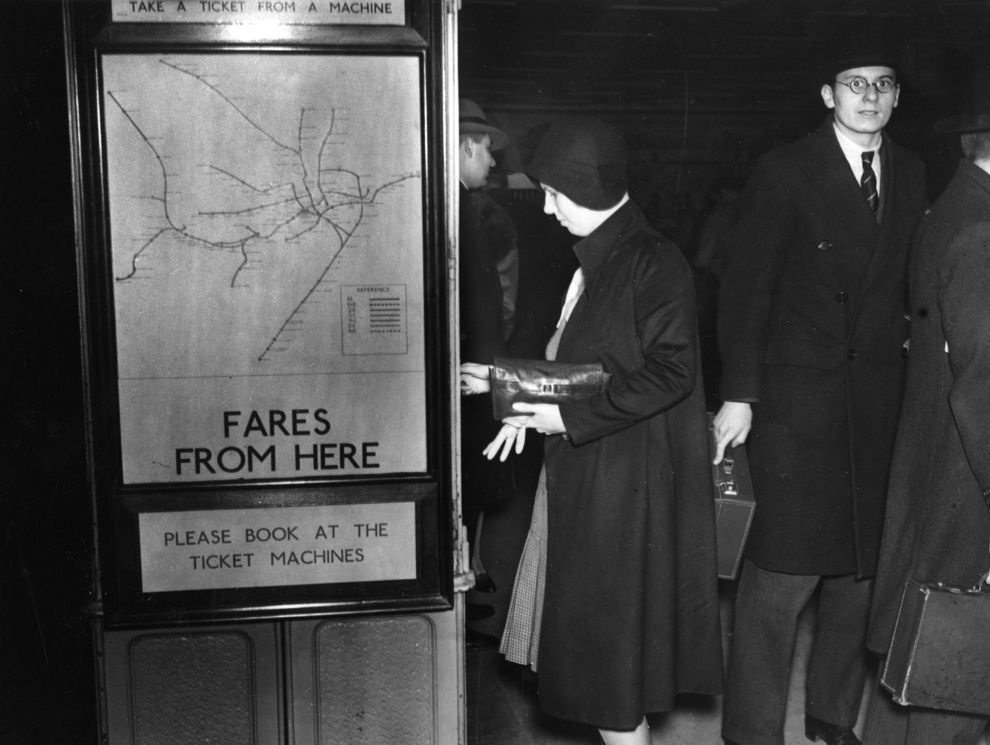
#37 A traveller buys a London Underground season ticket from a vending machine at Highgate Station, 1932.
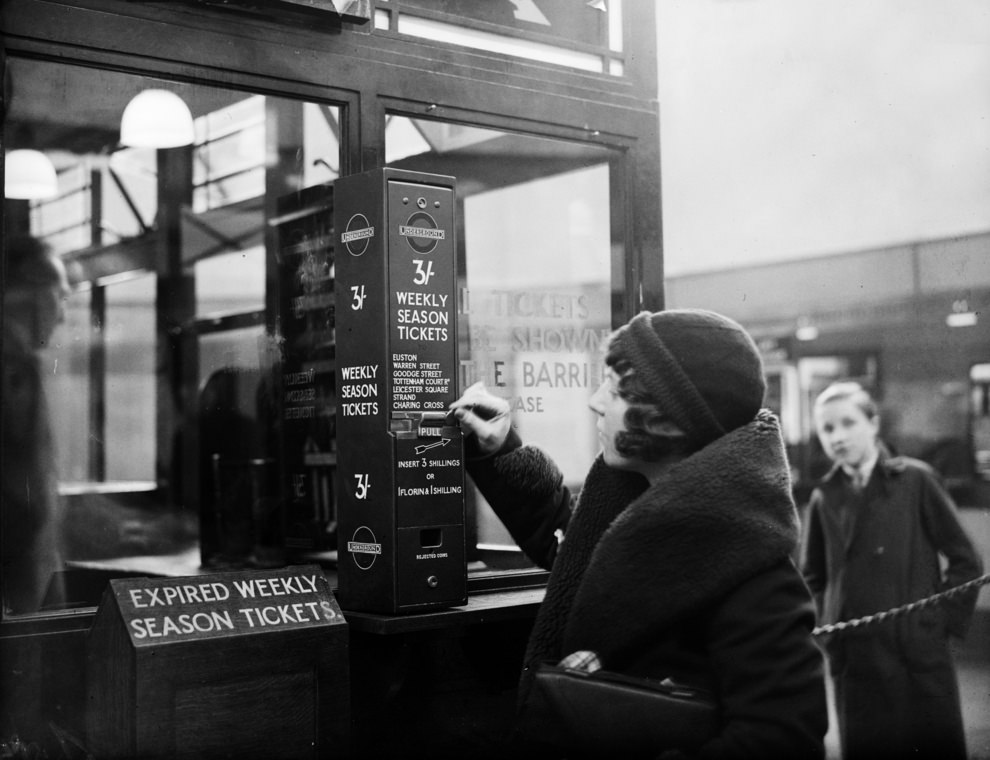
#38 Passengers on an escalator, September 1932. The posts were erected to avoided a crush during rush hours.
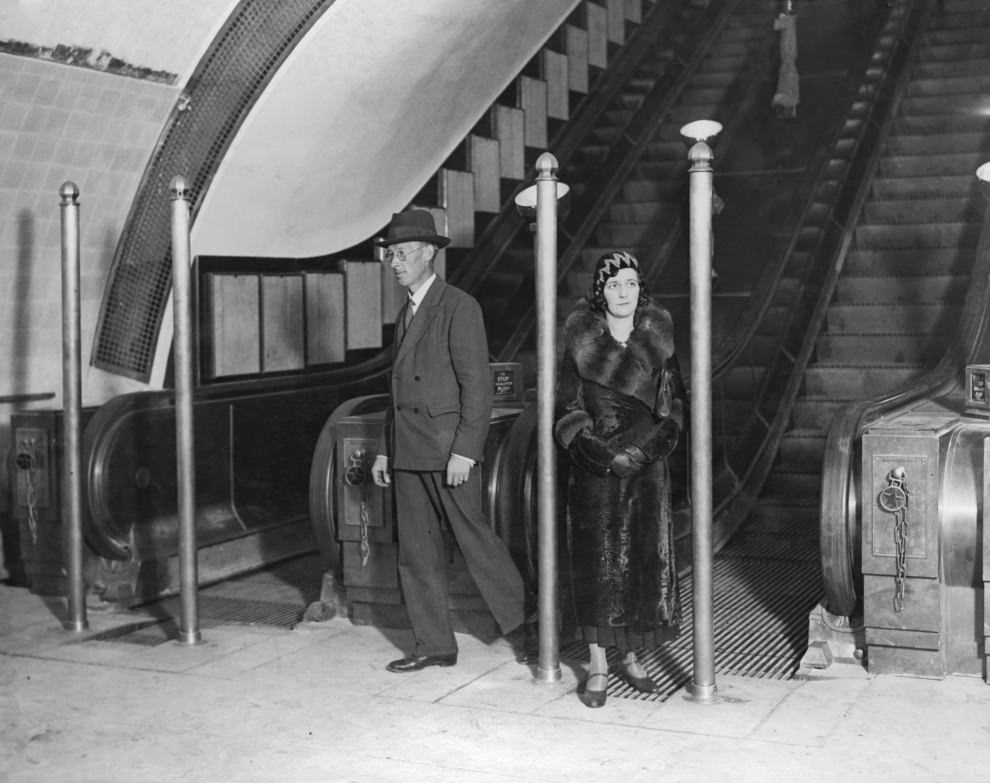
#39 Leicester Square, 1933.
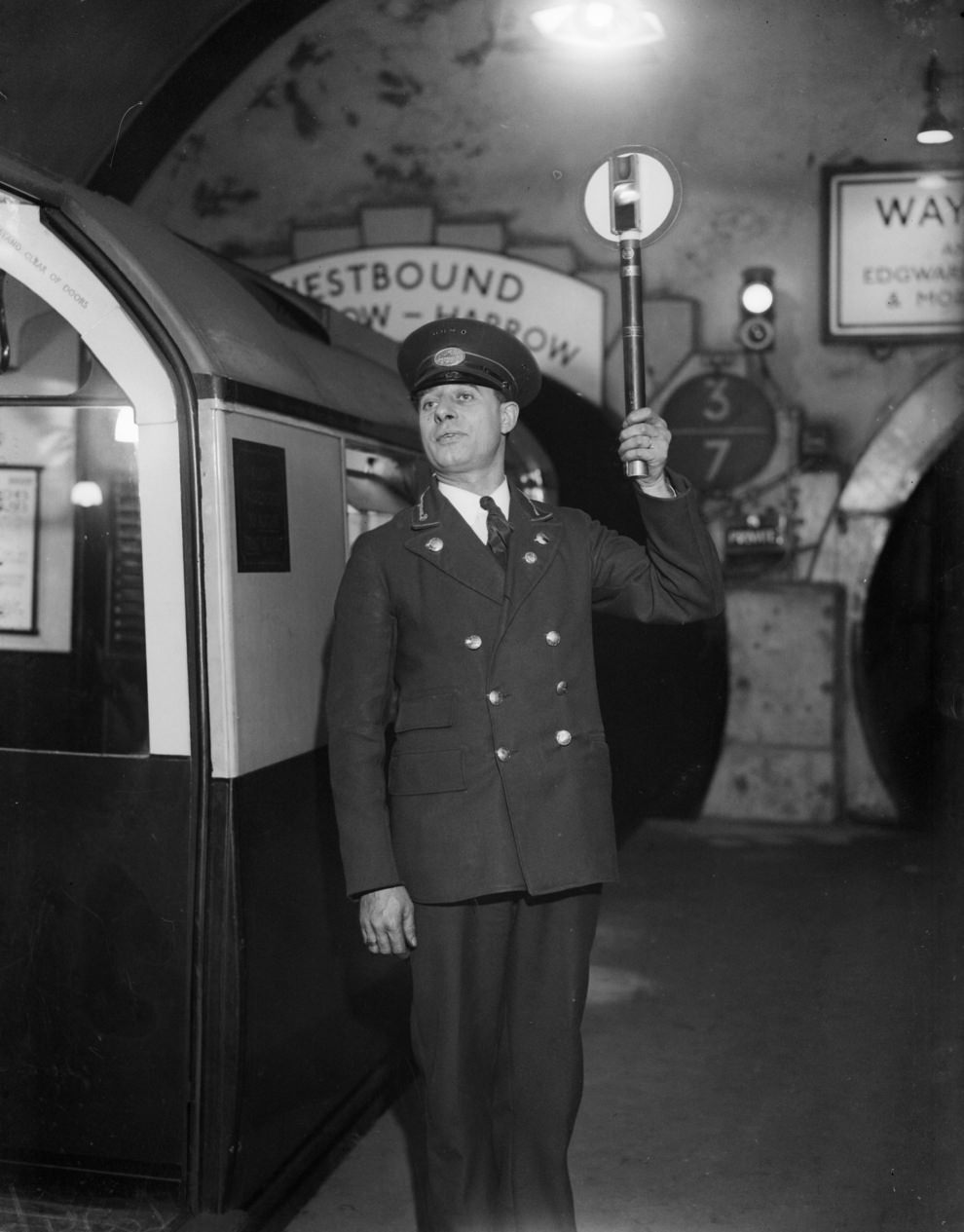
#40 A group of Sikh men outside the entrance to Hyde Park Corner, ca. 1935.
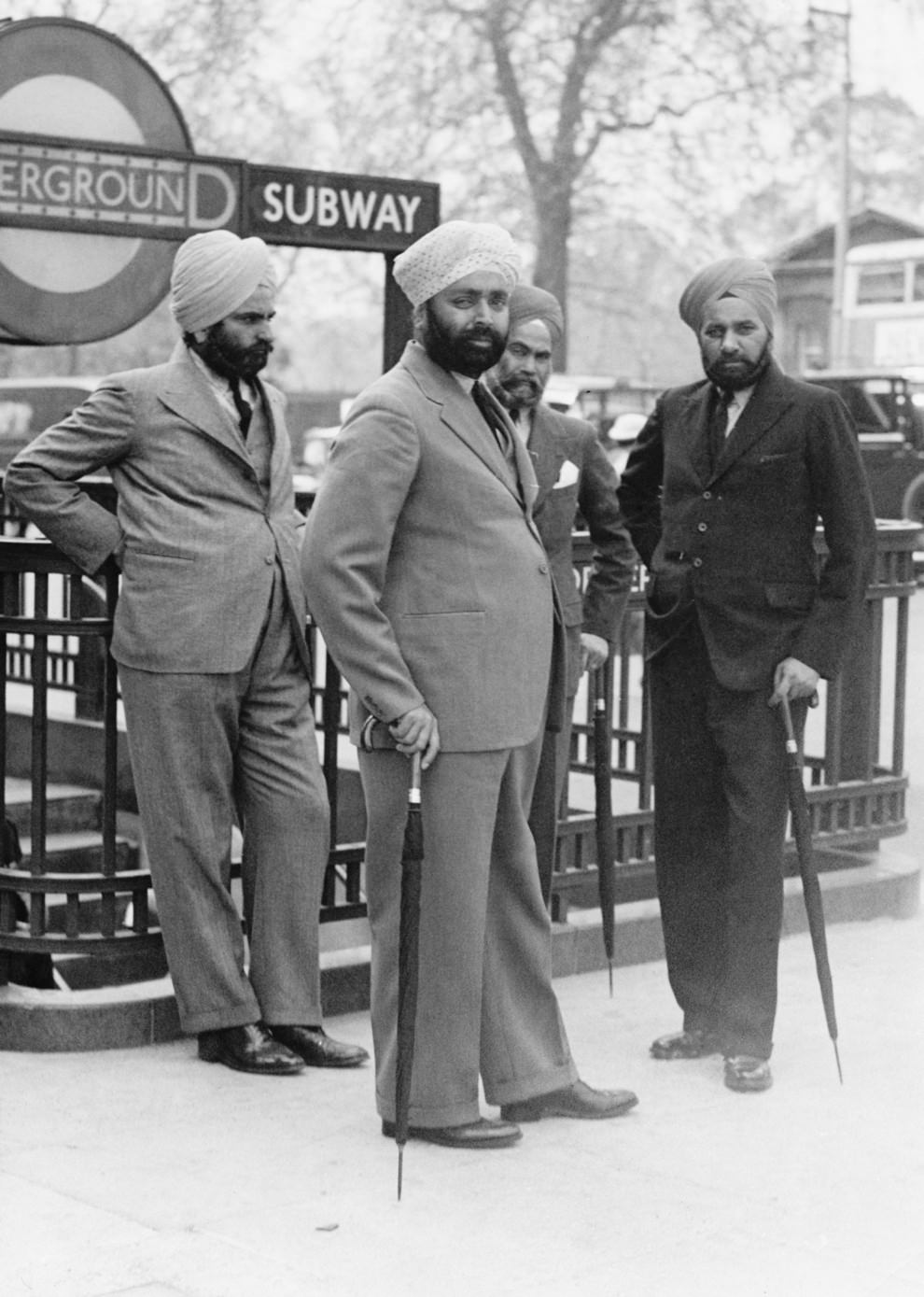
#41 New interiors in 1936: more seating, better lighting and ventilation and a more streamlined shape.
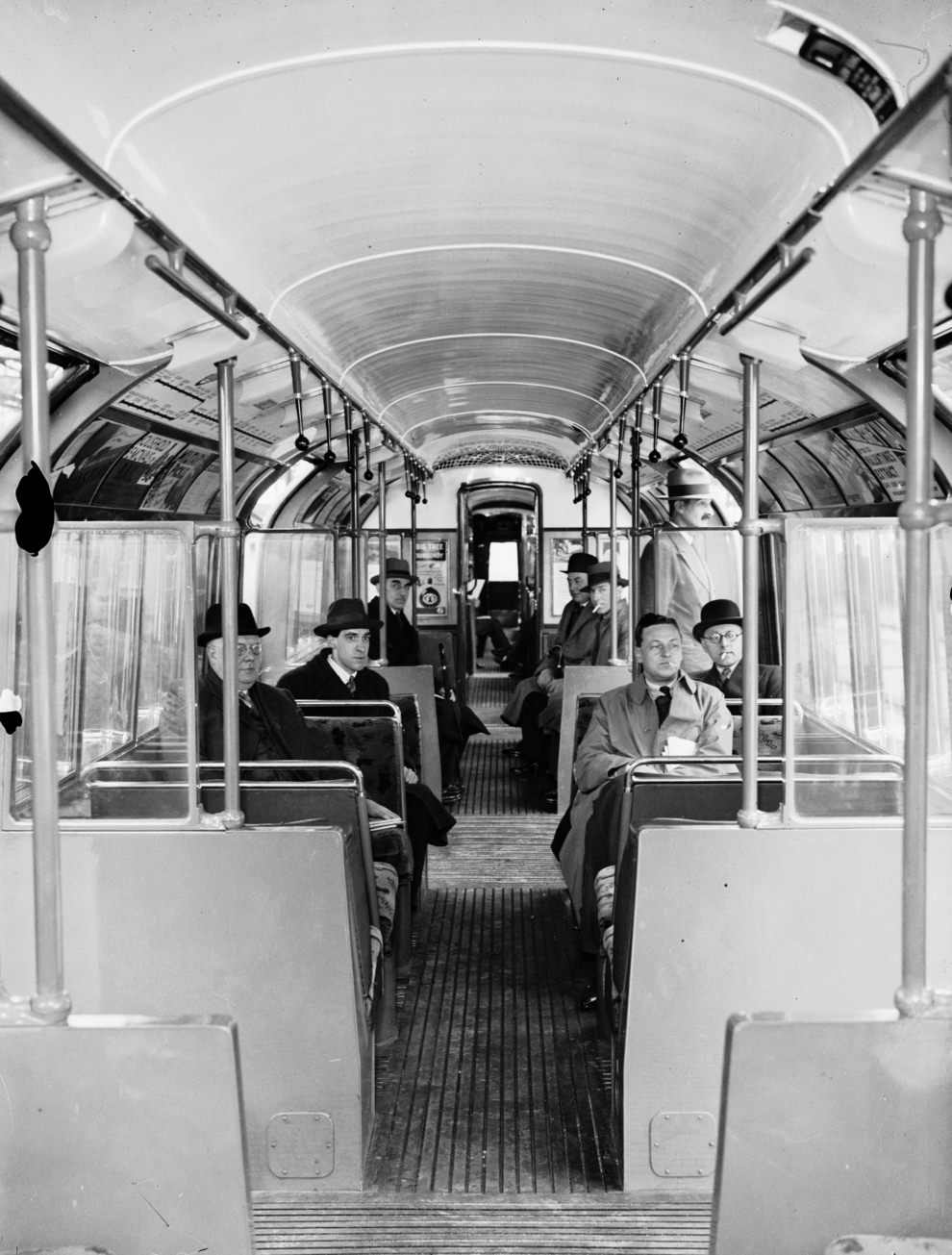
#42 A passenger opening one of the doors on the Hammersmith and City Underground Line, which have been fitted with new buttons for opening and closing doors, 1936.
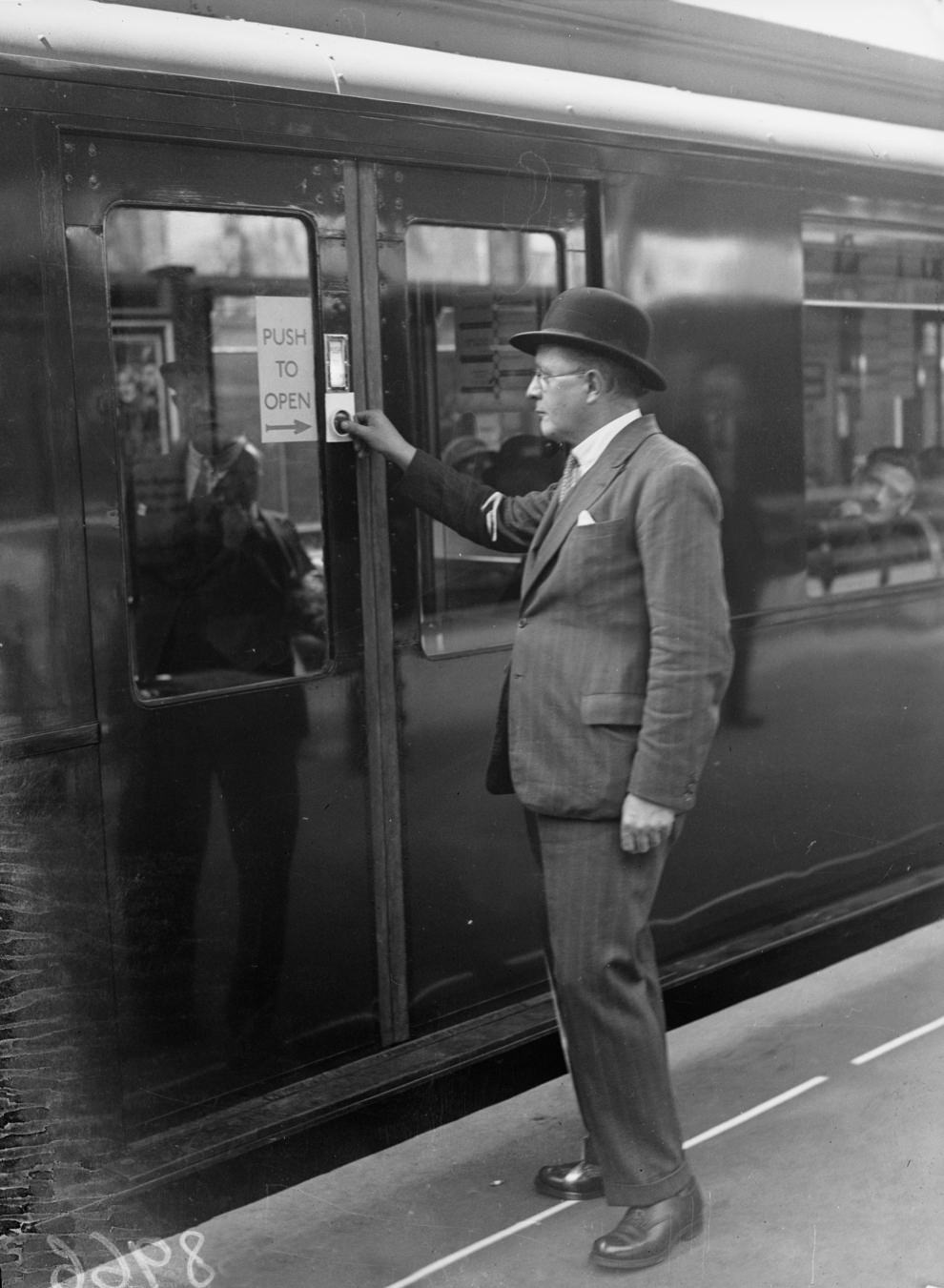
#43 London’s Charing Cross Road with the Hippodrome and Leicester Square station on the left, 1938.
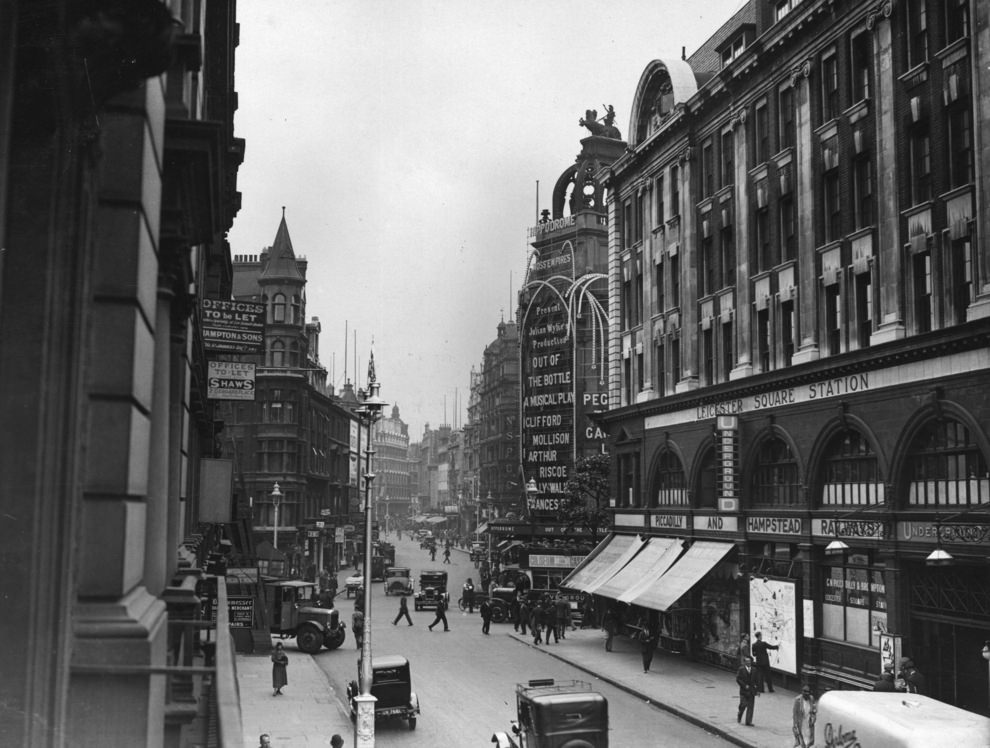
#44 The entrance to Embankment, 1938.
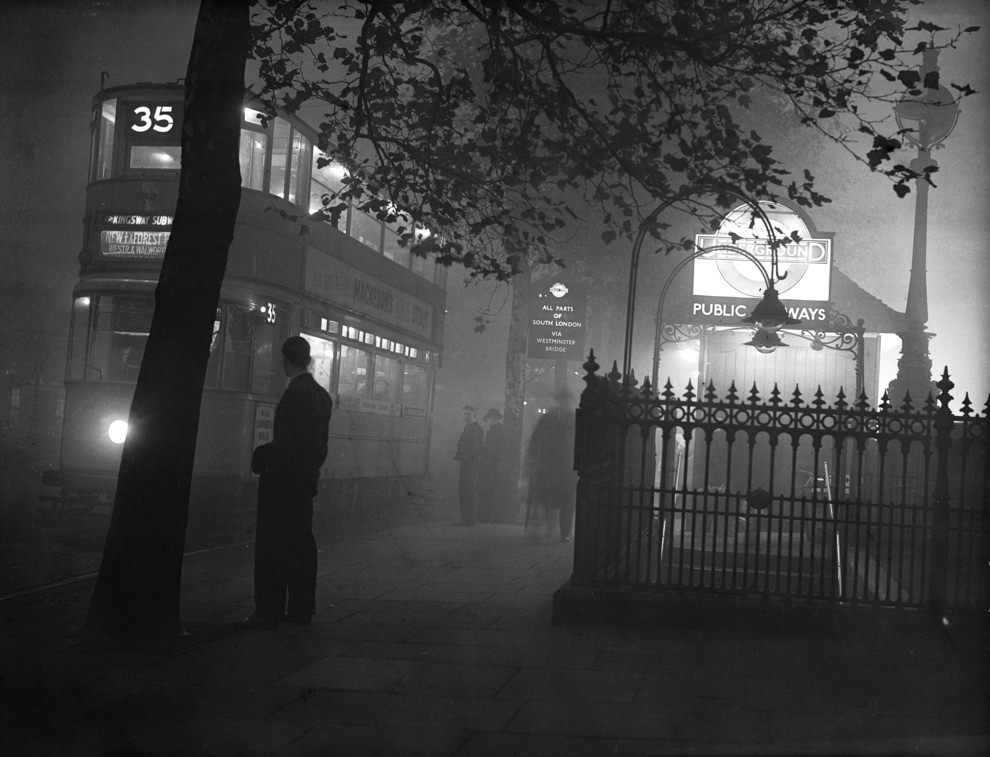
#45 A strike causes huge queues to build up at the bus stops outside Liverpool Street, 1939.
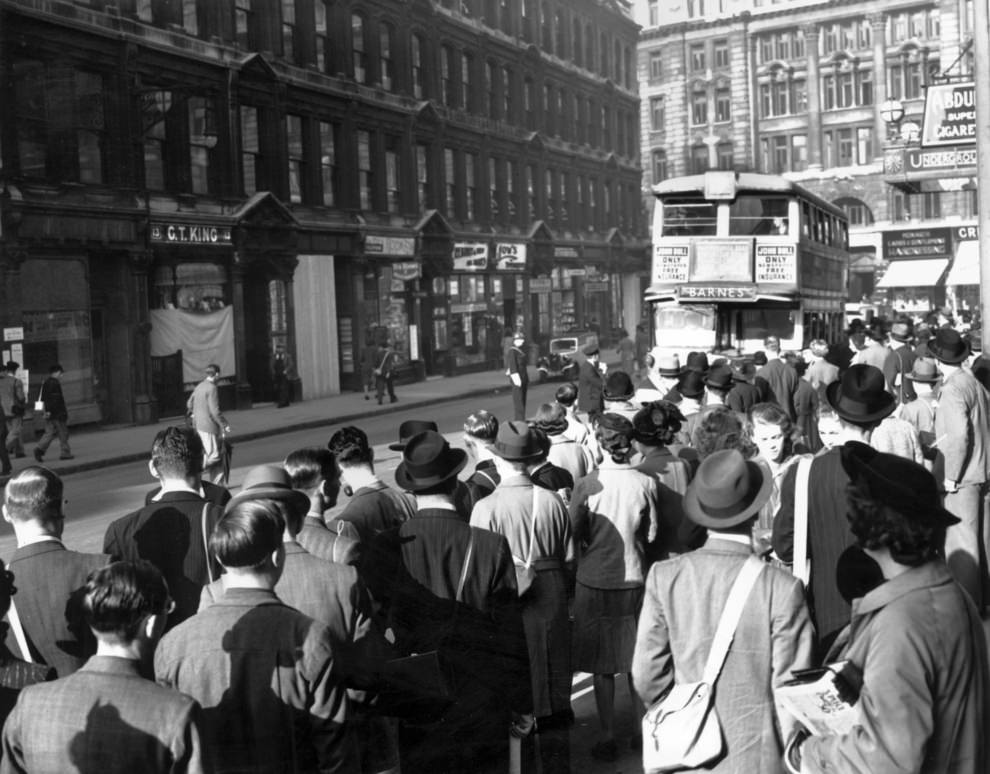
#46 Stockwell station, 1939.
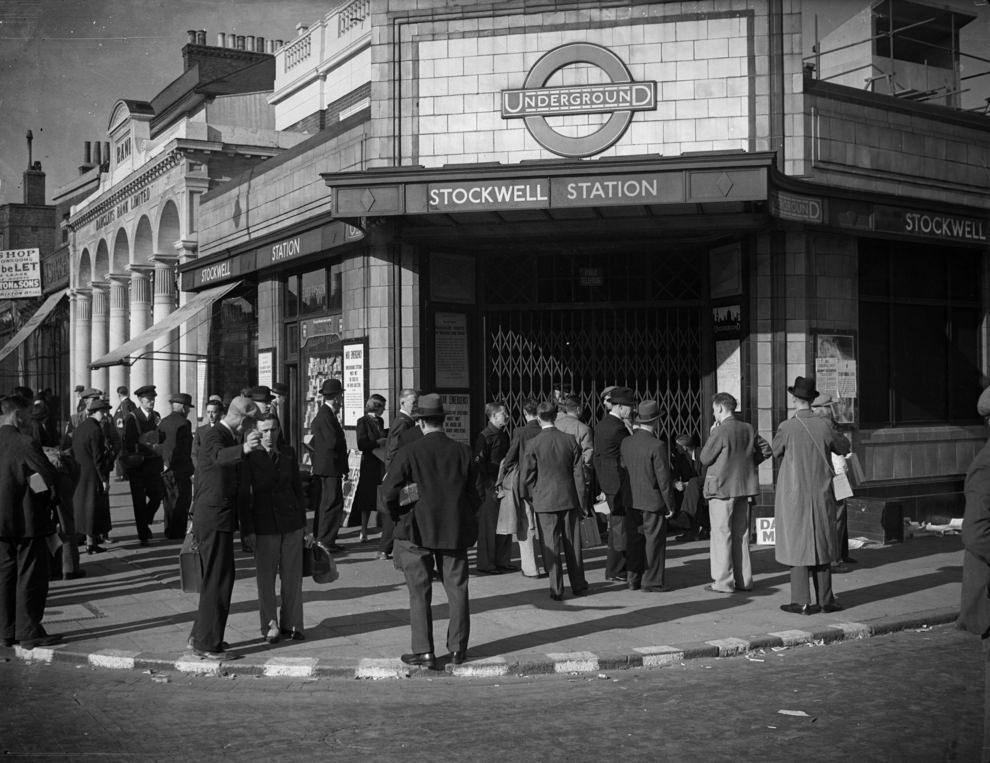
#47 City gents, 1939.
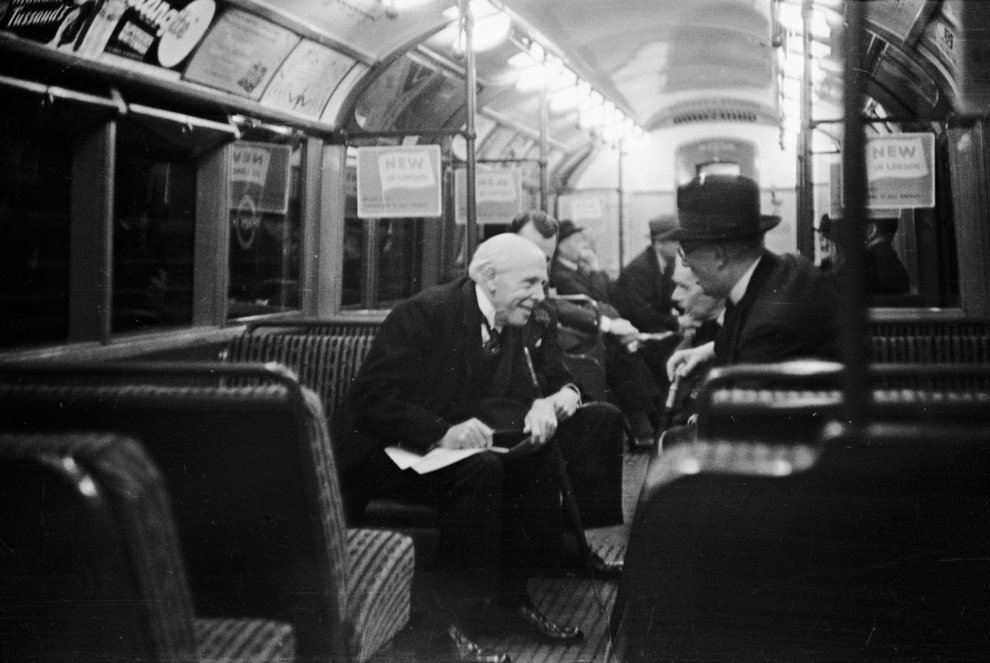
#48 A guard outside a station which has been closed to the public two days after Britain’s declaration of war on Germany, 5th September 1939.
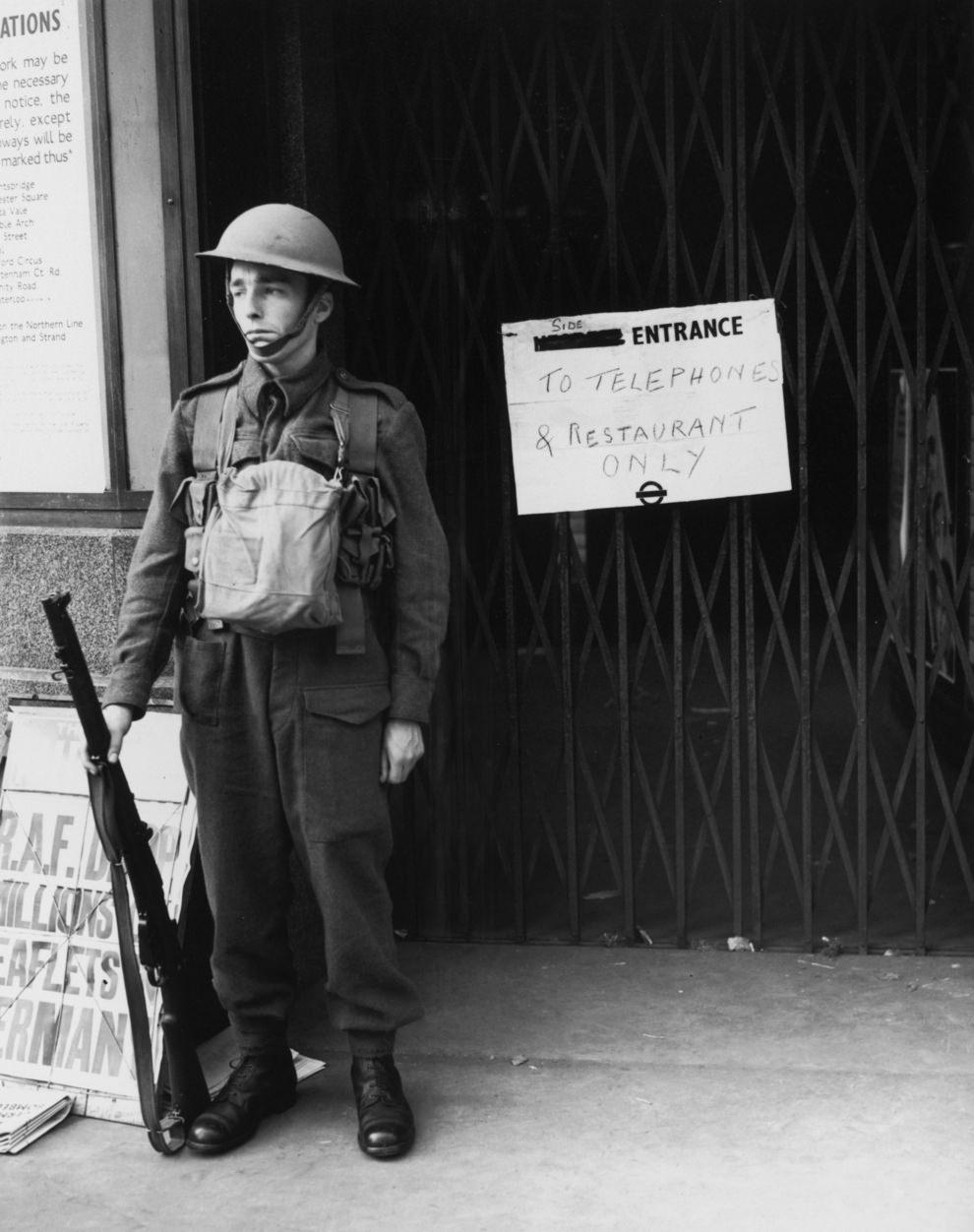
#49 People asleep on the platform of Holborn underground station during an air raid, 1940.
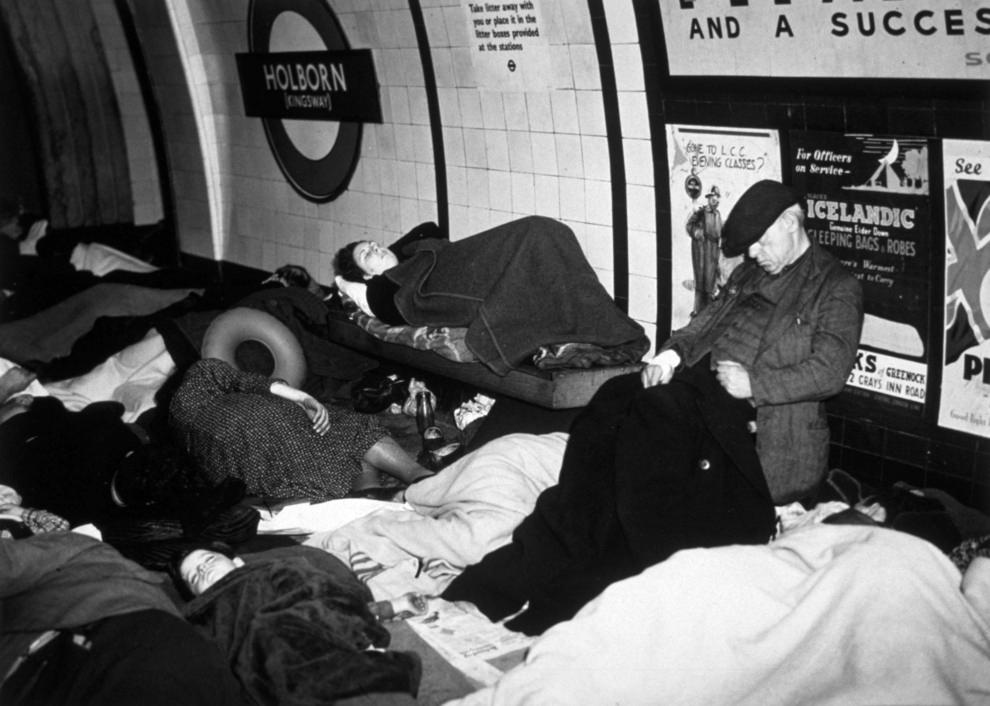
#50 People asleep on the platform at Piccadilly Tube Station, London during an air raid, 1940.
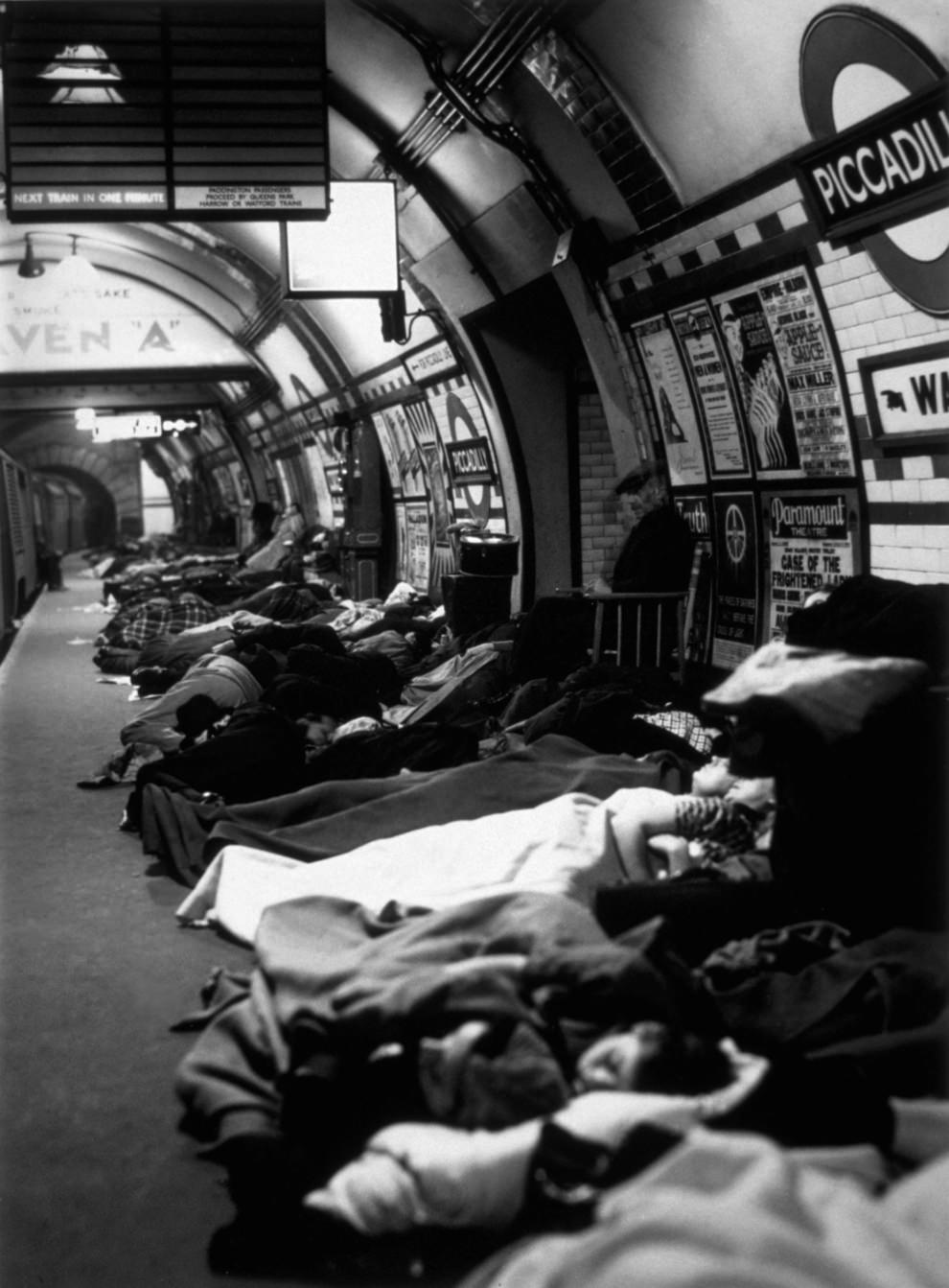
#51 People asleep on the escalators at Piccadilly Tube Station, London, during an air raid, 1940.
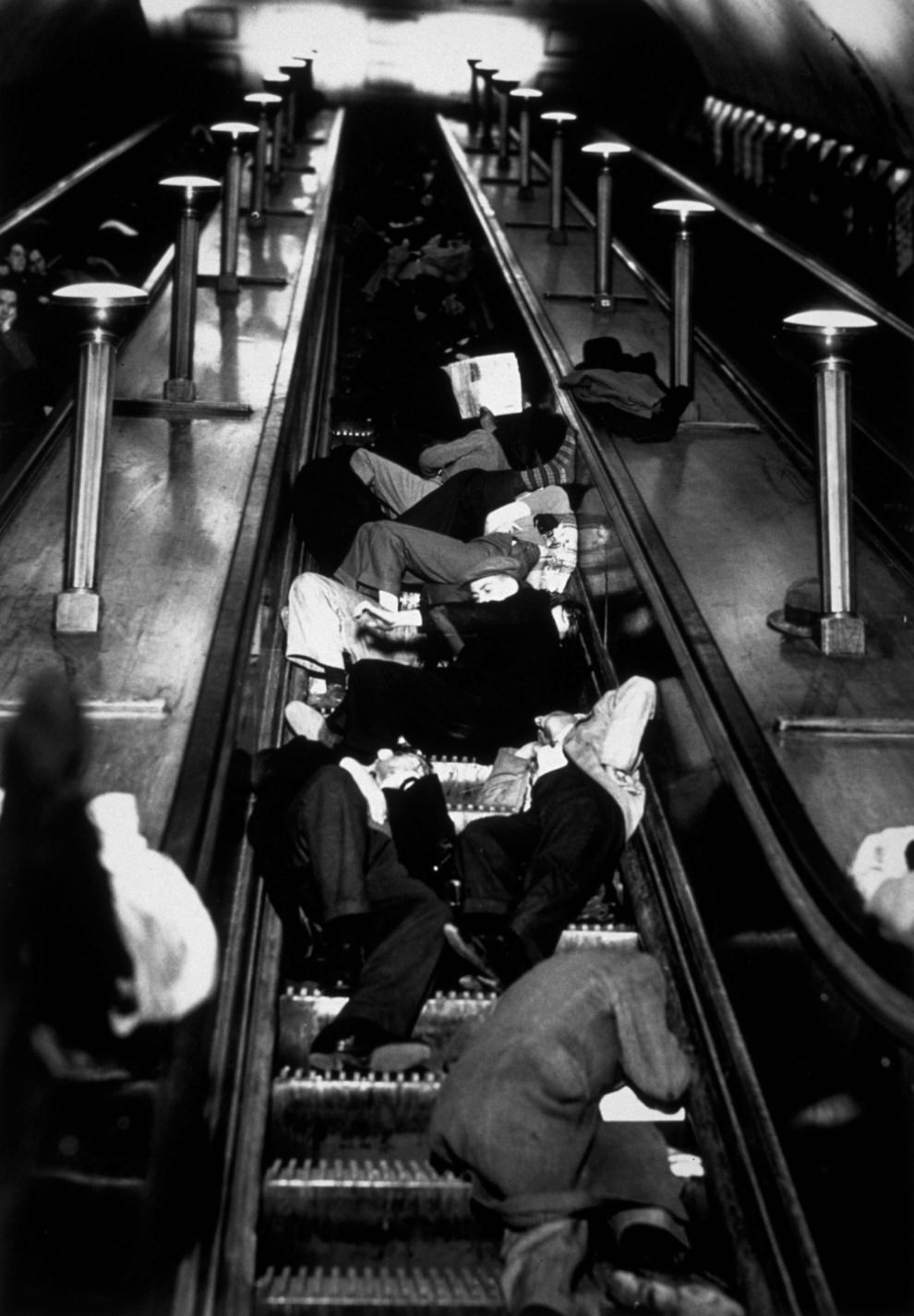
#52 Piccadilly, 1940.
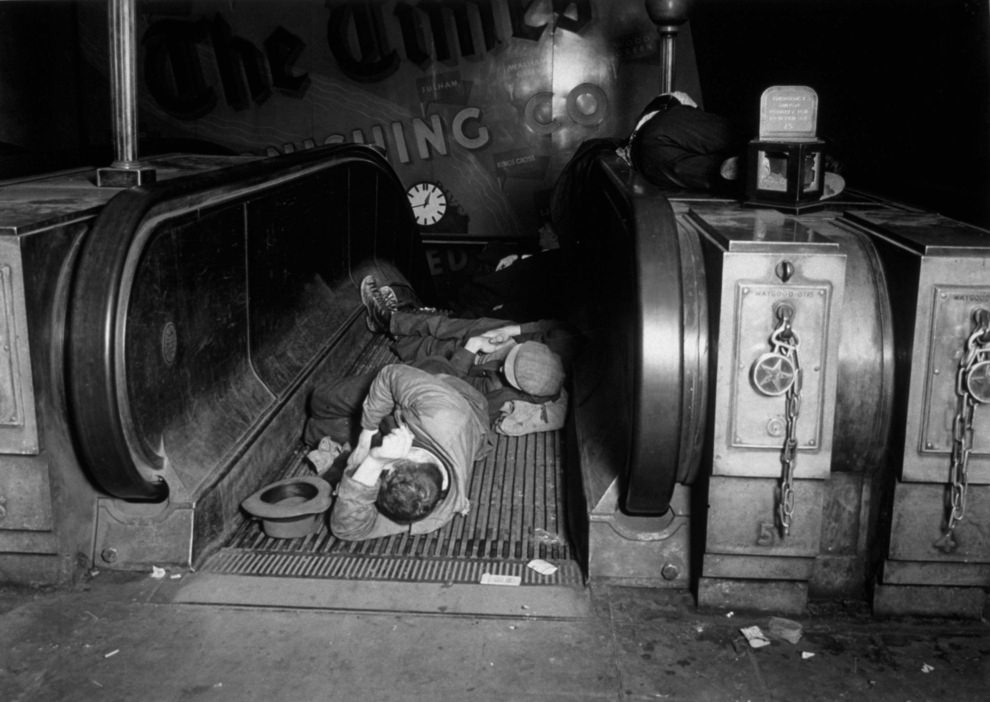
#53 Piccadilly, 1940.
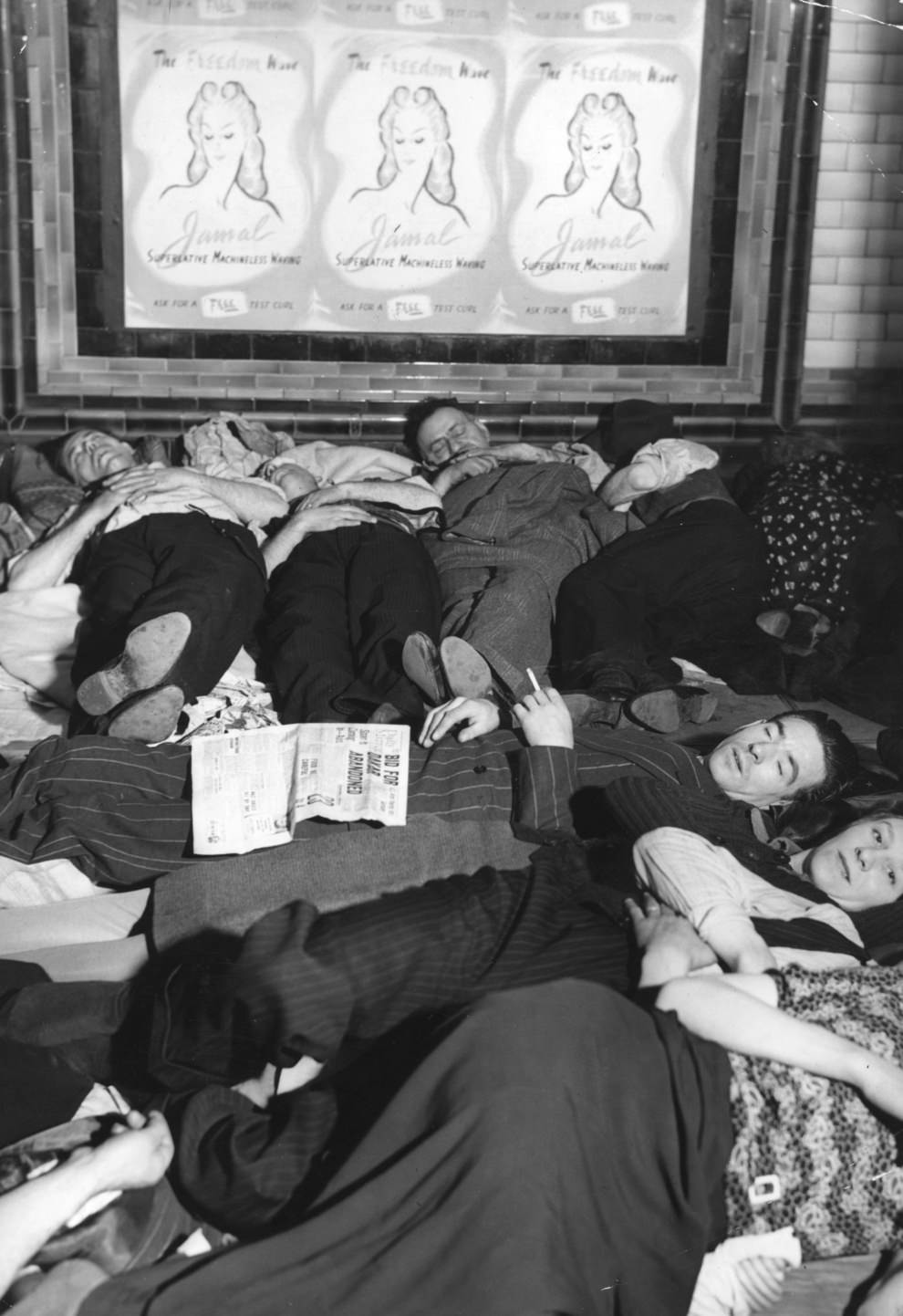
#54 London Underground rat-catchers with their net and ferrets, ca. 1950.
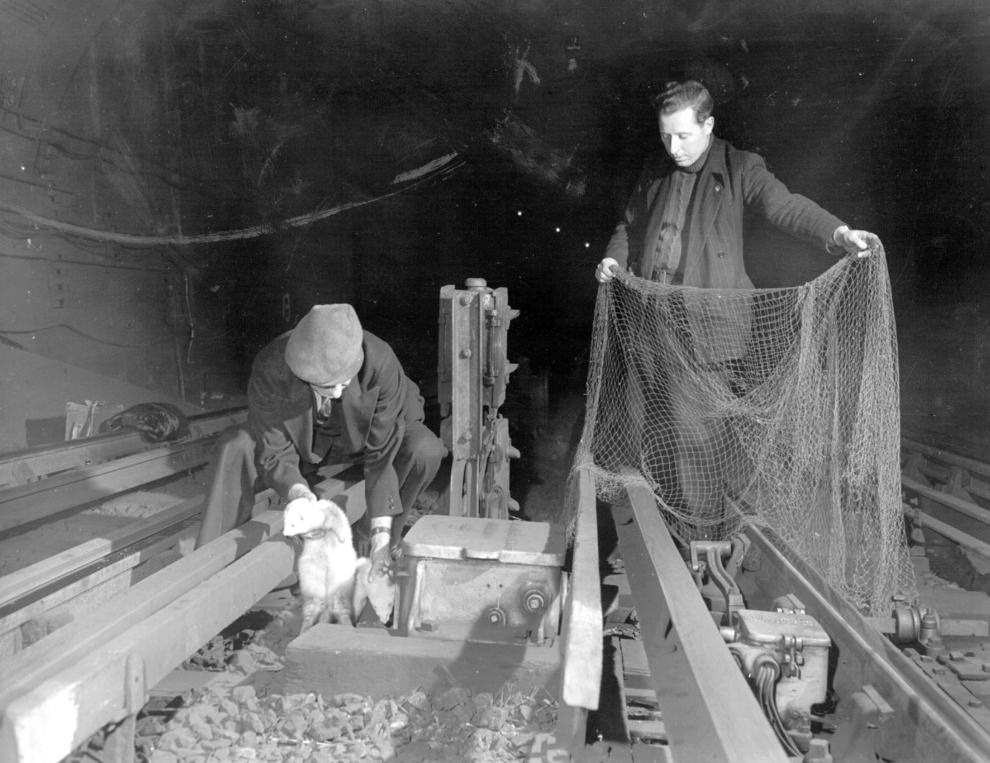
#55 A group of women cleaning one of London’s underground tunnels, 1952.
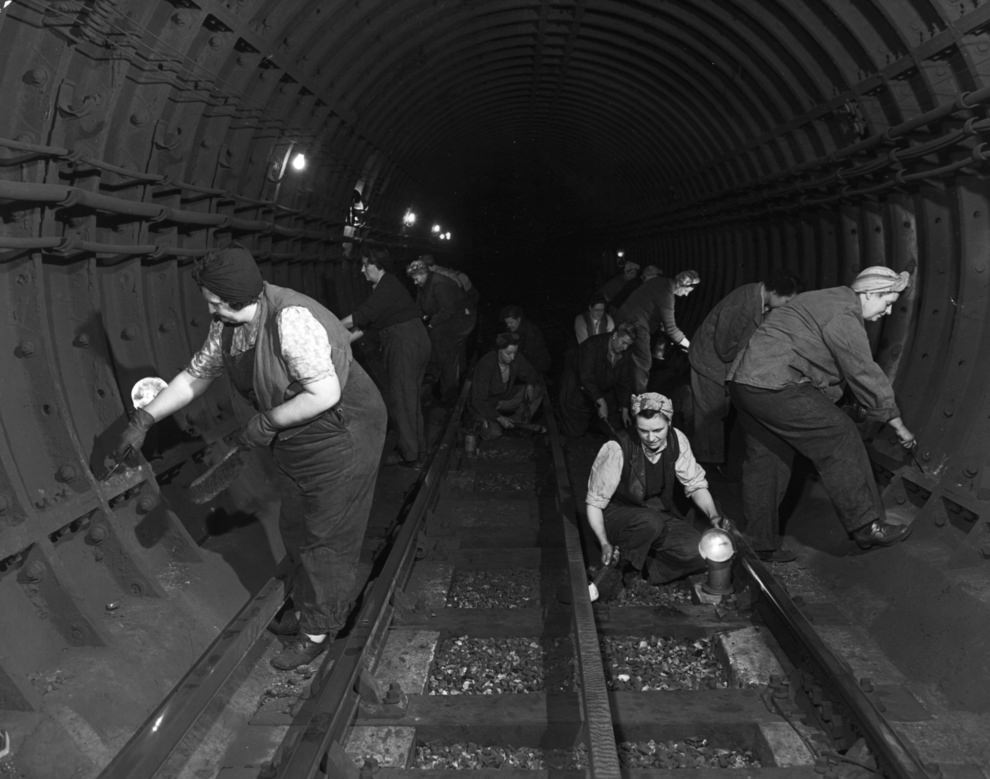
#56 Advertisements being pasted up, 1952.
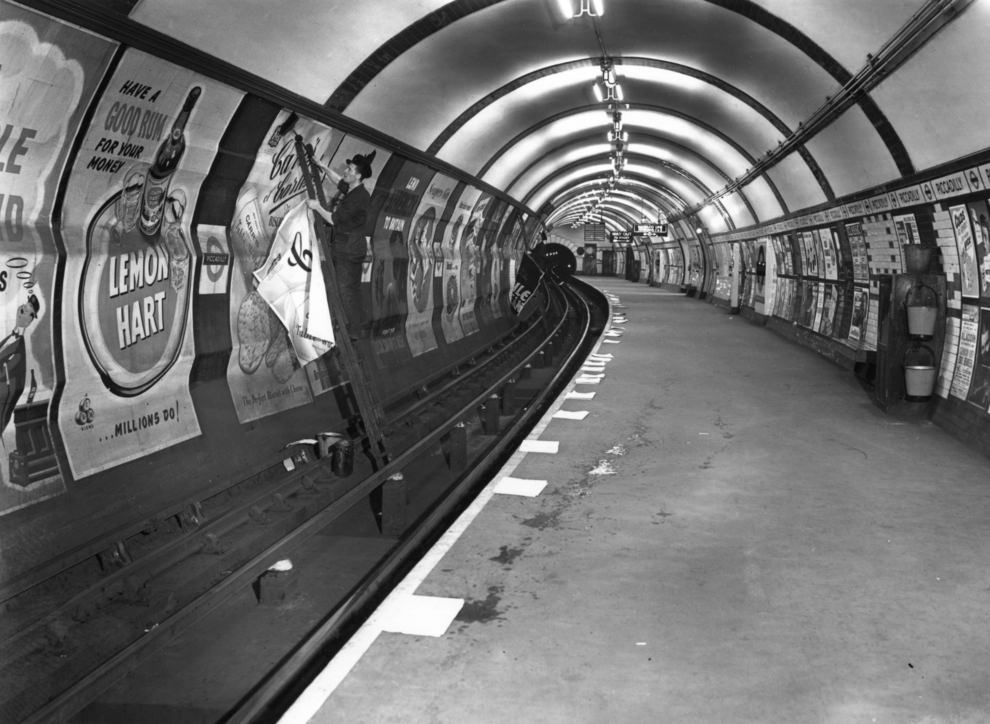
#57 Tube cleaner, 1952.
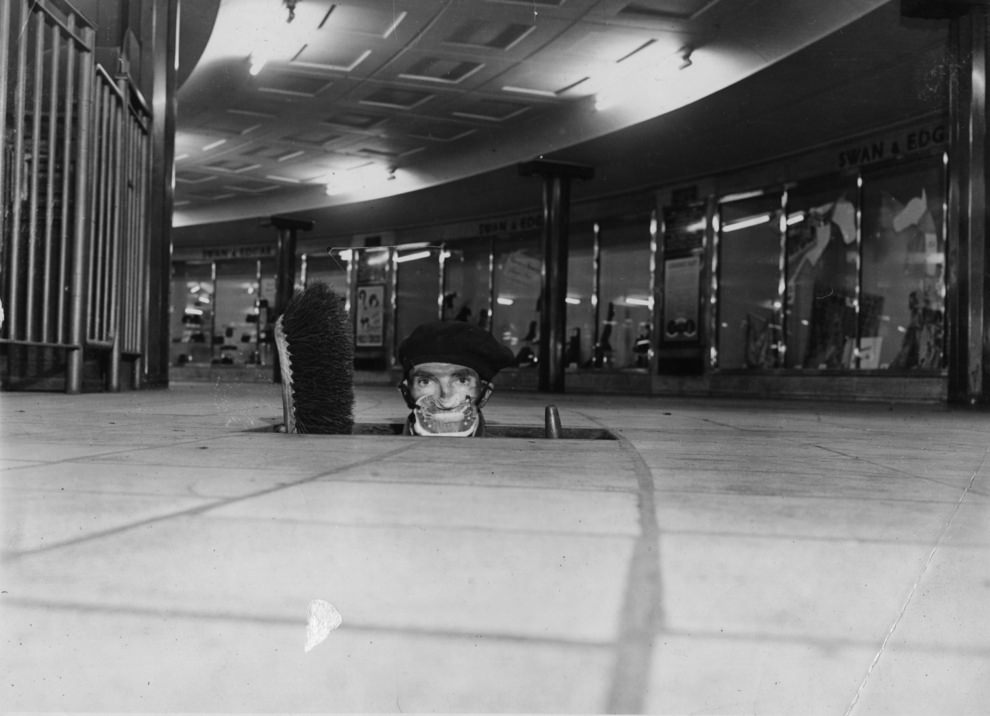
#58 Tube train at Picadilly Circus, 1952.
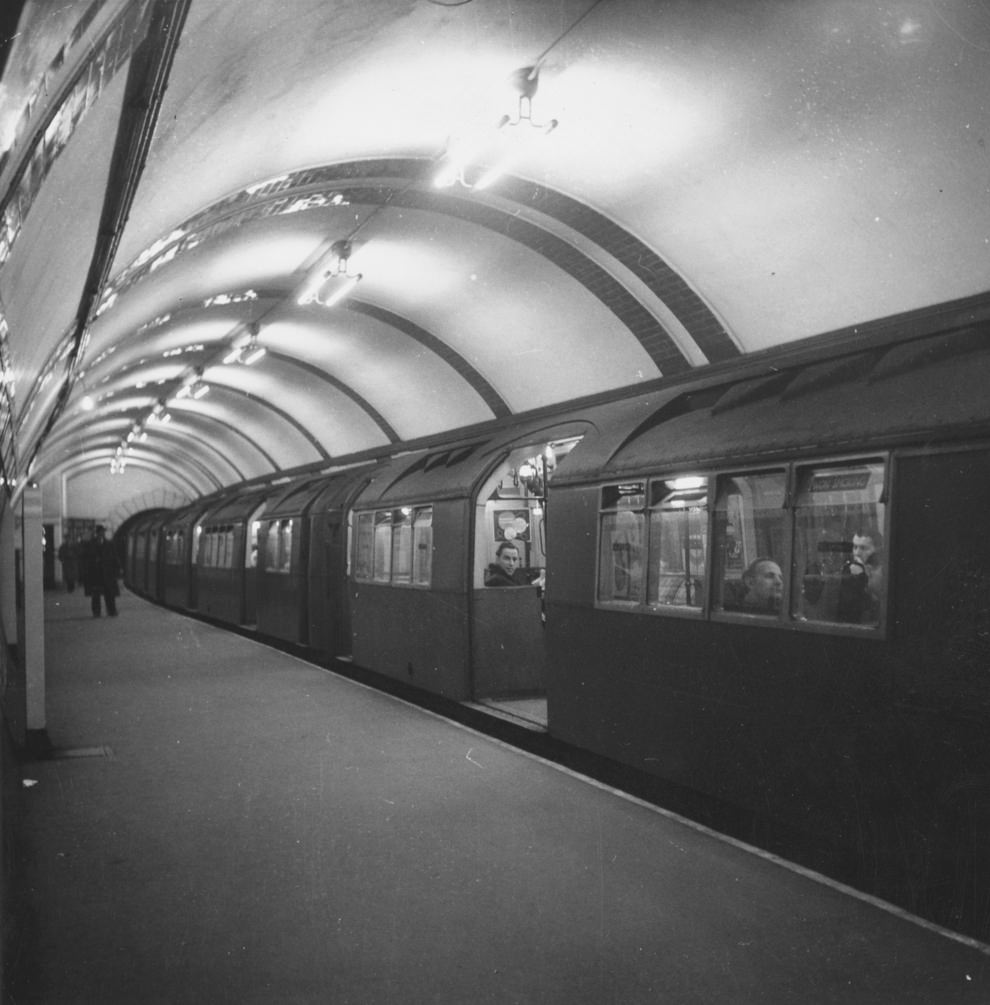
#59 Liverpool Street, 1952.
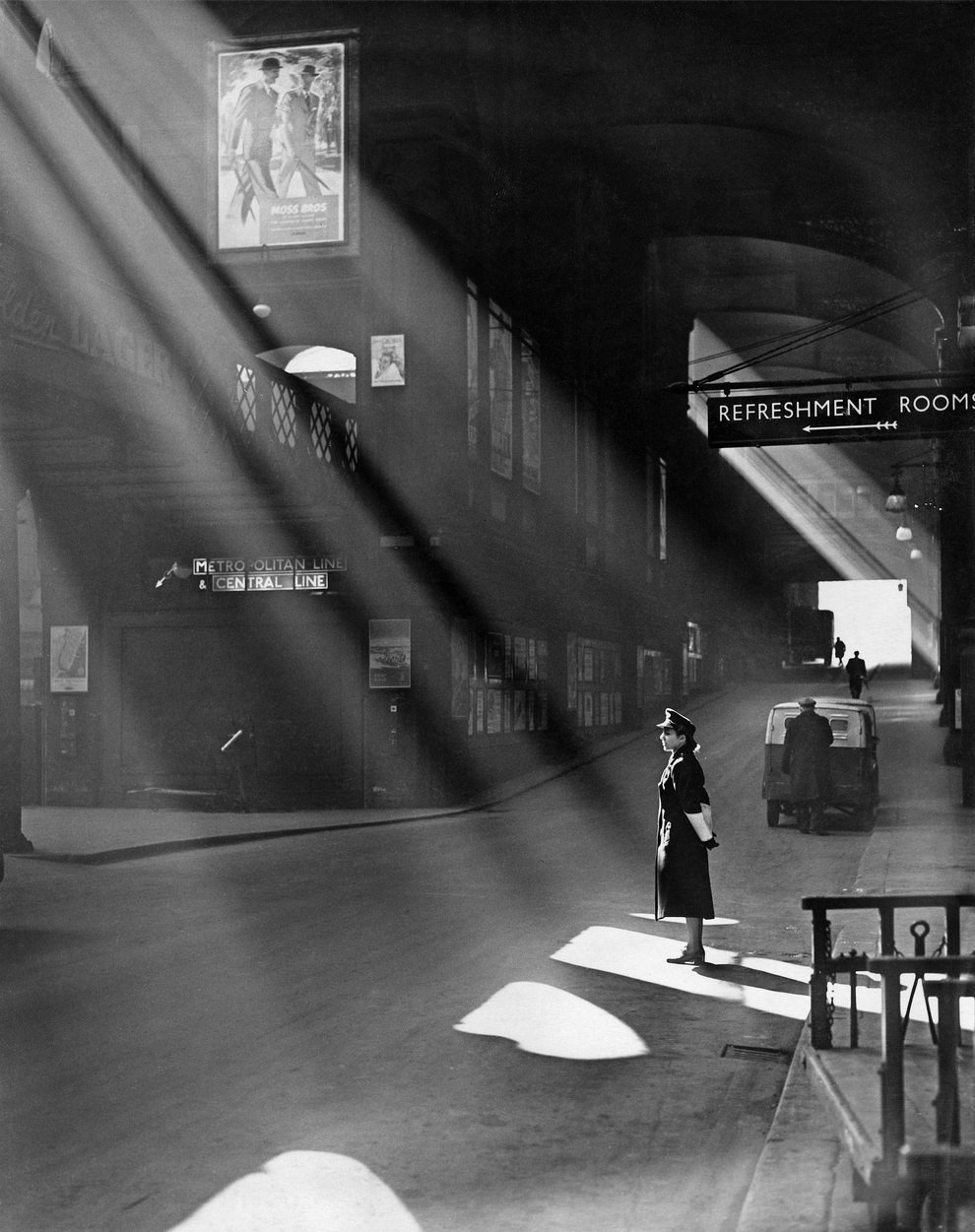
#60 Kingsway Tram, 1952.
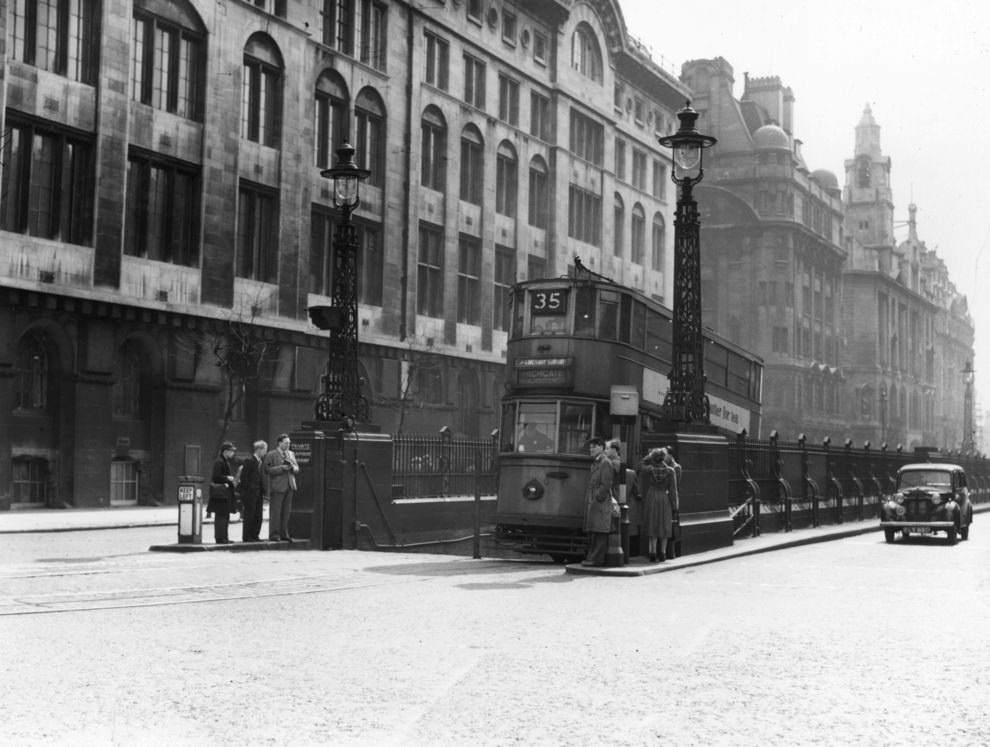
#61 Underground fluffers, 1954.
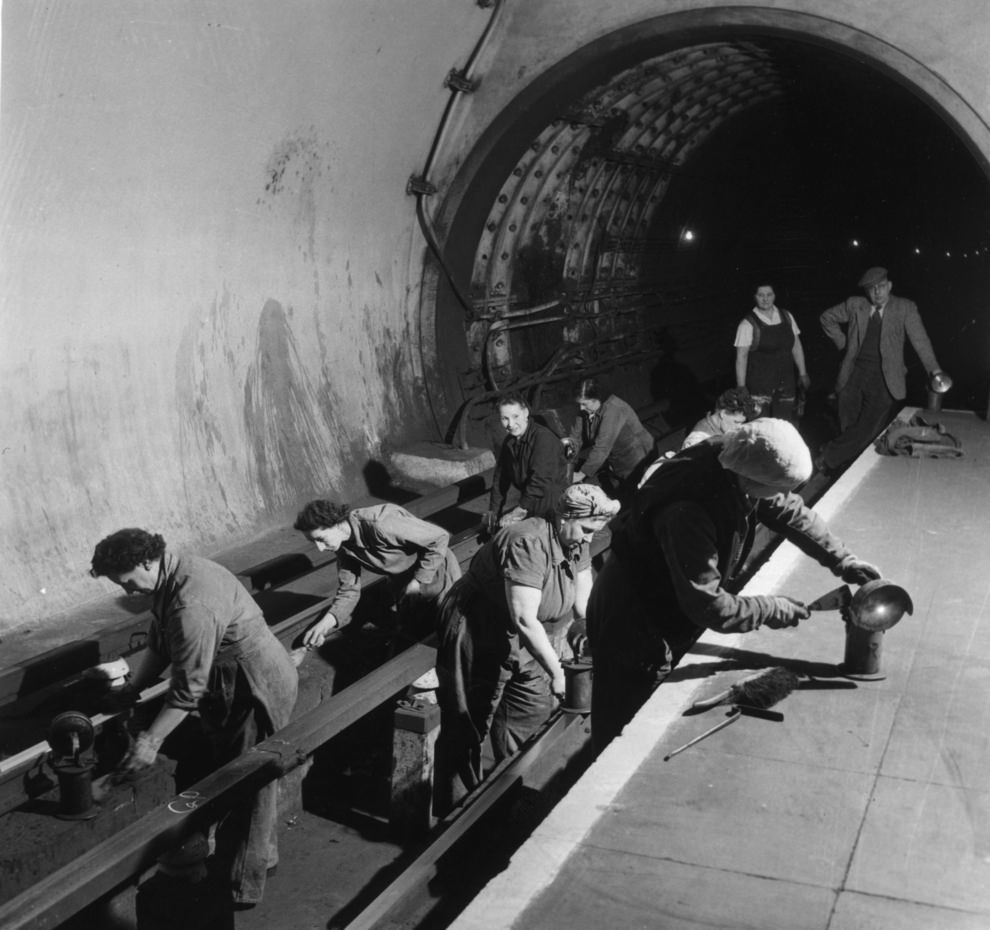
#62 Underground life, 1955.
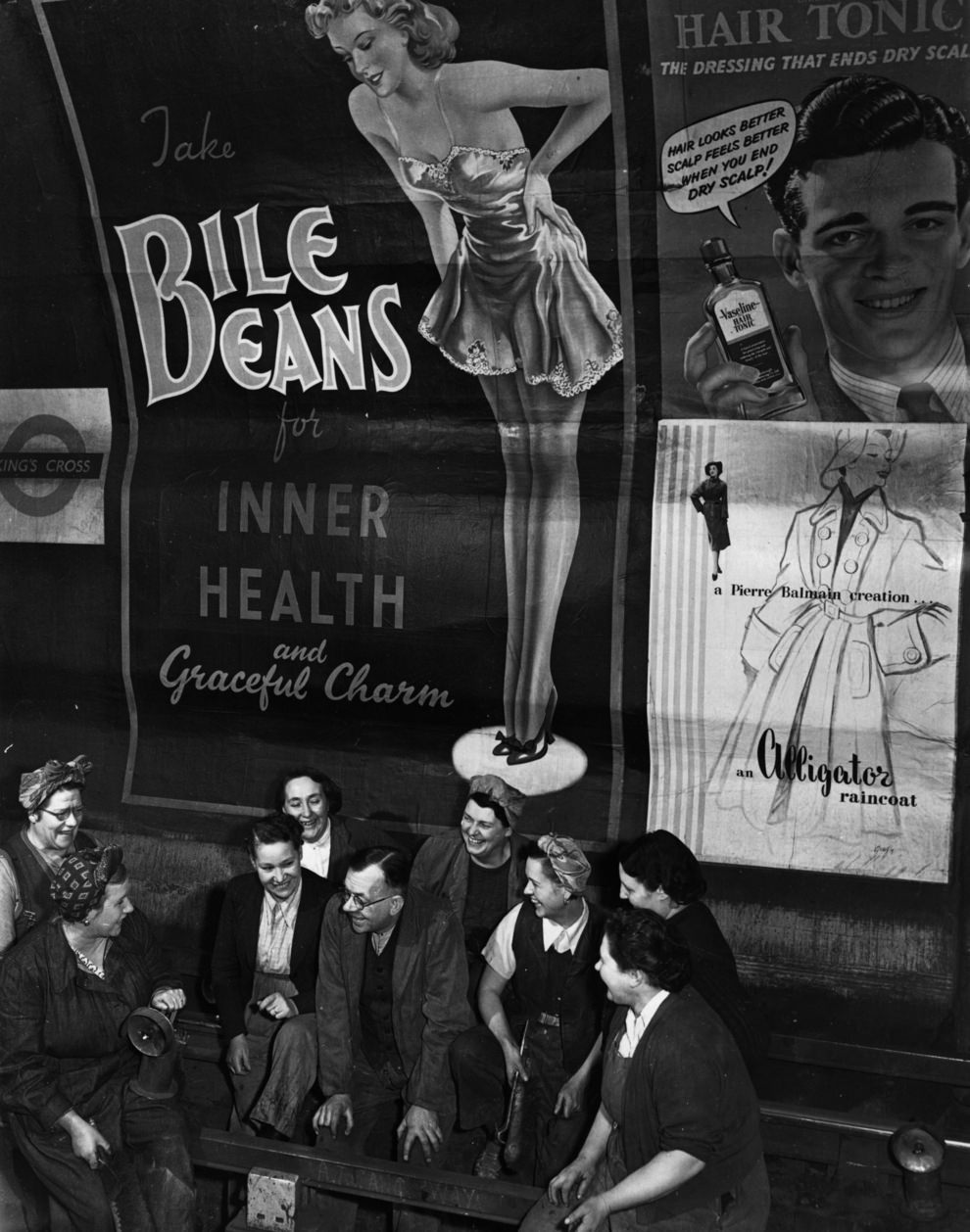
#63 All-night dancing, 1955.
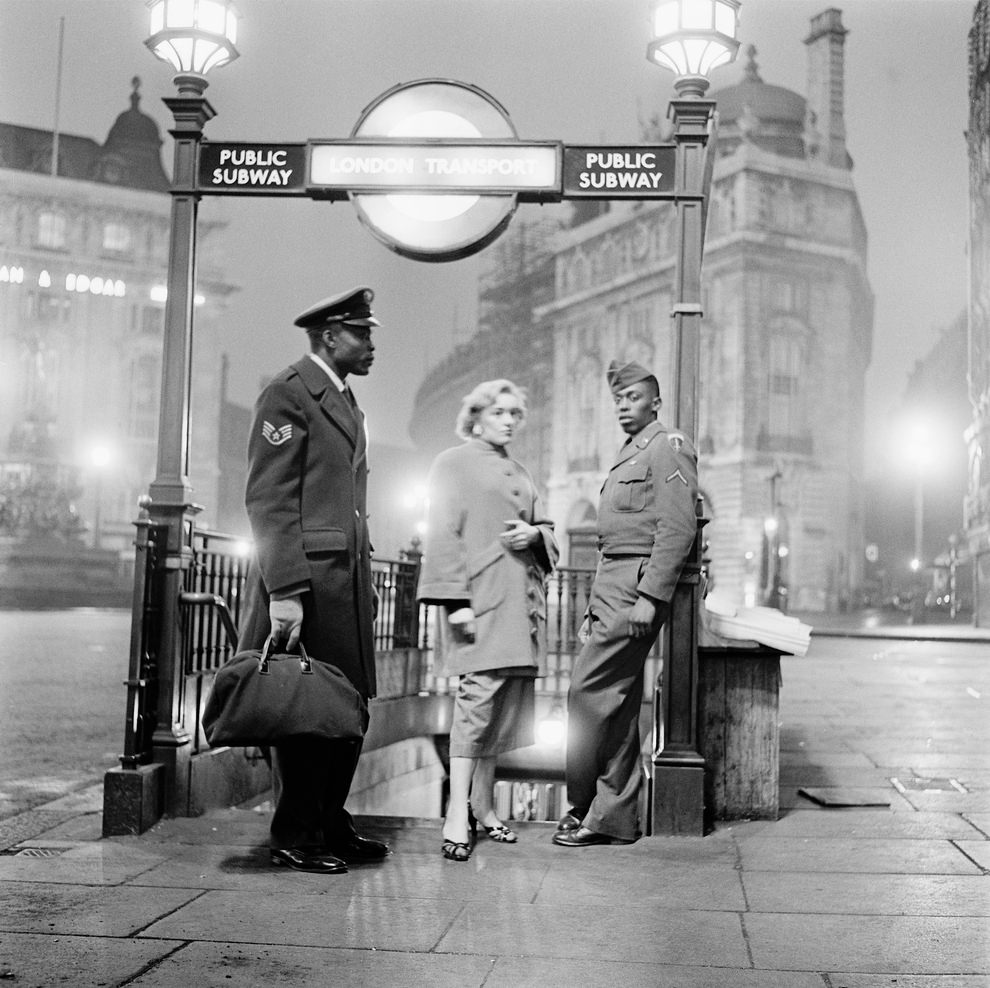
#64 Downtown Soho, 1956.
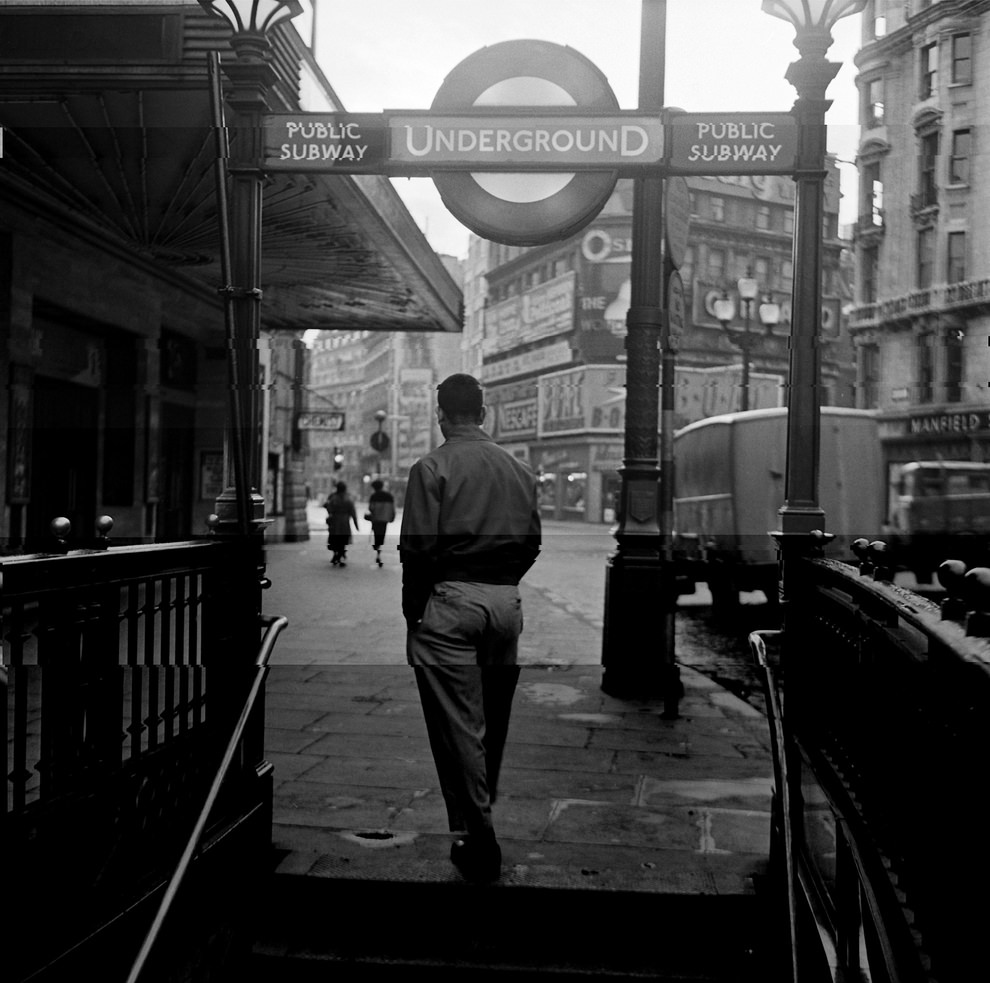
#65 Piccadilly Circus, 1956.
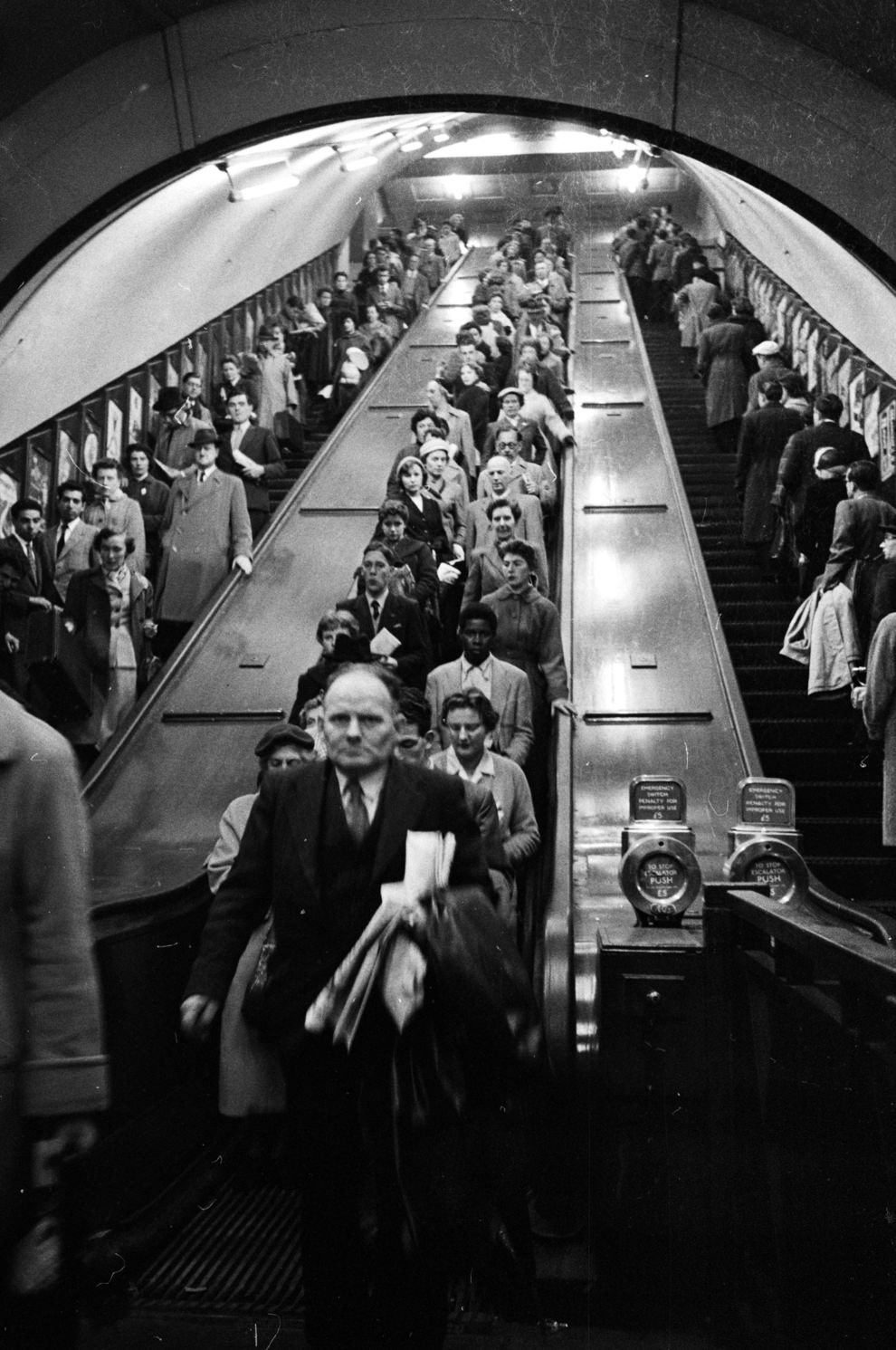
#66 Rush hour, 1956.
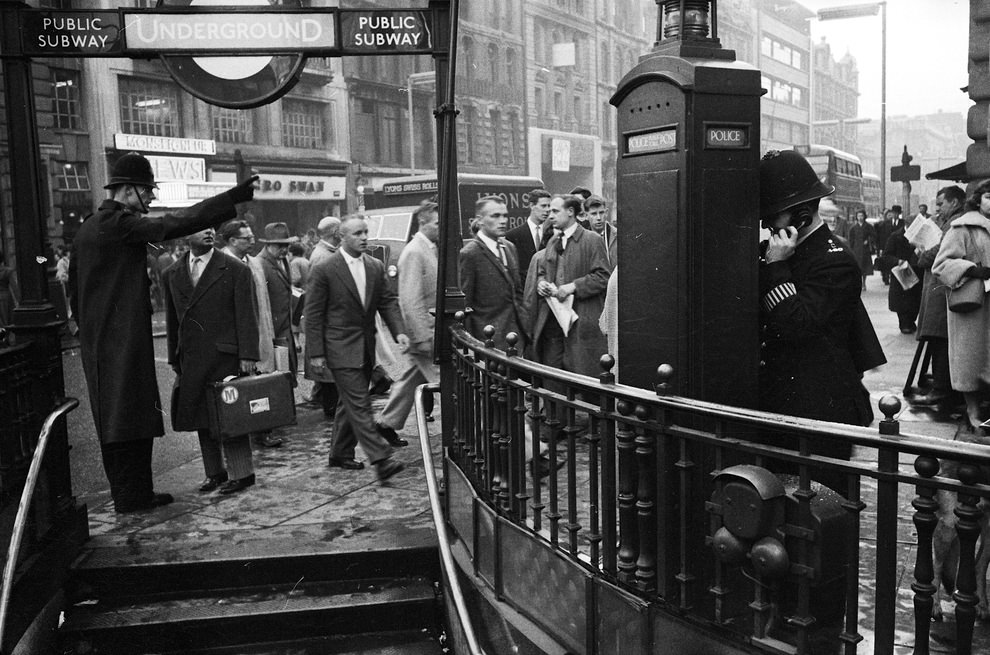
#67 Rush hour, London Bridge, 1956.
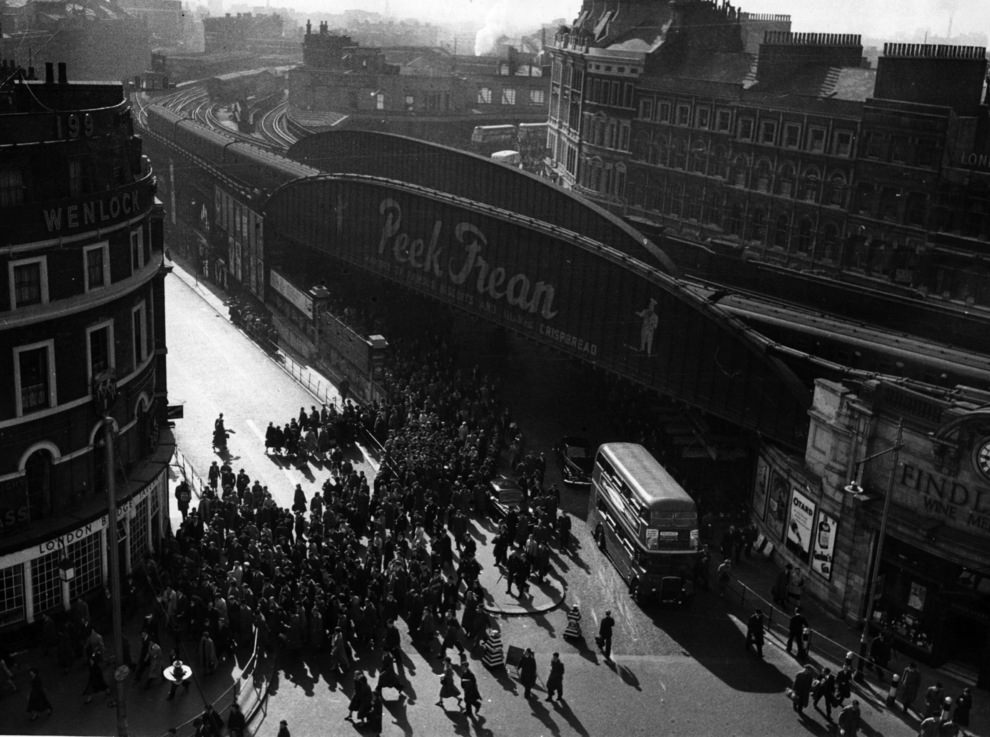
#68 Tube music, 1957.
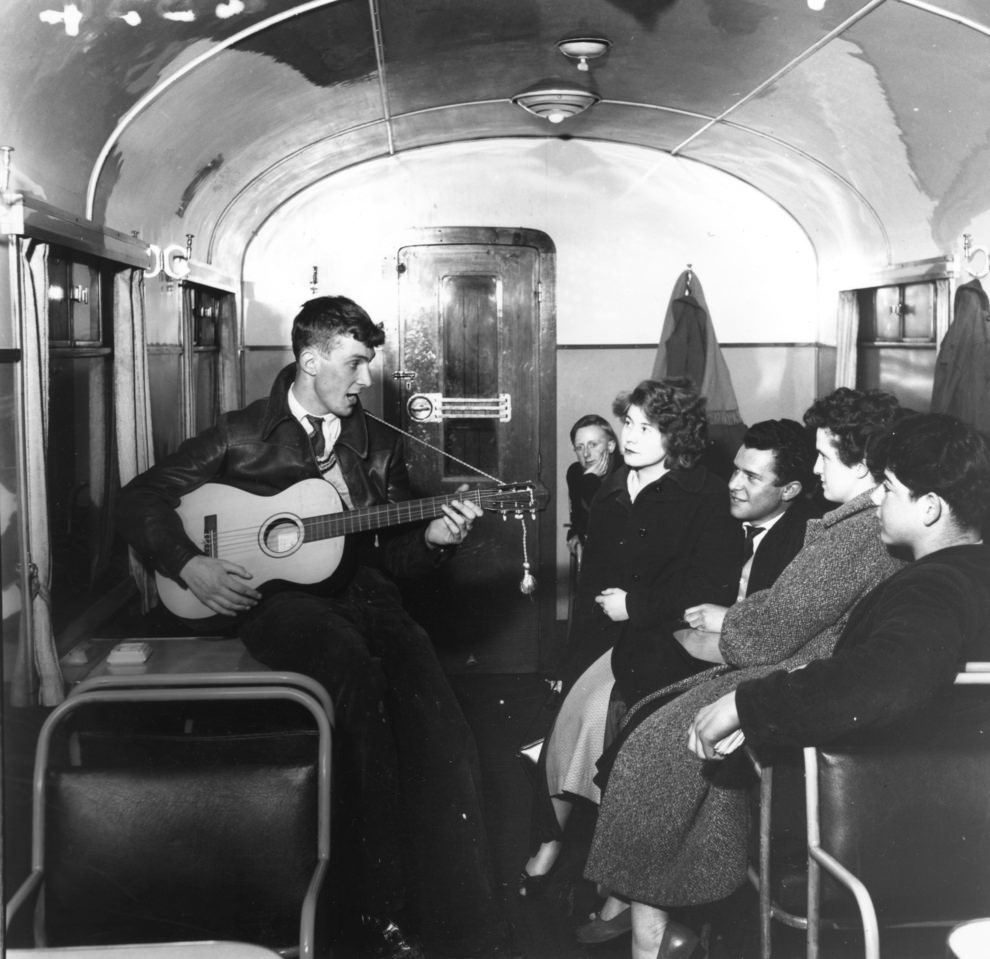
#69 Silver trains, 1957.
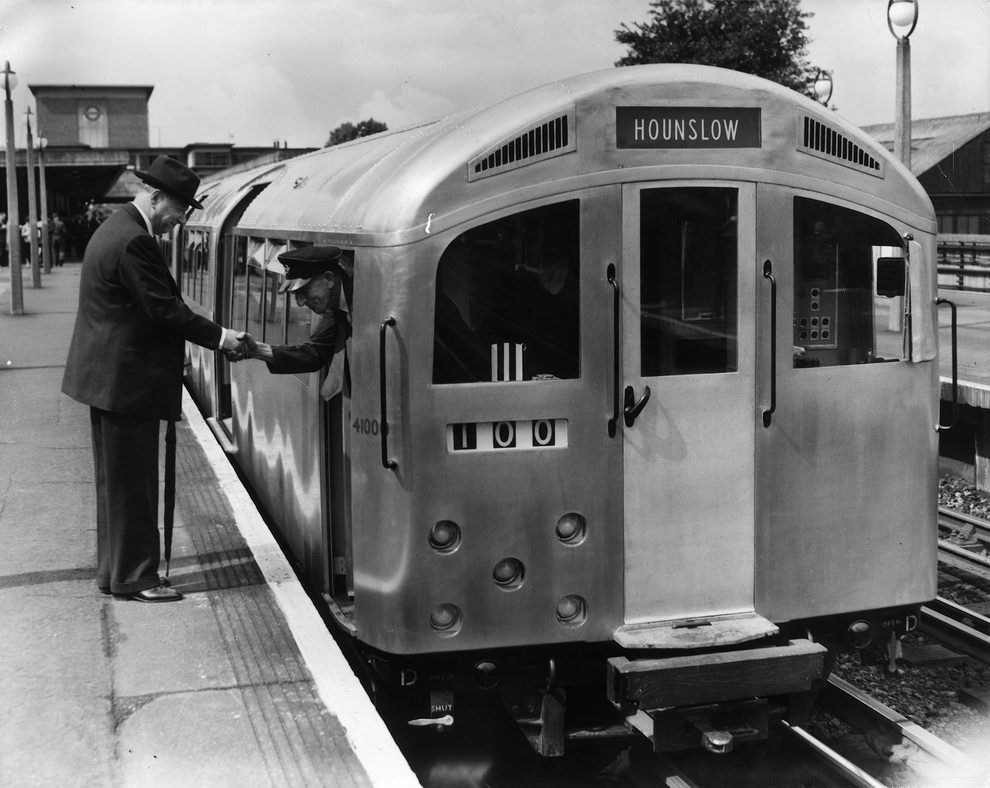
#70 Bus strike, 1958.
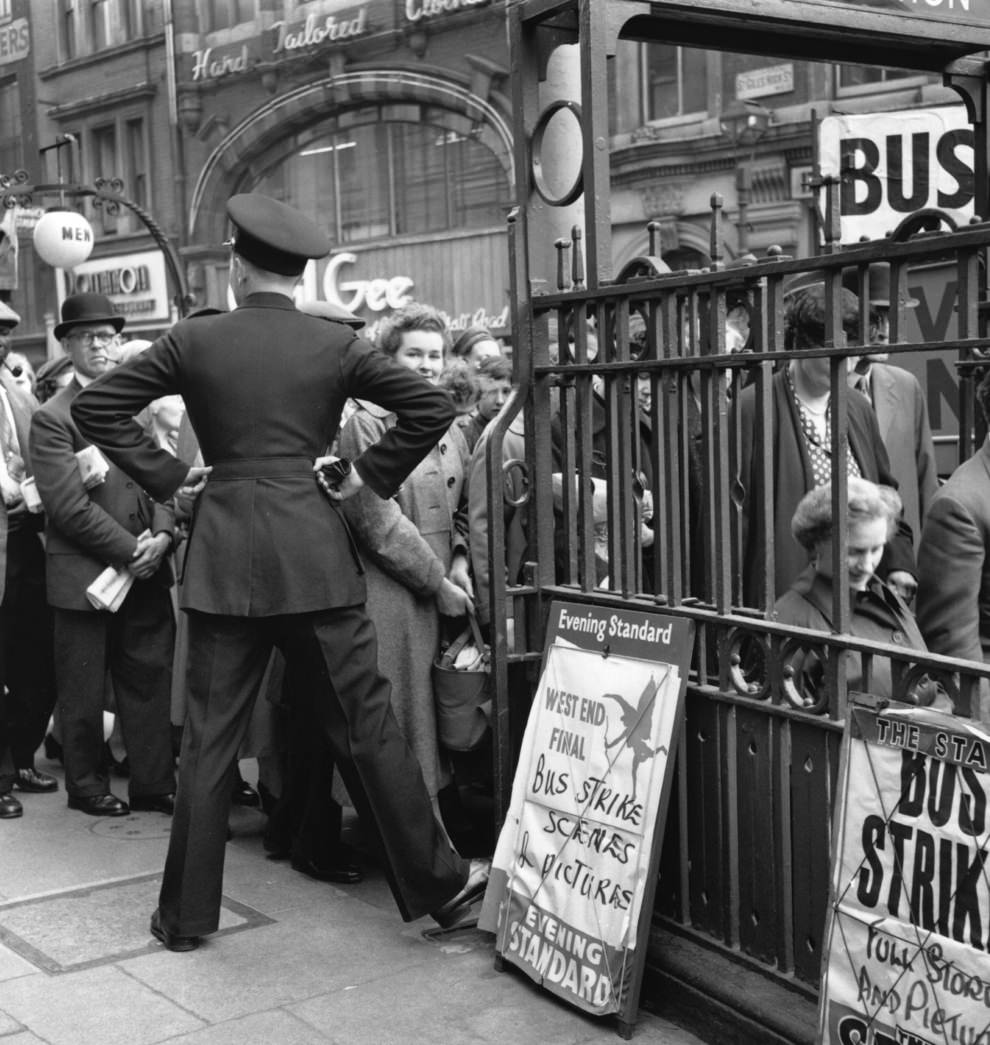
#71 Oxford Circus, 1958.
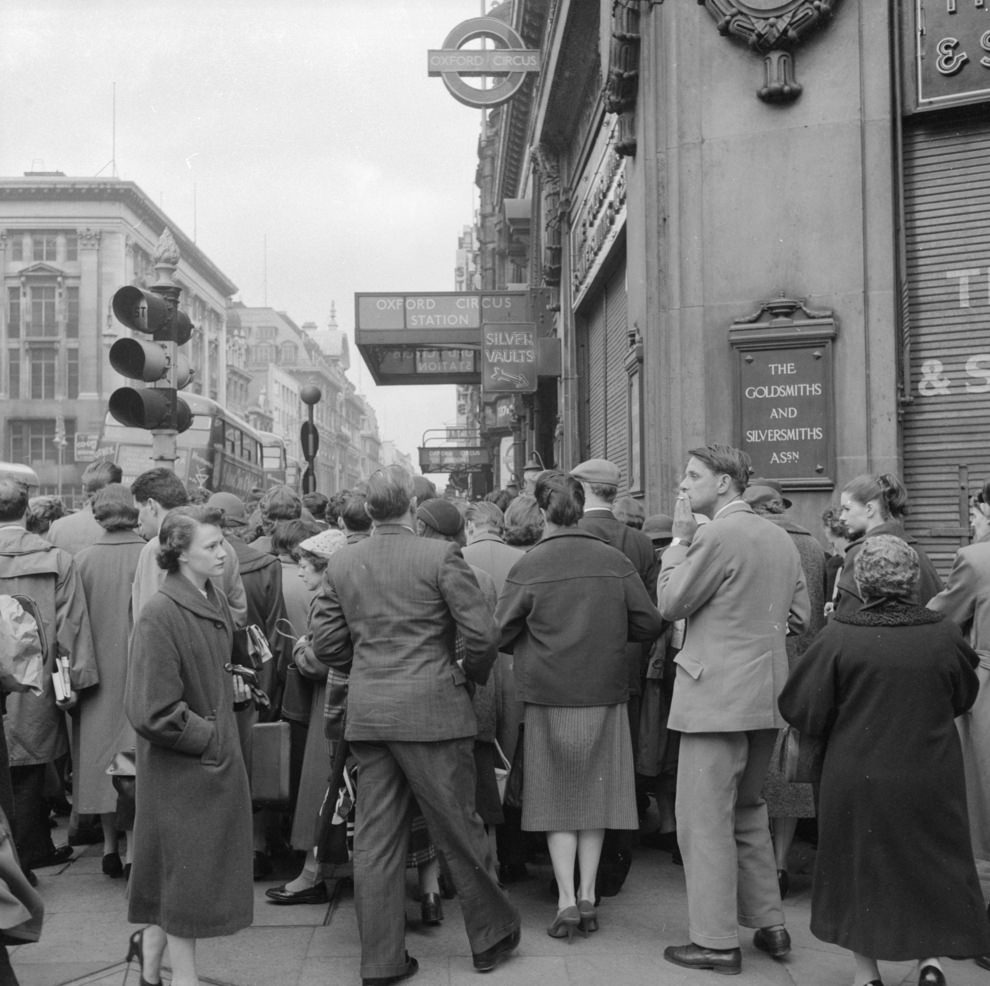
#72 Oxford Circus, 1958.
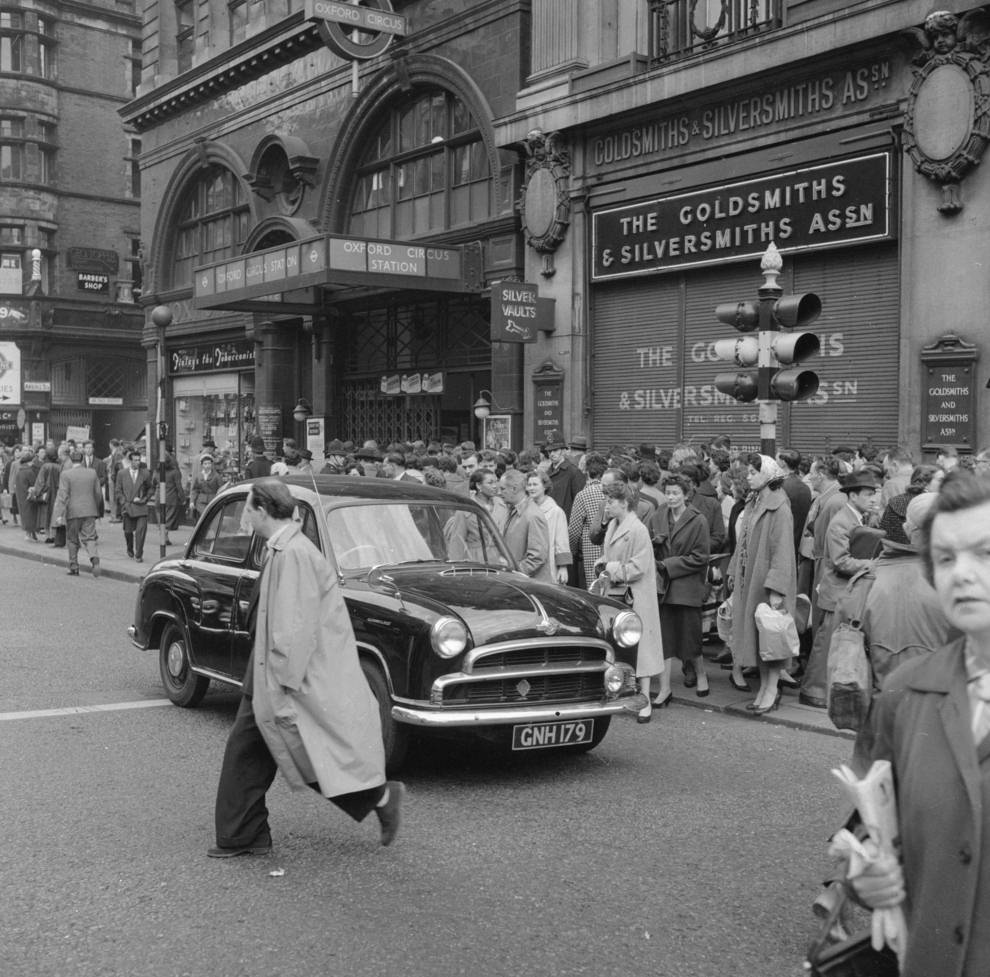
#73 London Bridge, 1958.
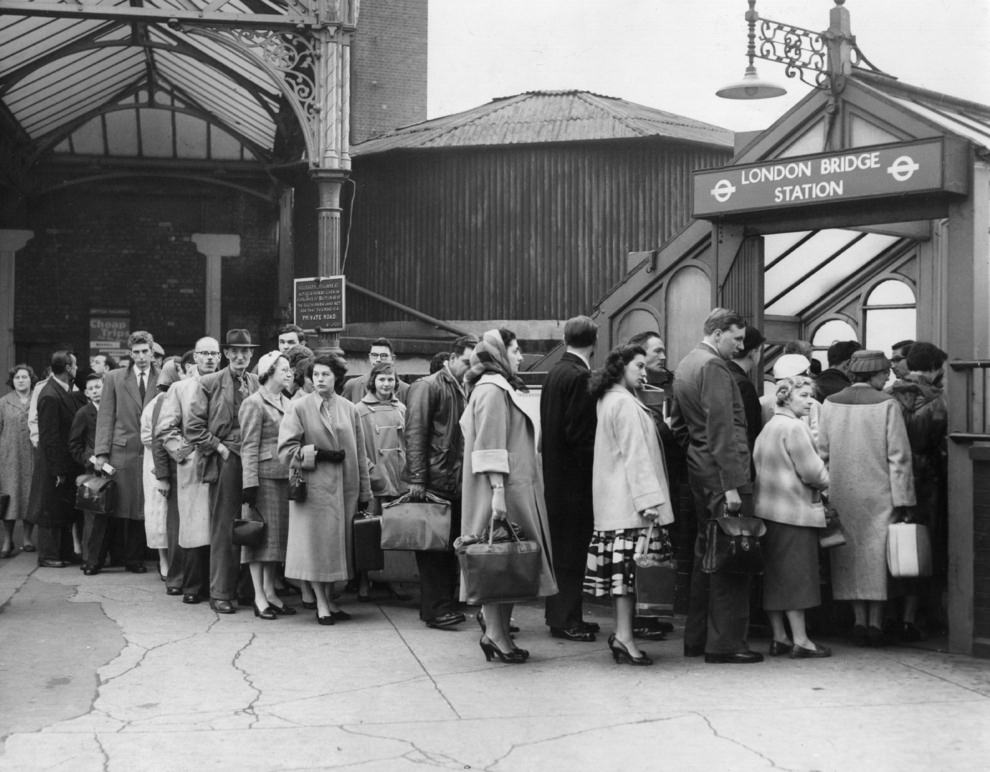
#74 Publishing liberalized, 1960.
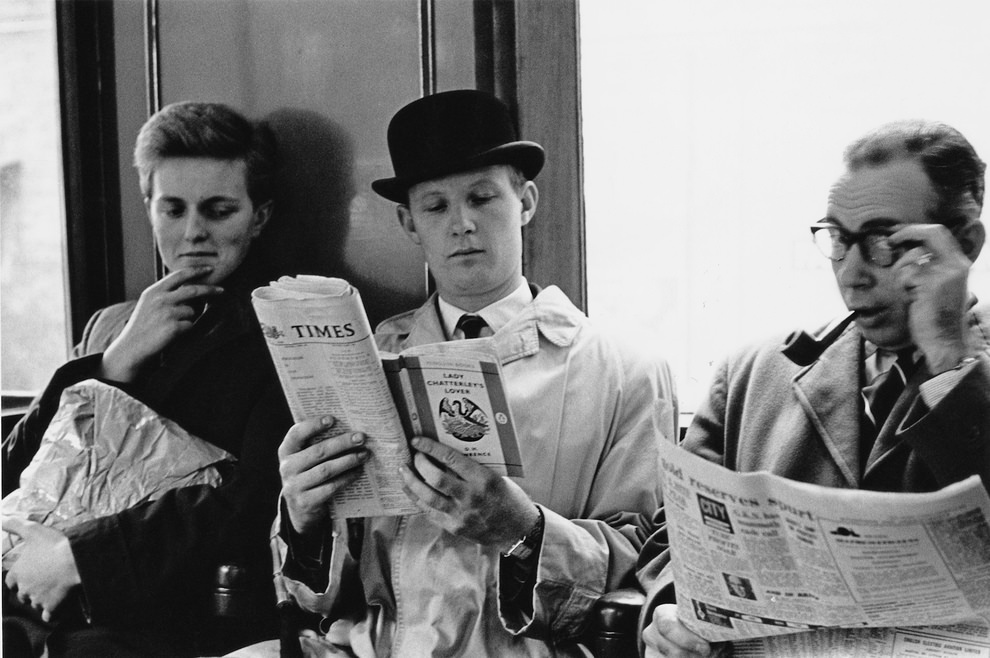
#75 Frenchman in London, 1963.
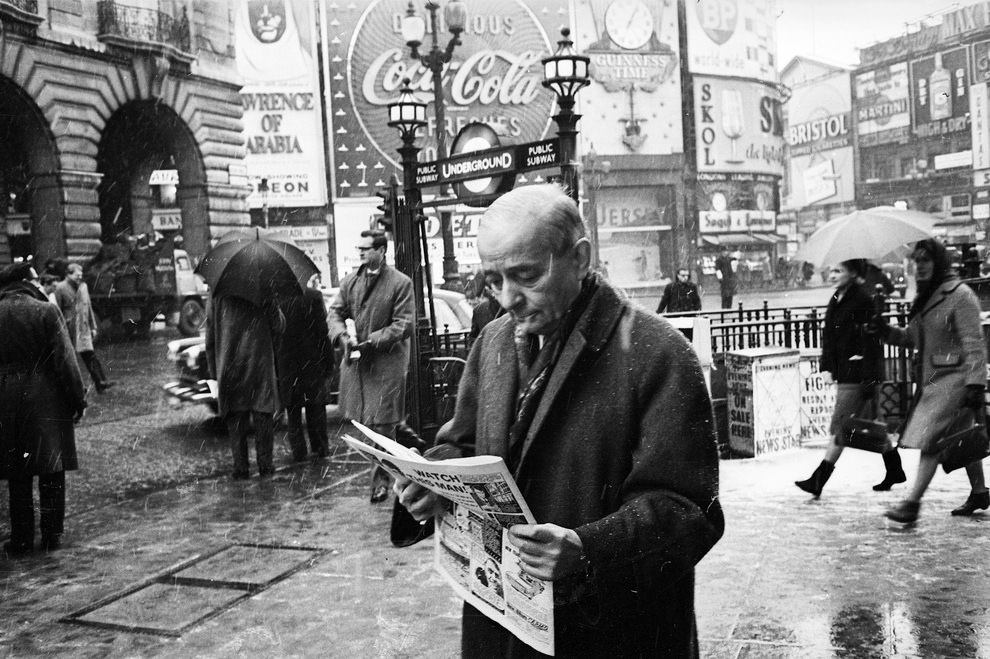
#76 Oxford Circus, 1963.
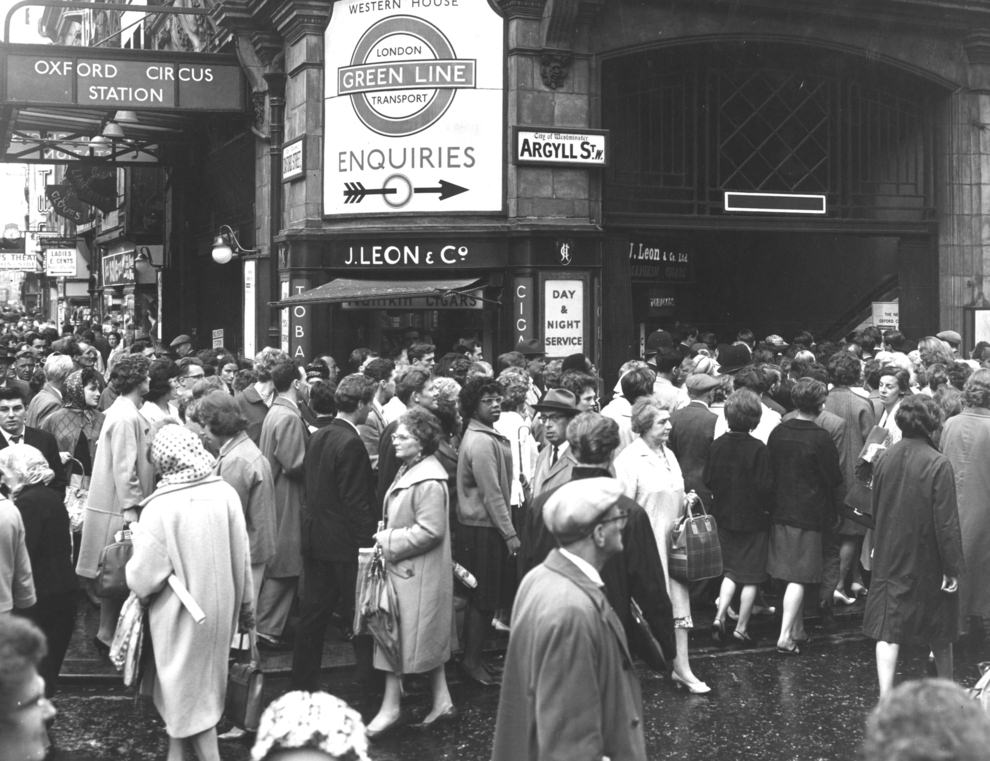
#77 Mystery package, 1964.
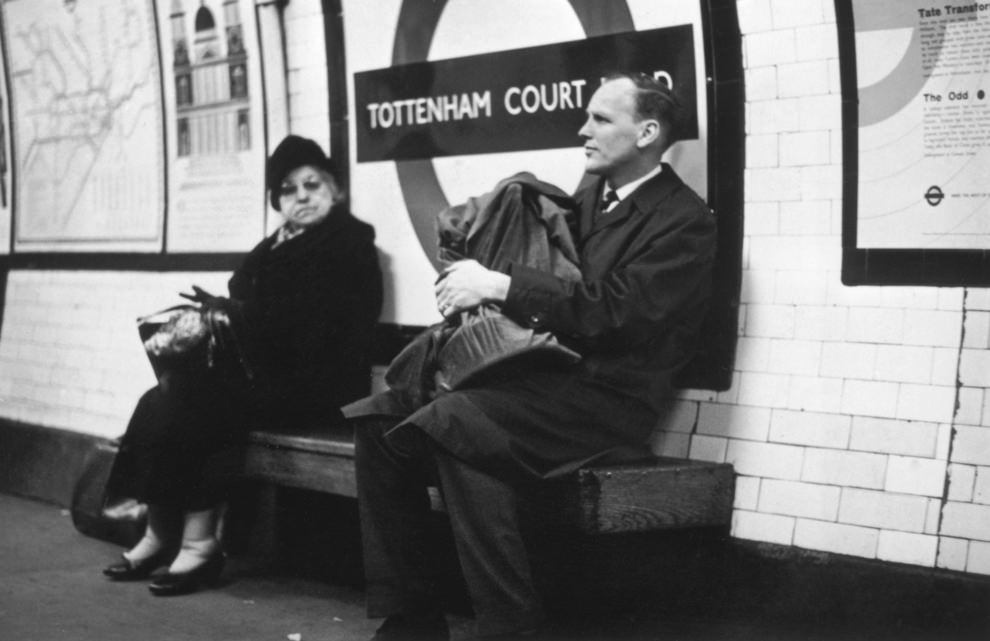
#78 Sikh underground, 1964.
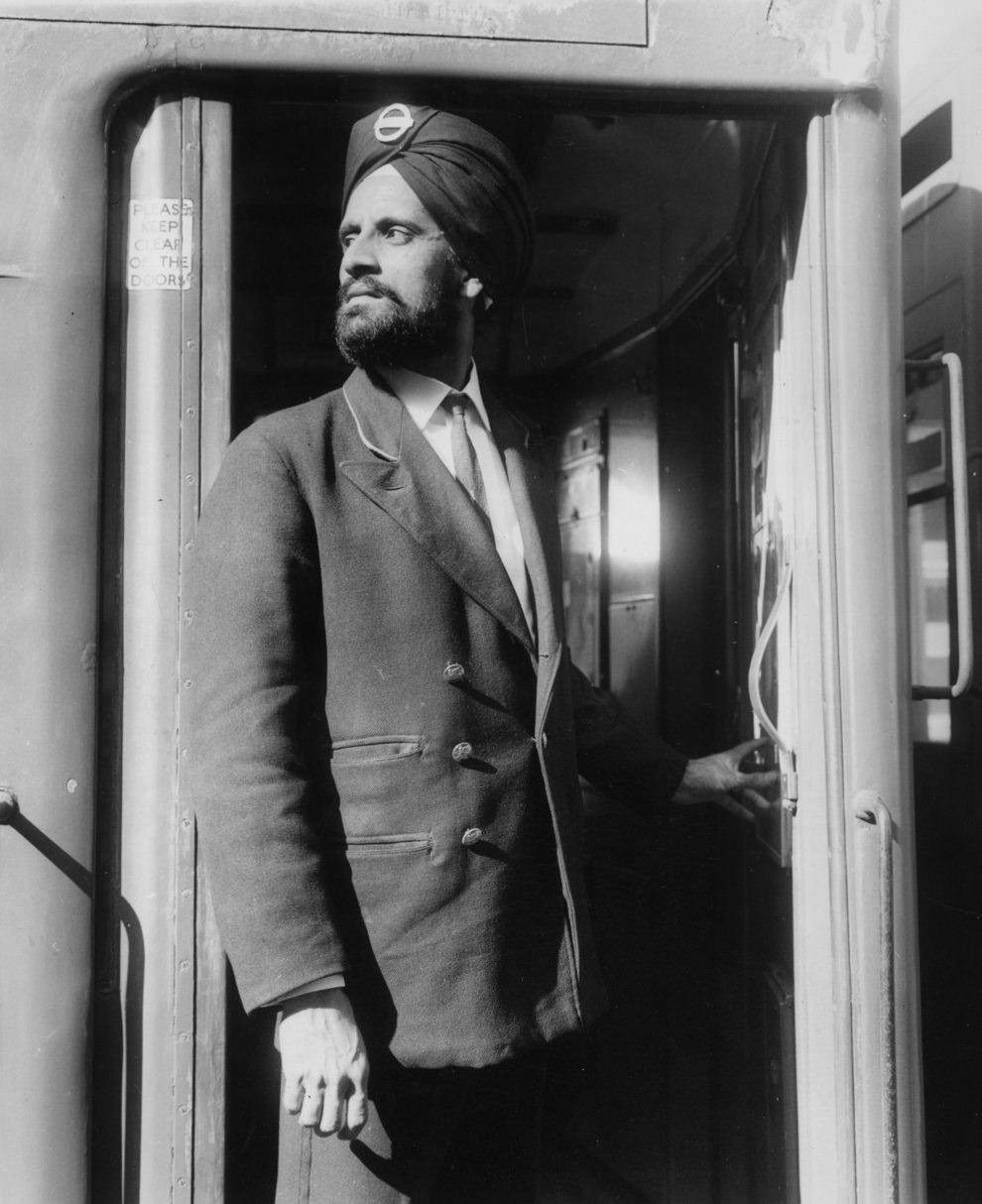
#79 Piccadilly Circus, 1966.
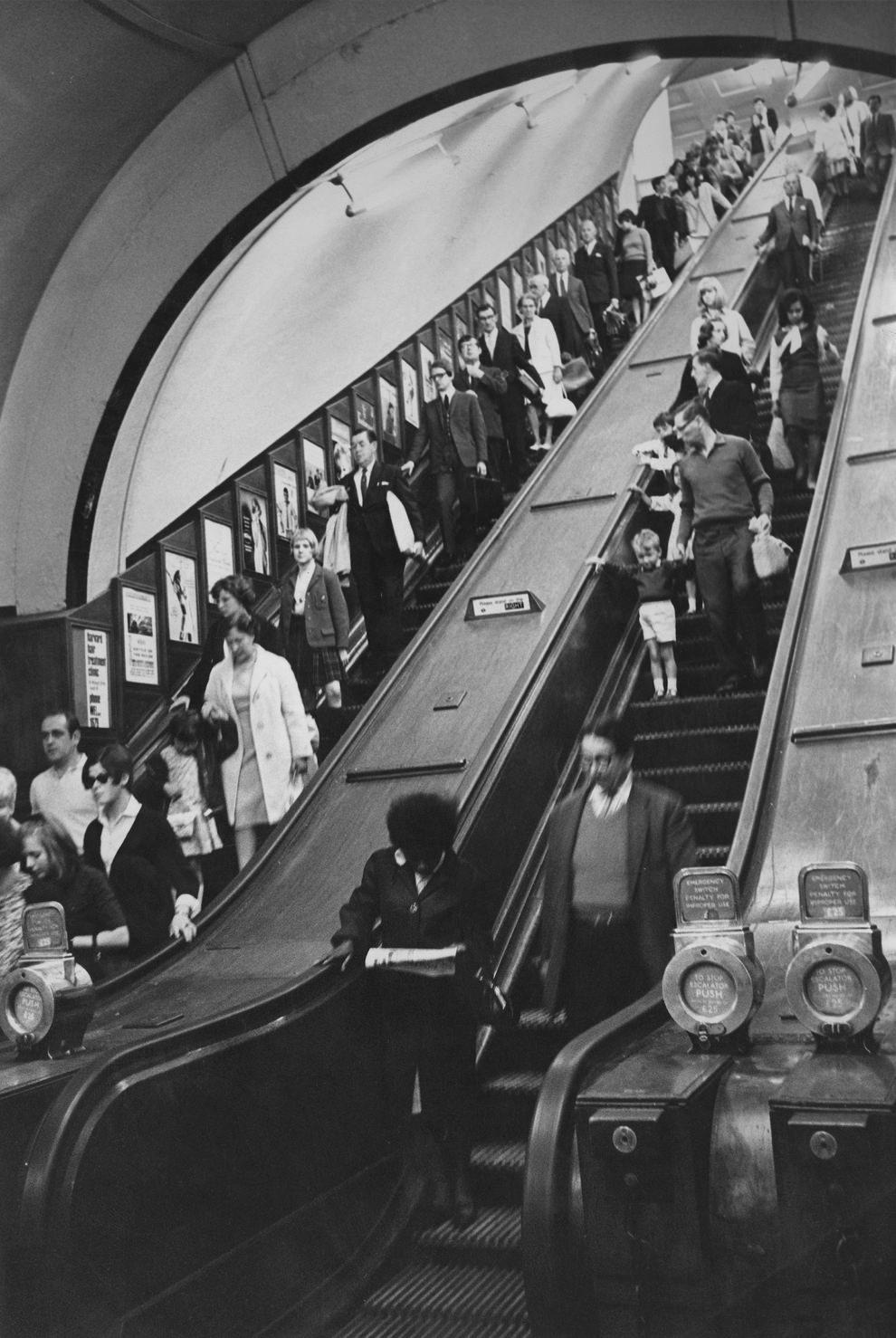
#80 Matching fur, 1966.
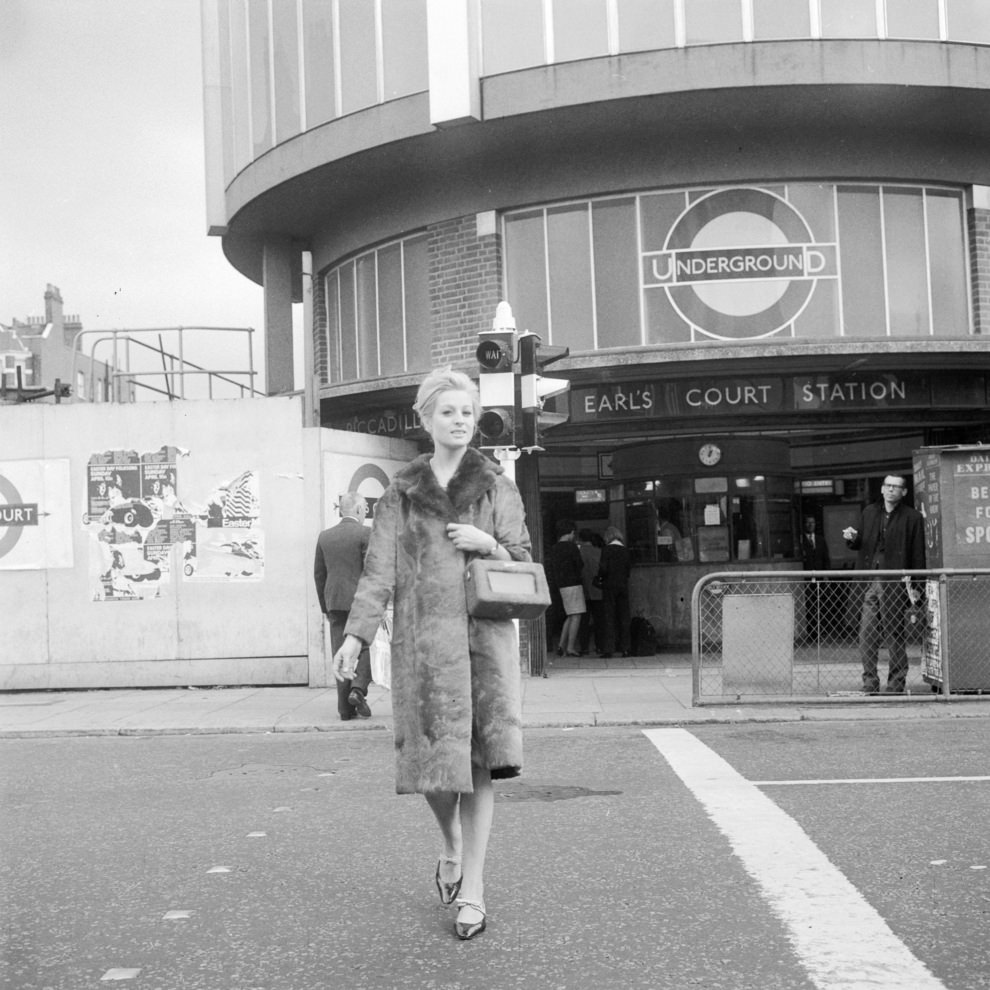
#81 Tea on the Tube, 1968.
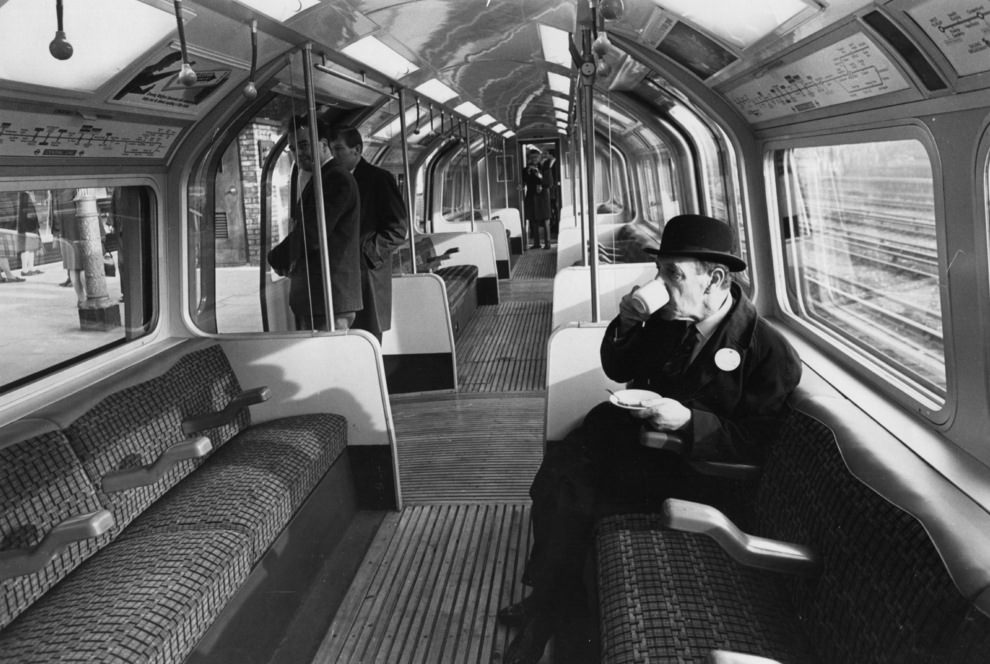
#82 Station telephones, 1968.
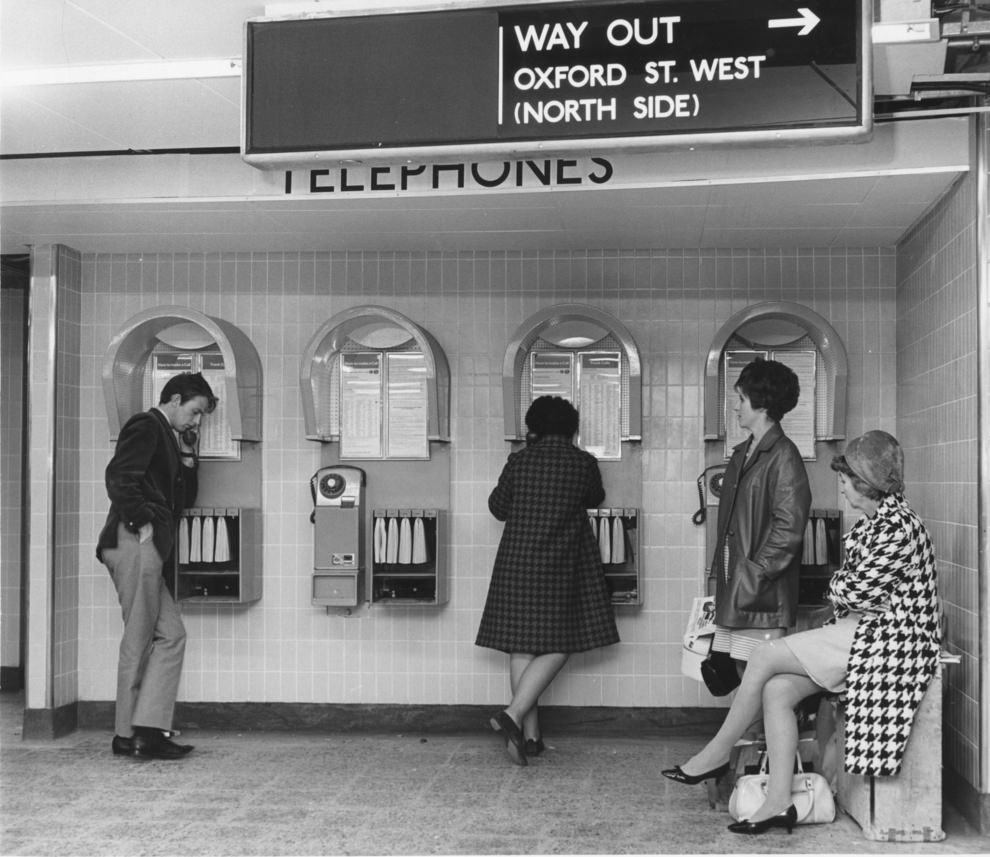
#83 Foot sore, 1969.
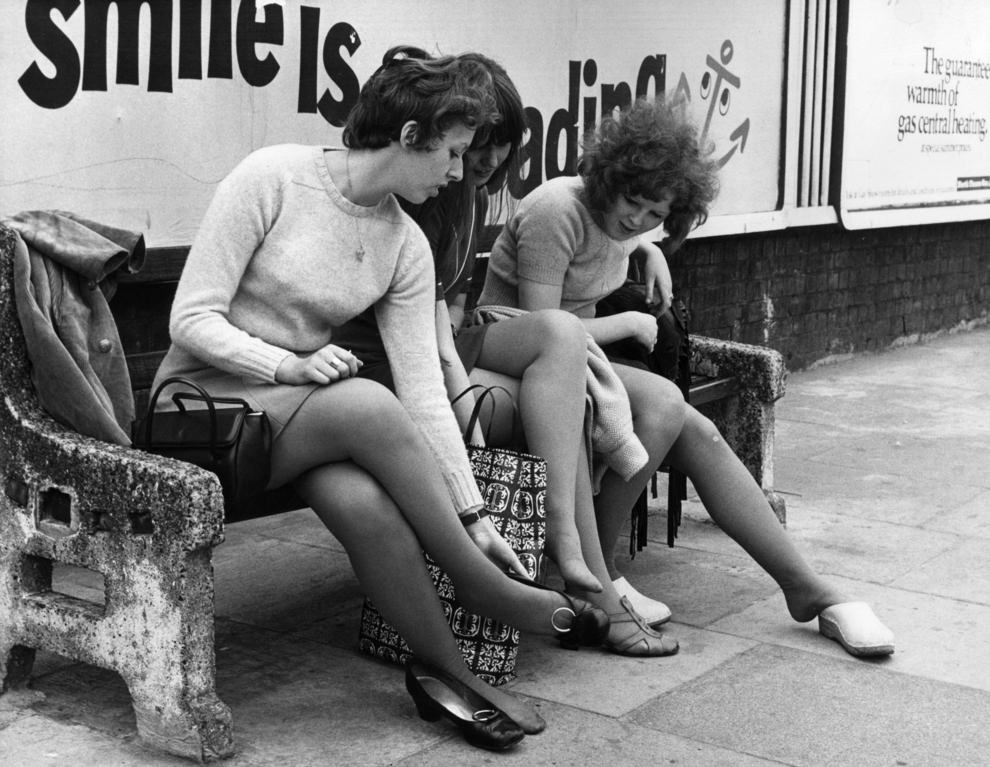
#84 Bus queue, 1969.
